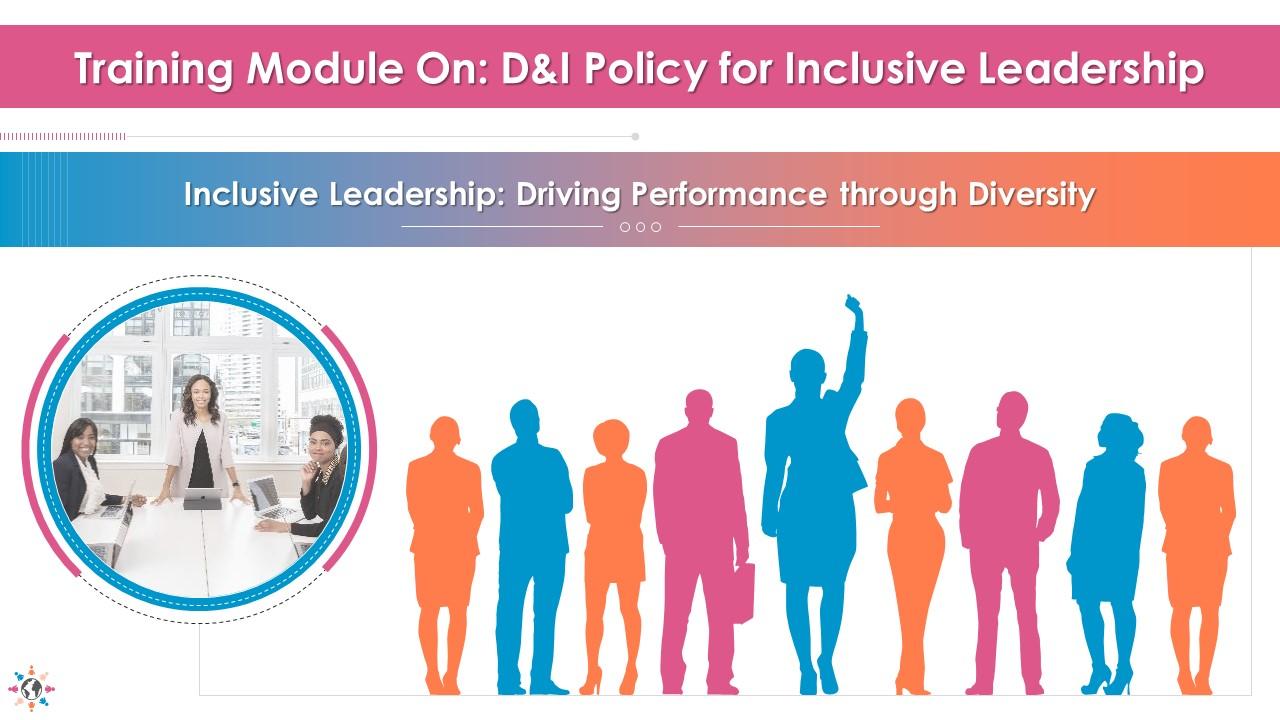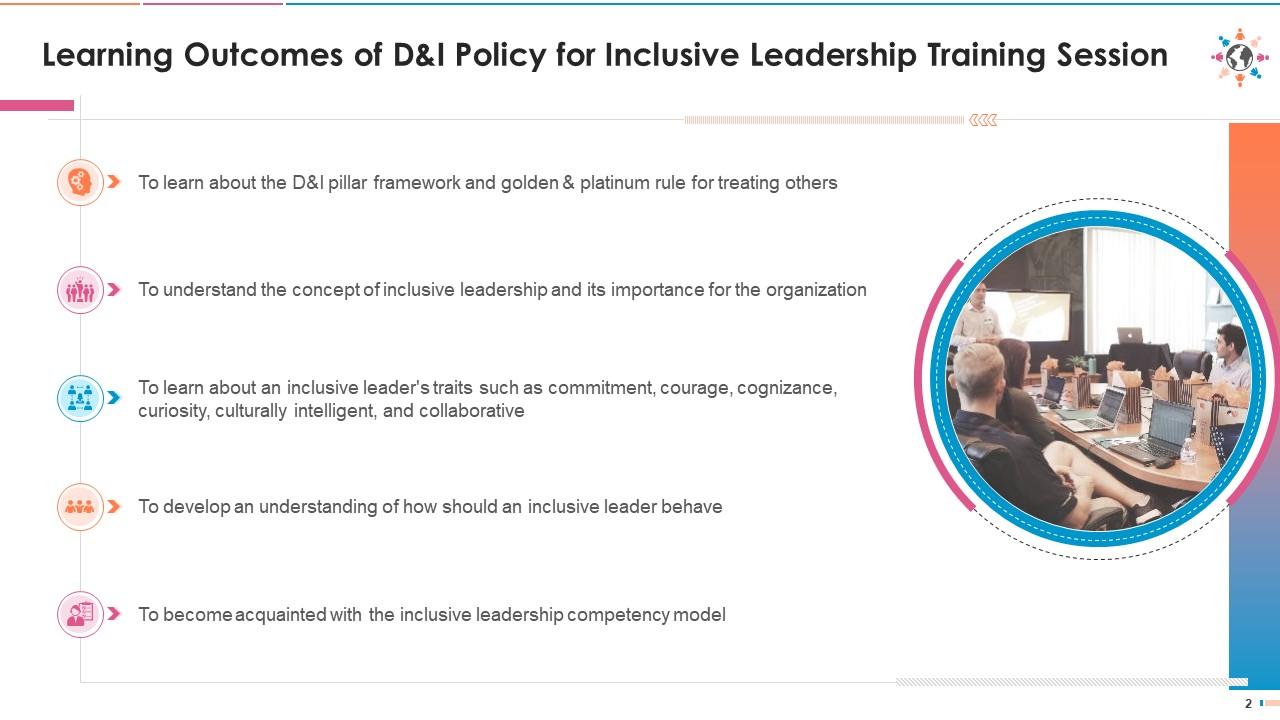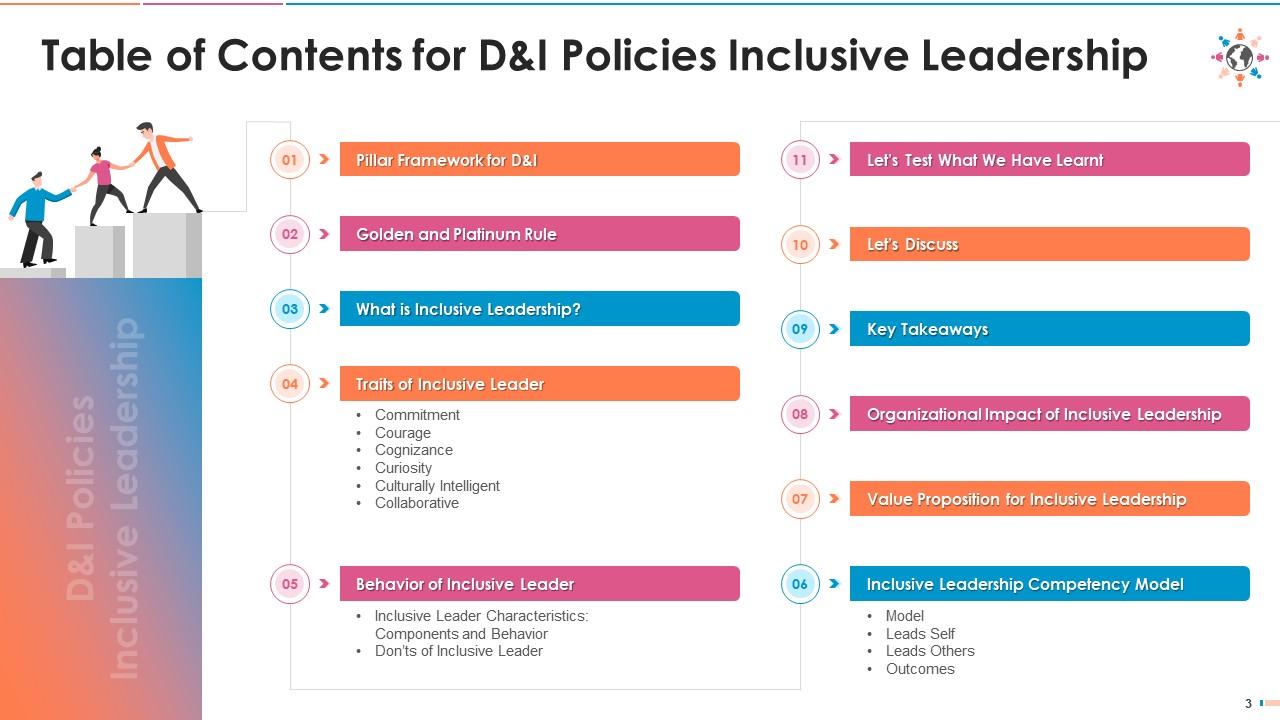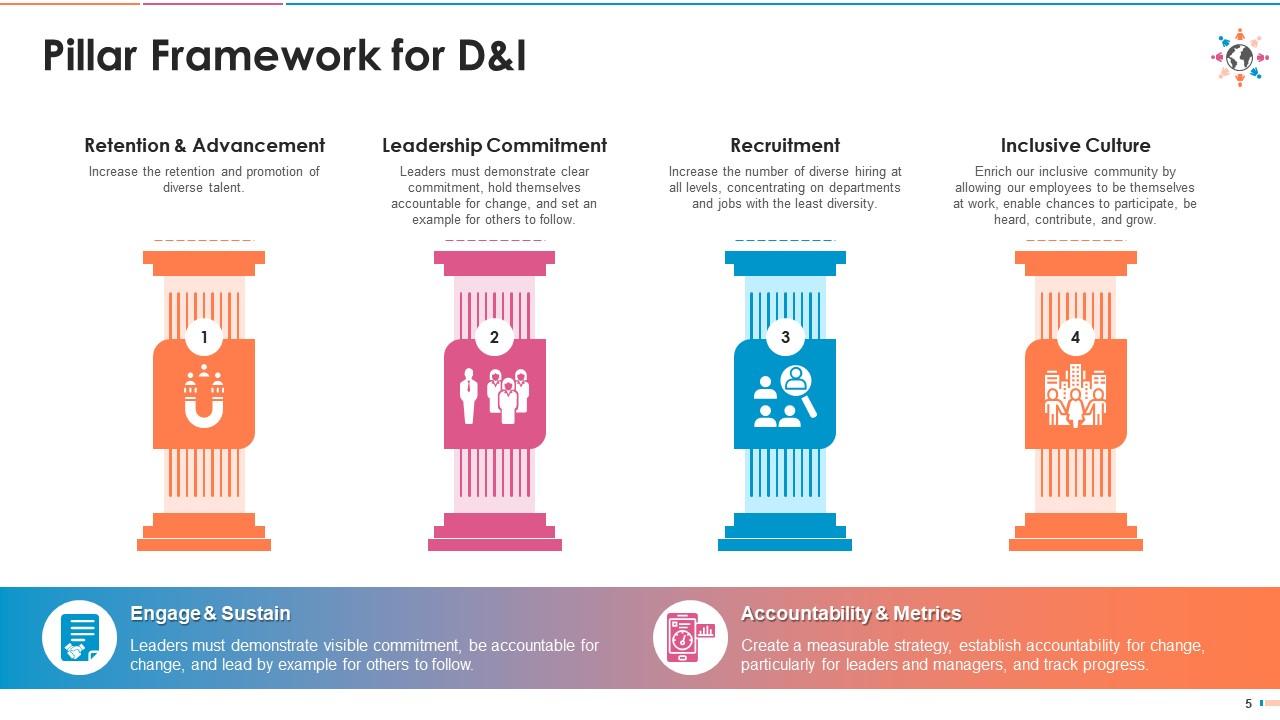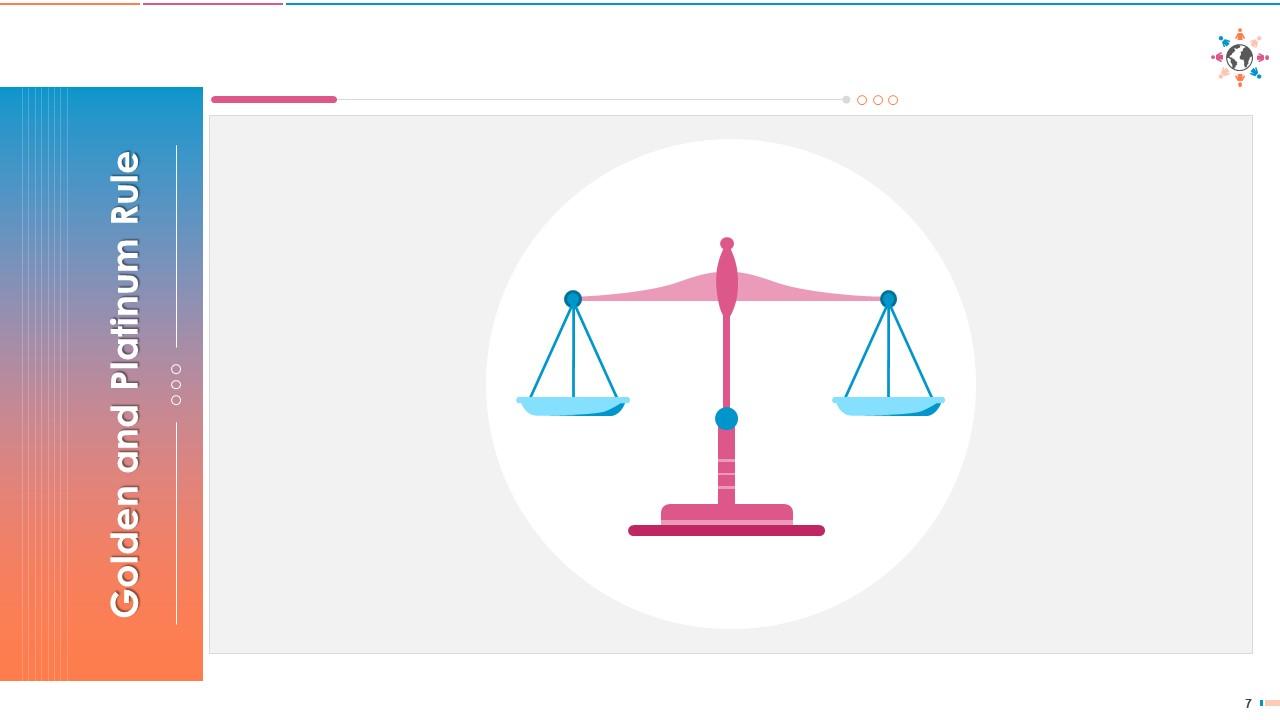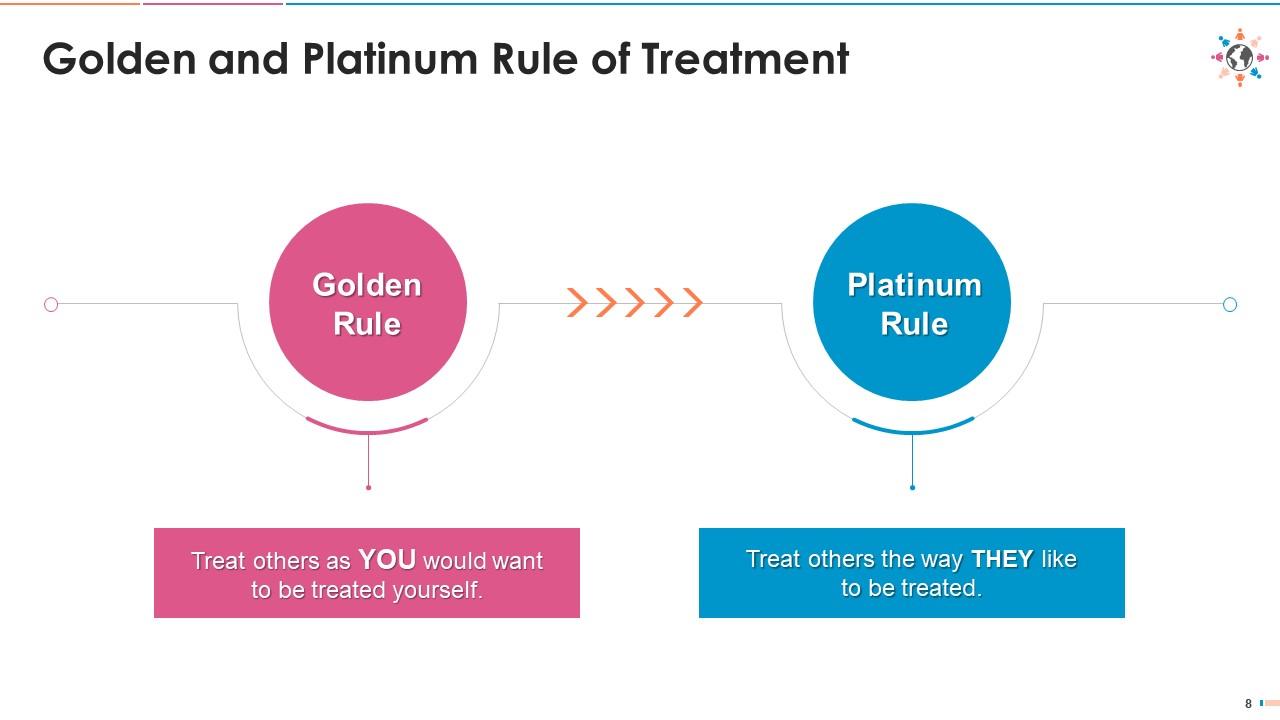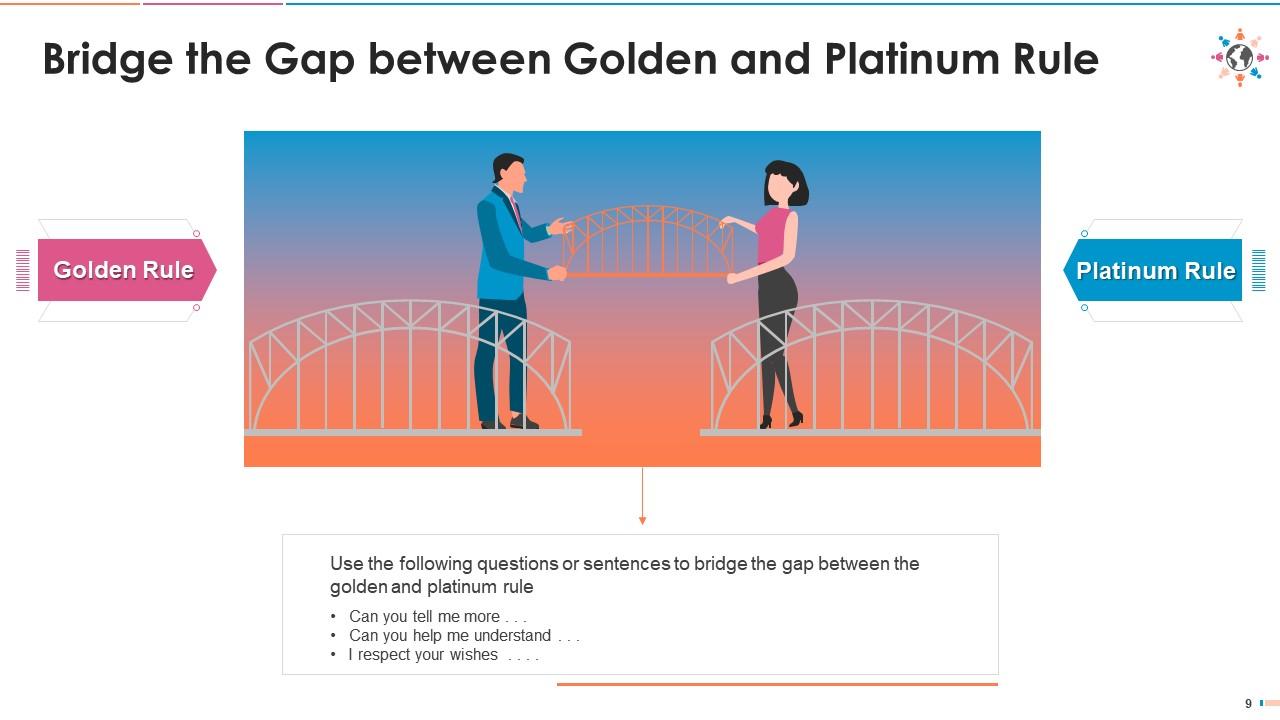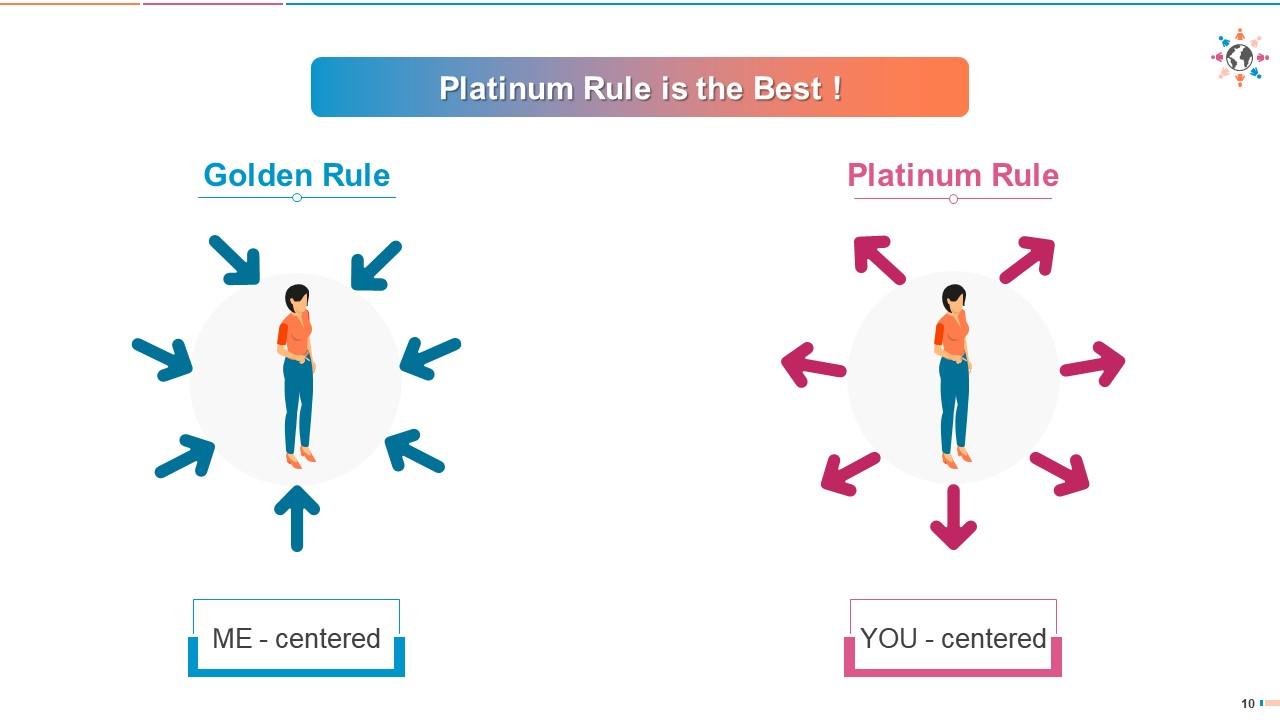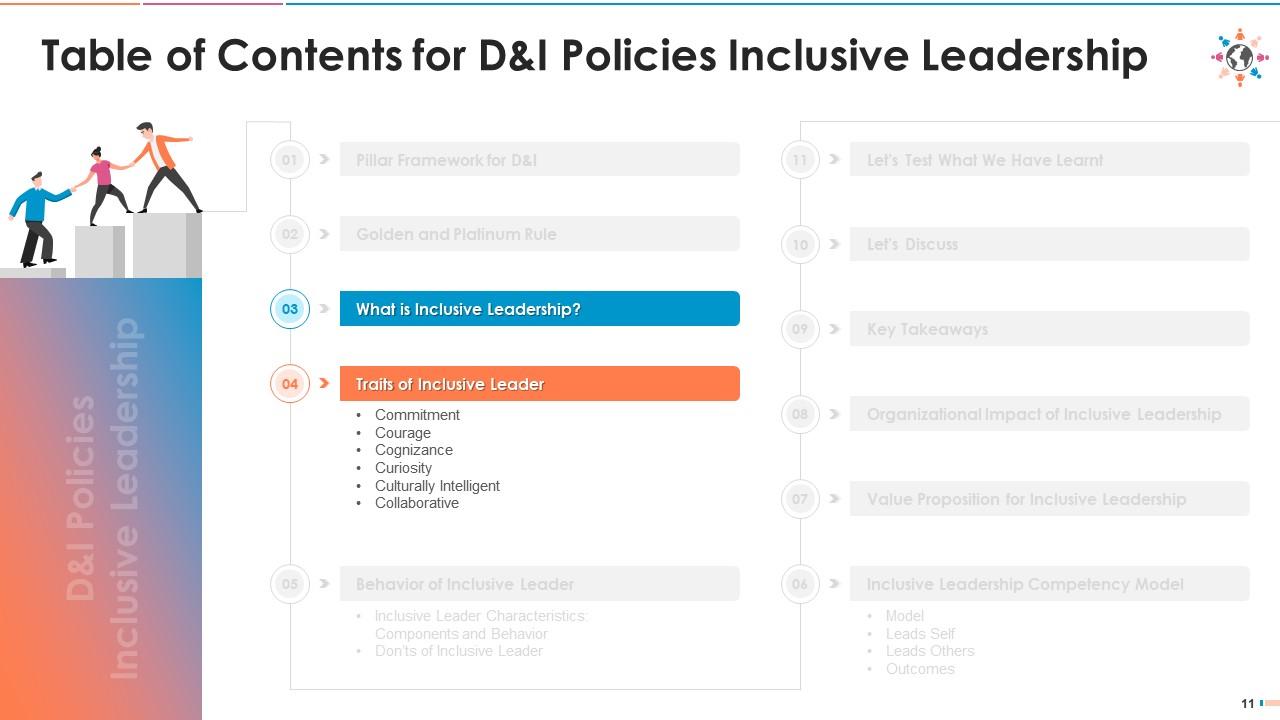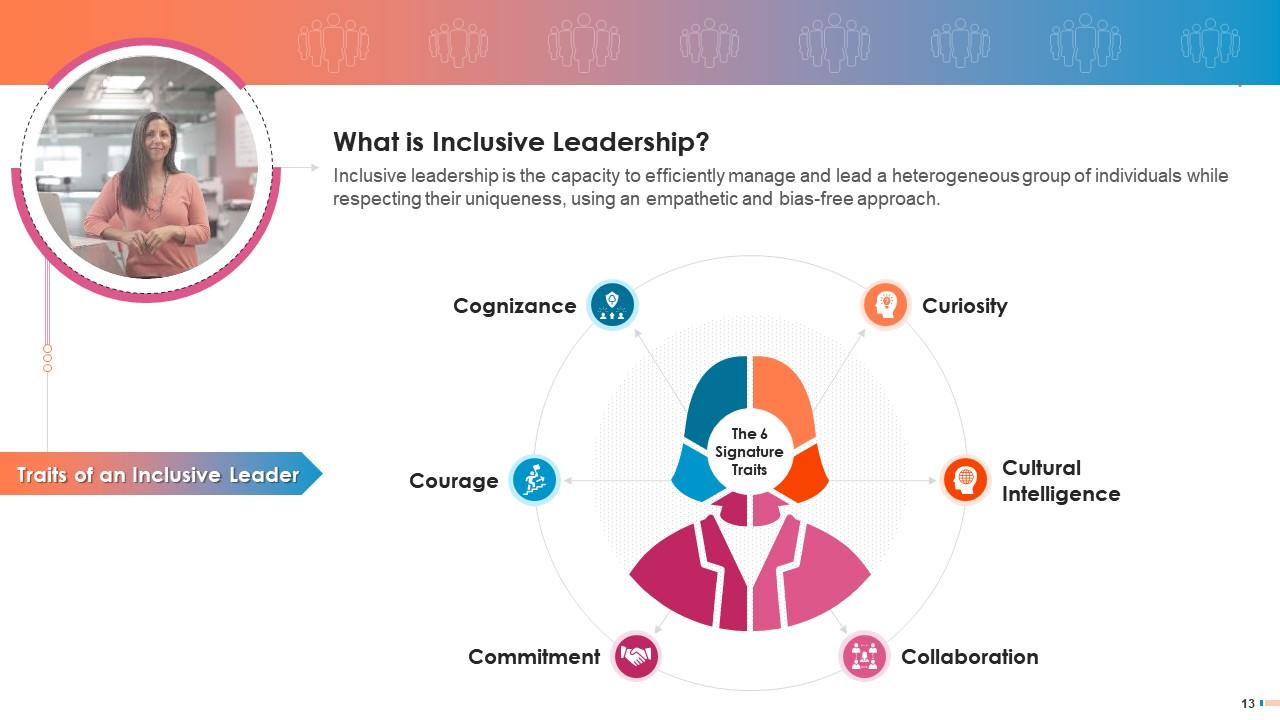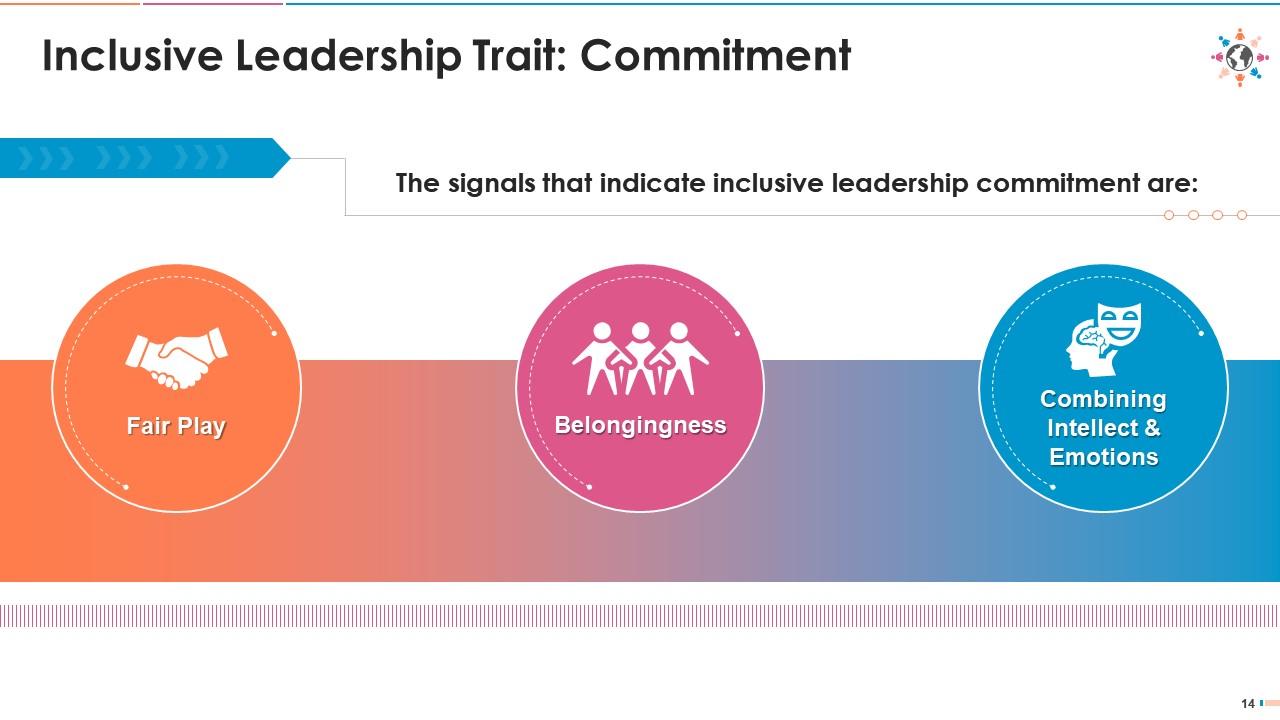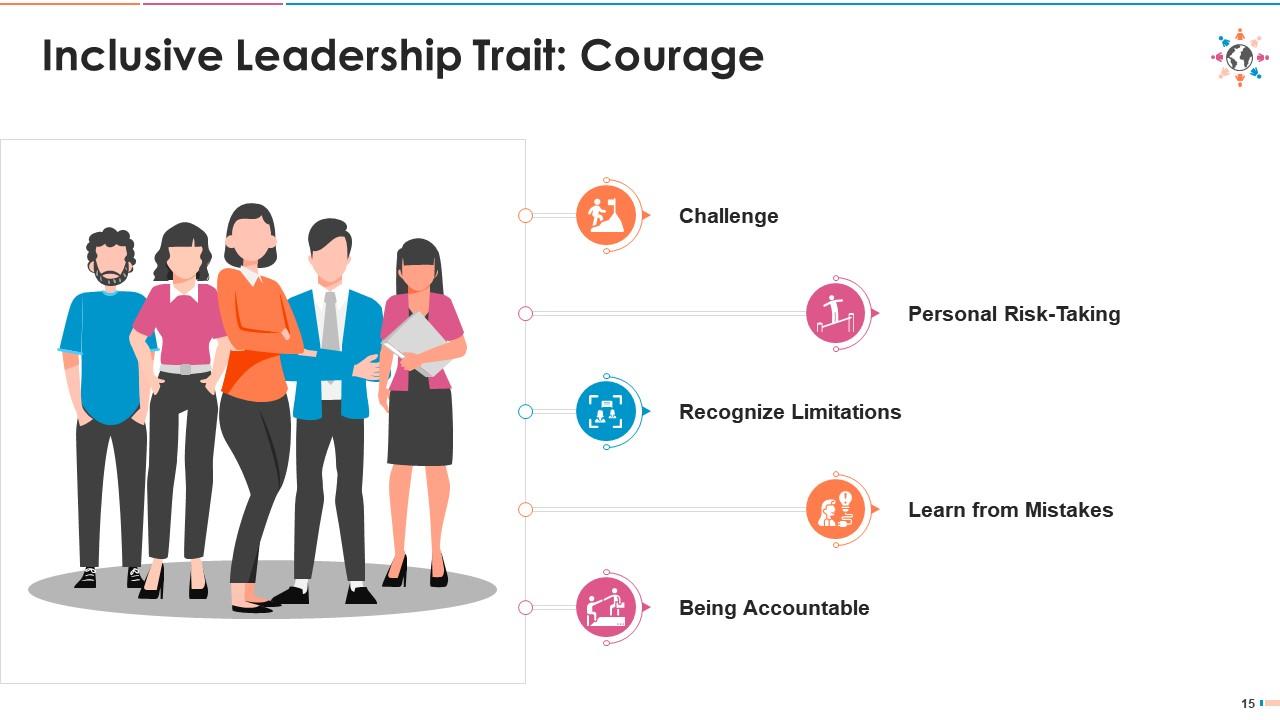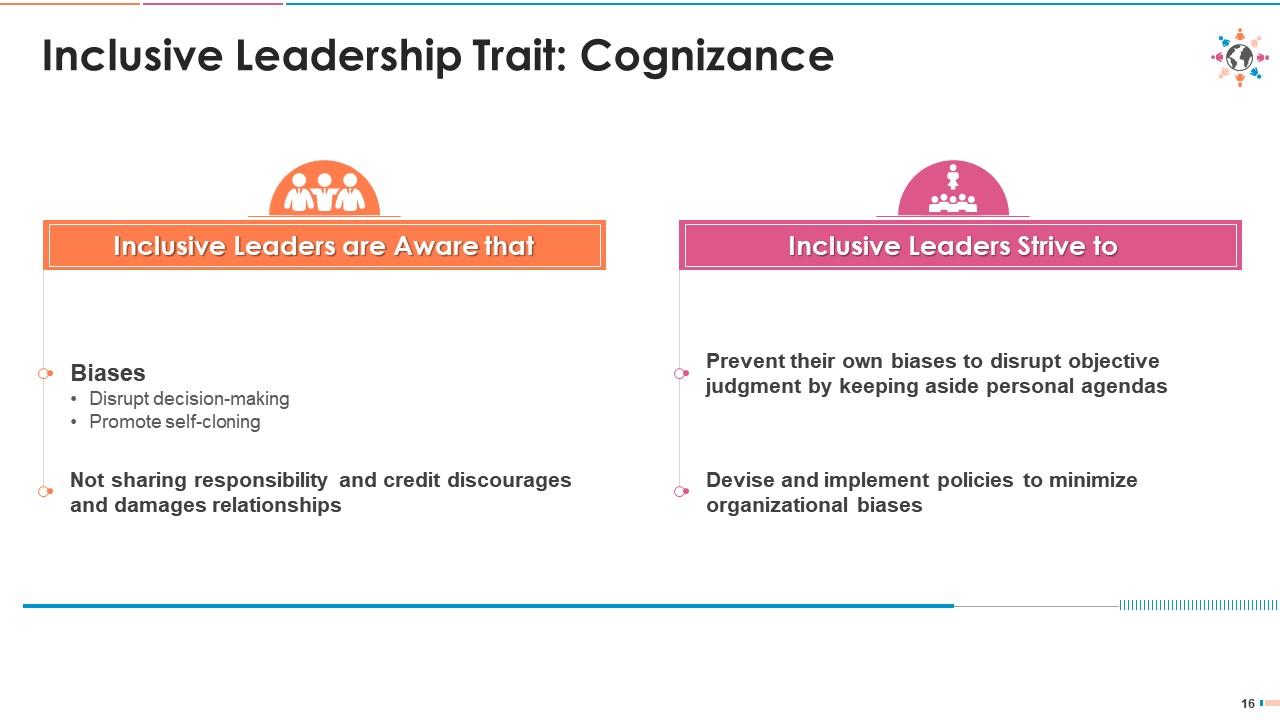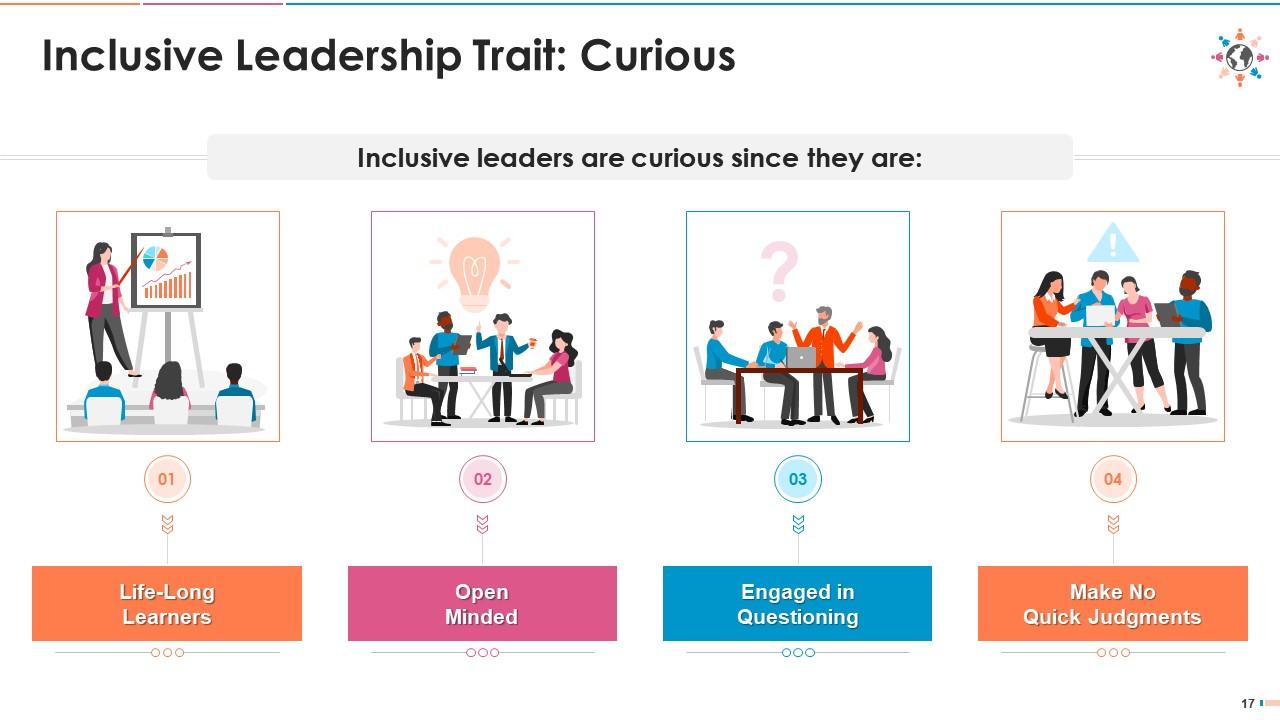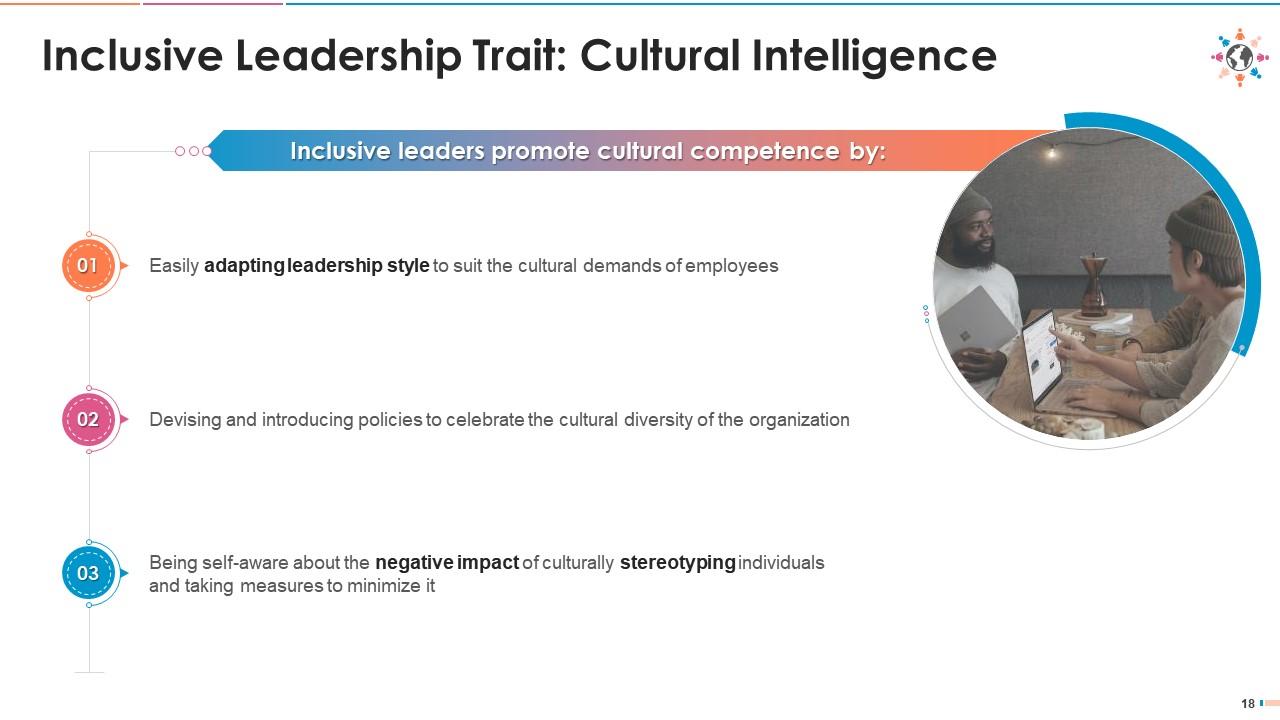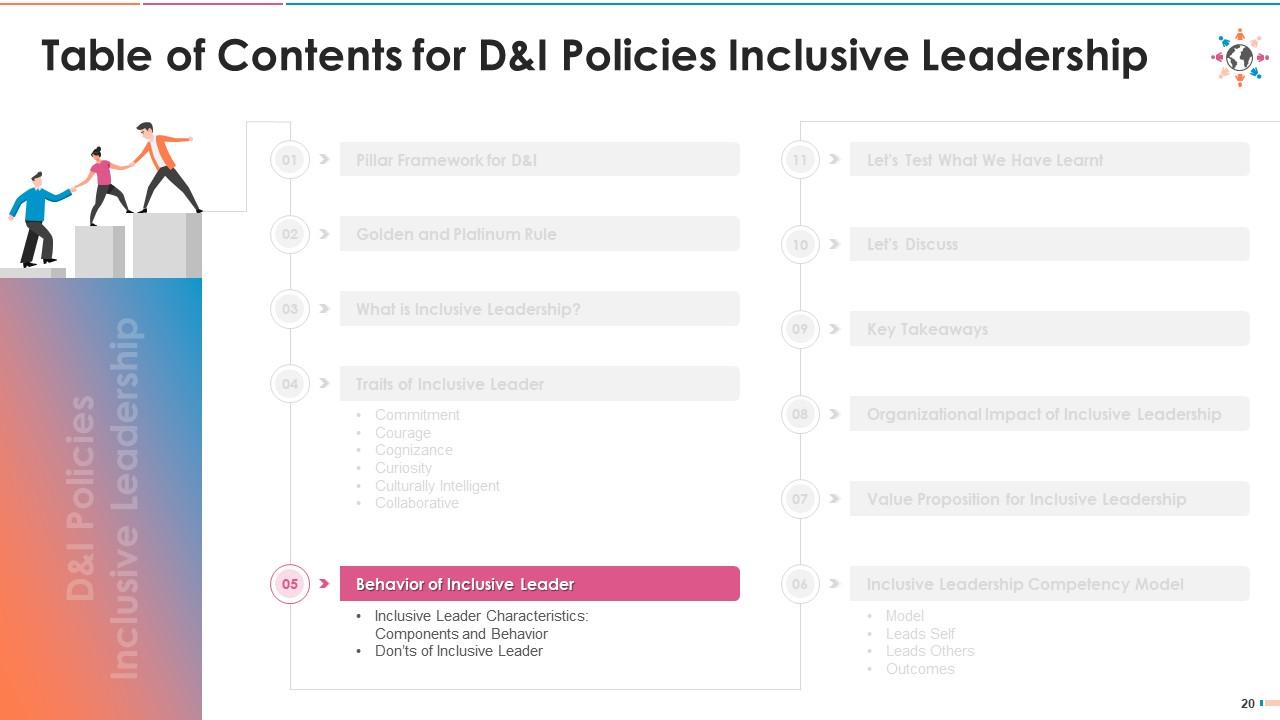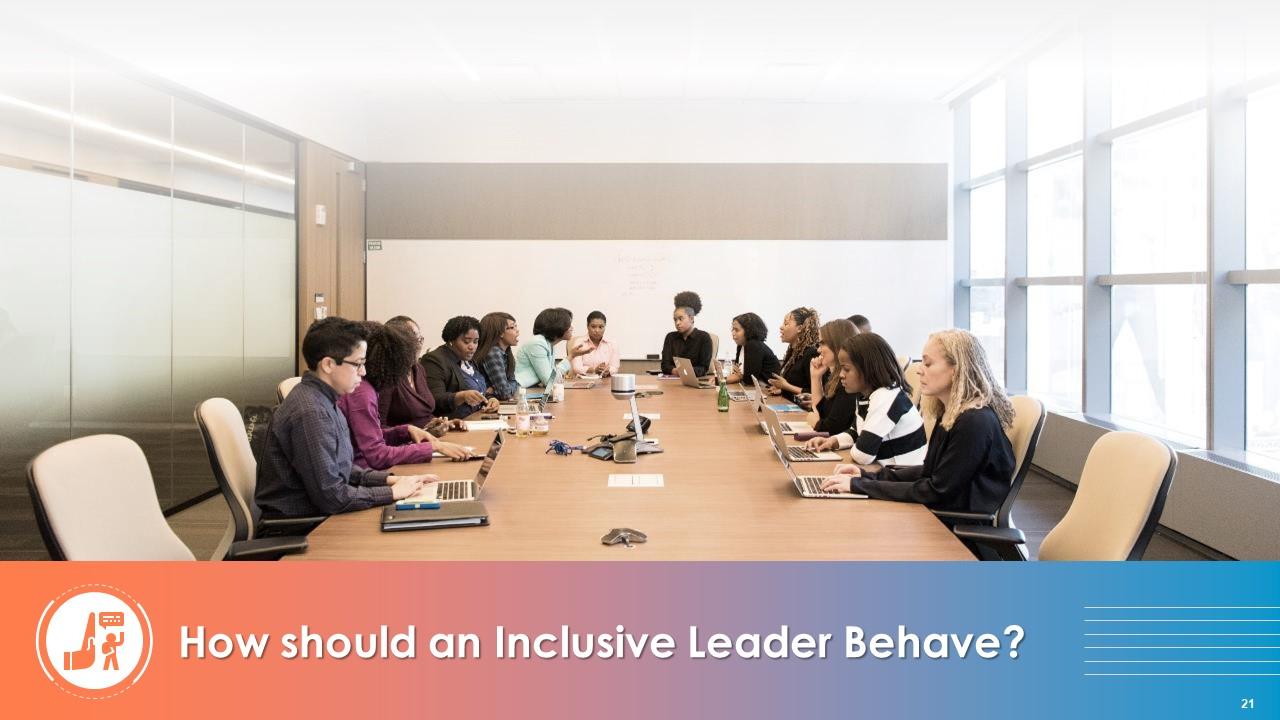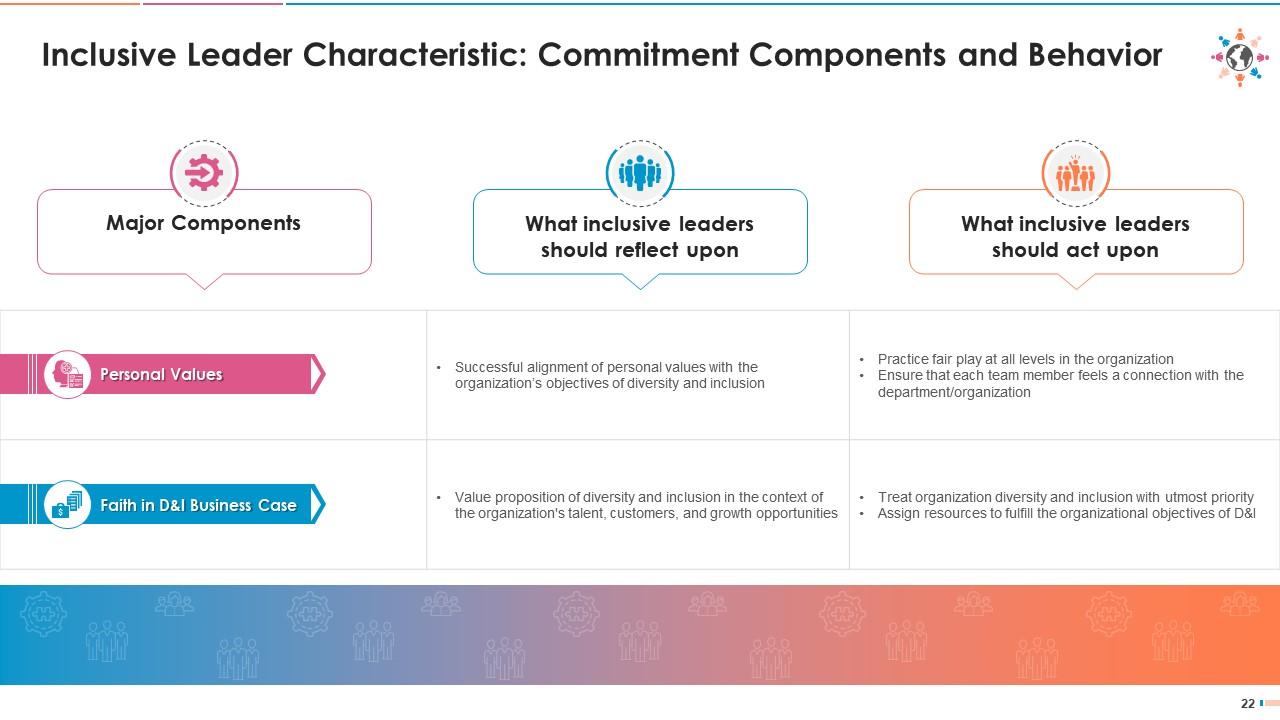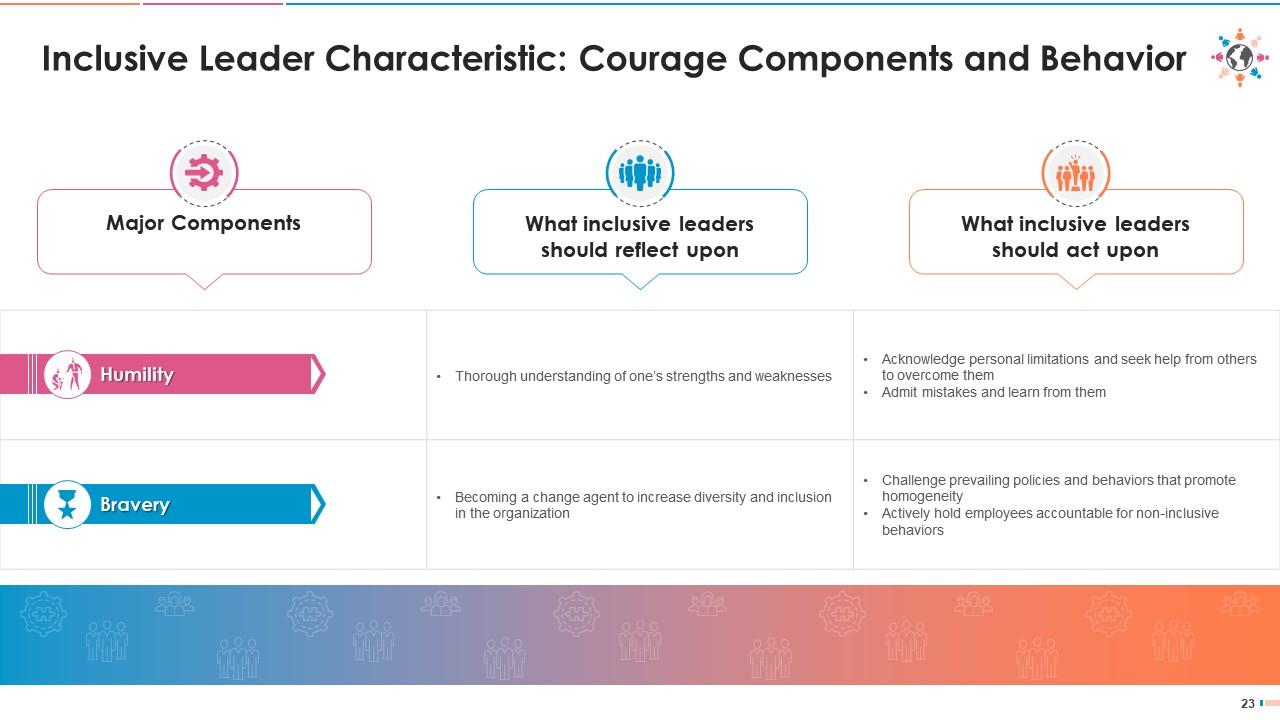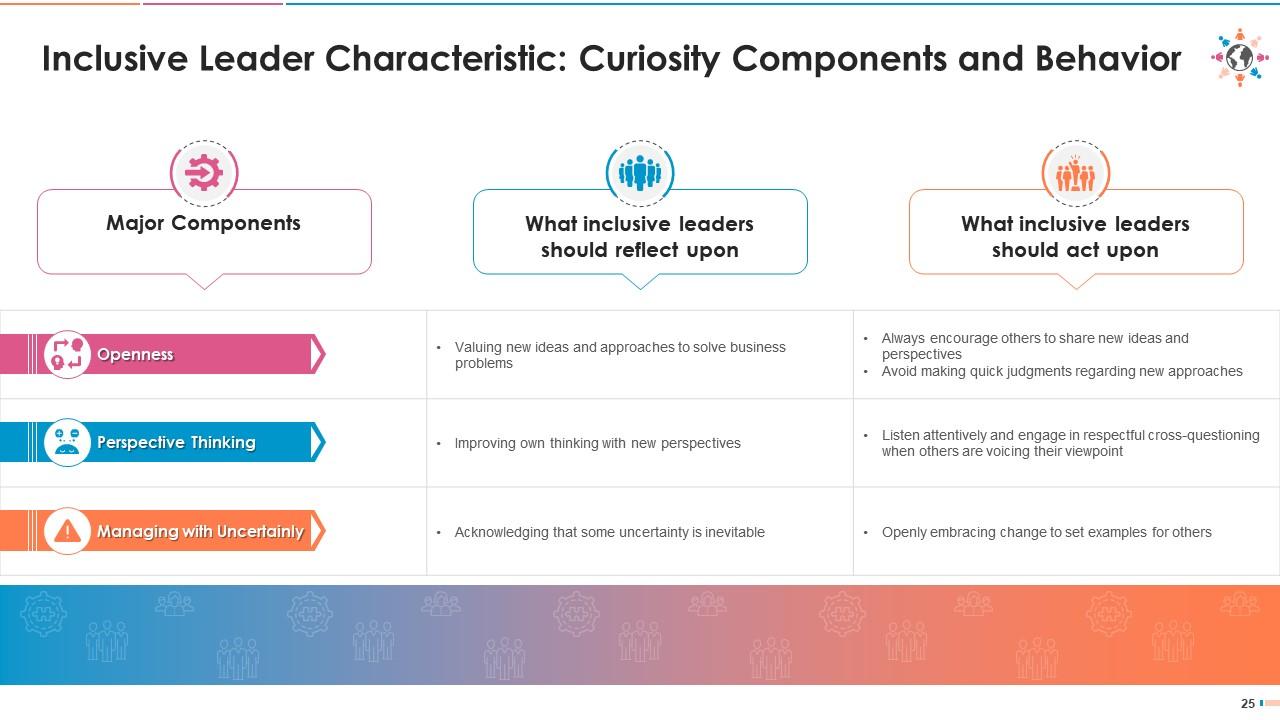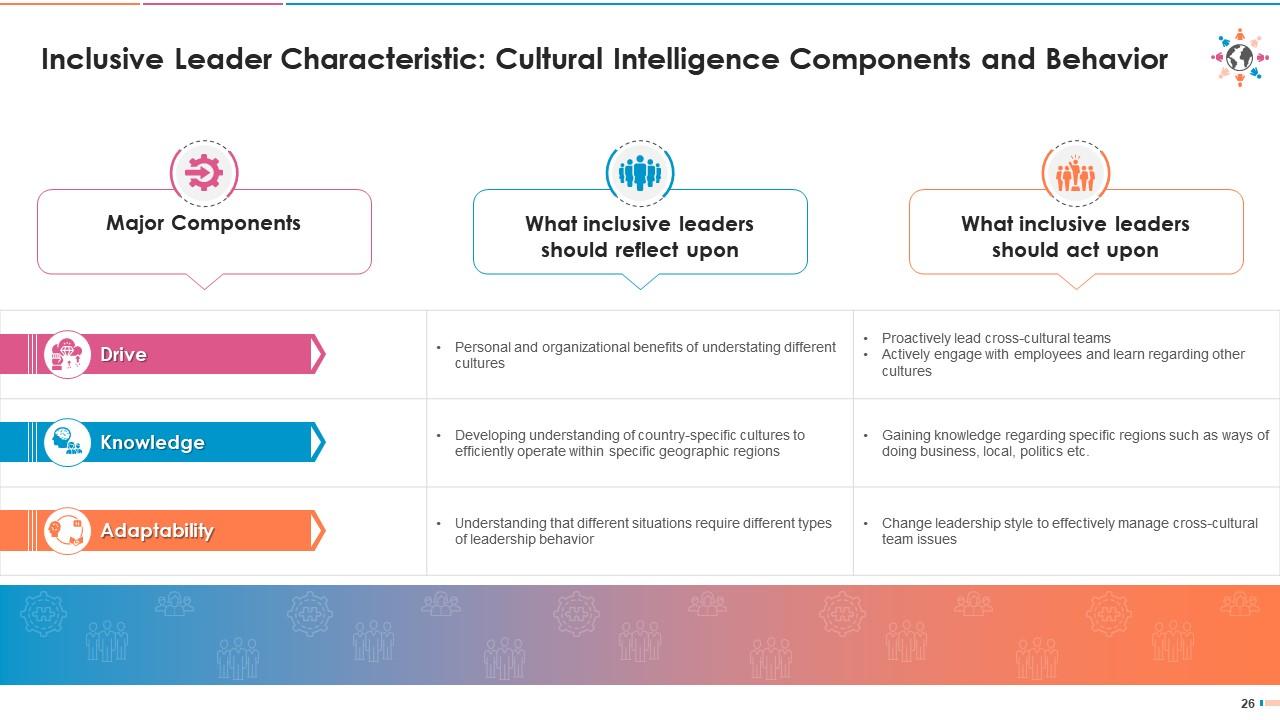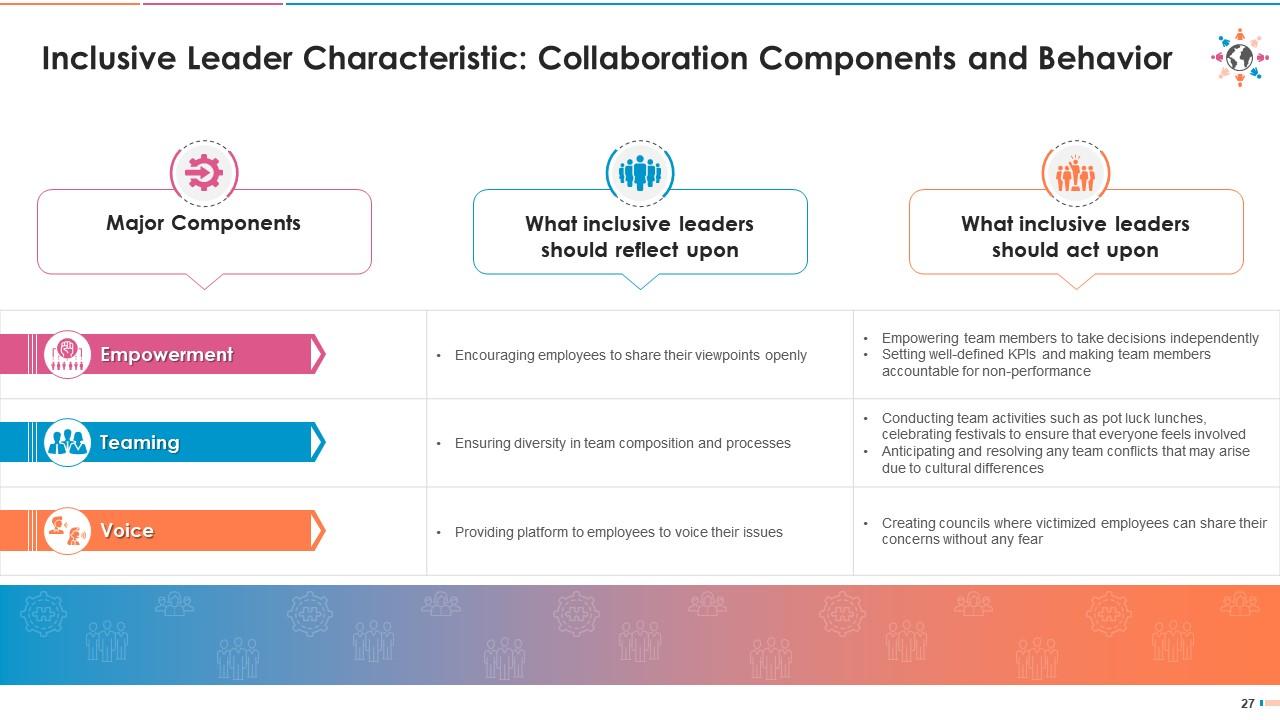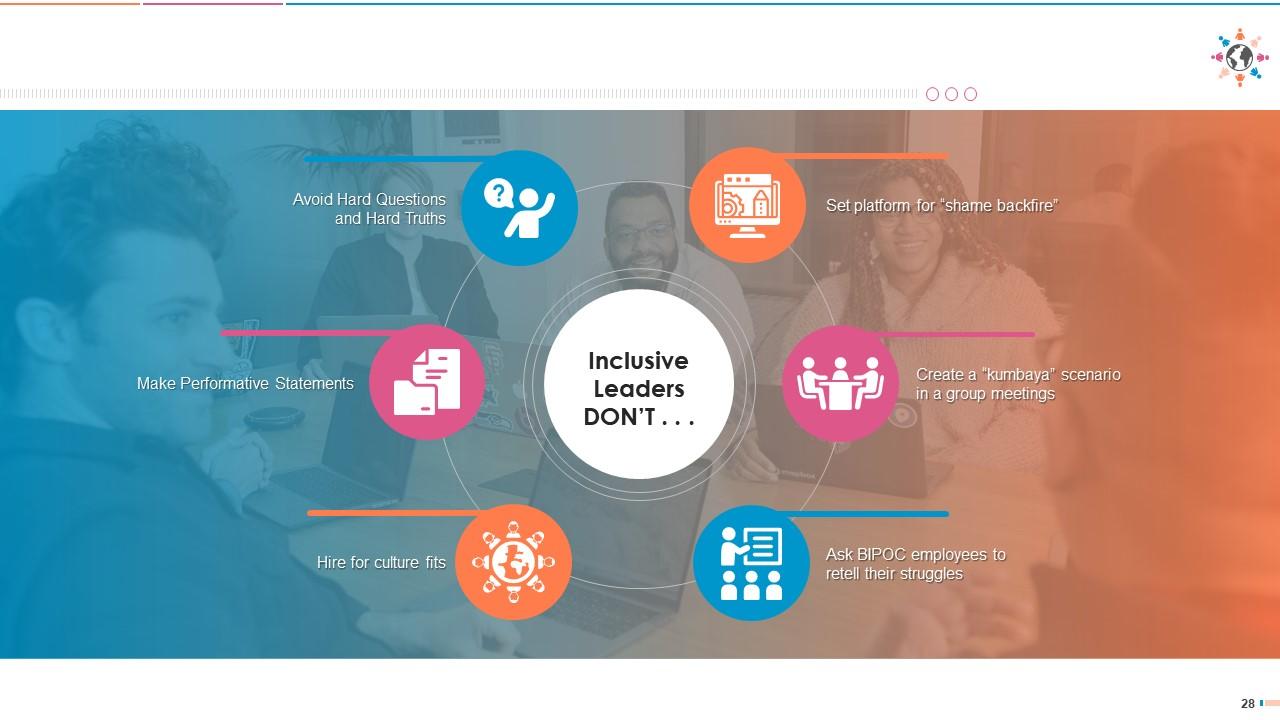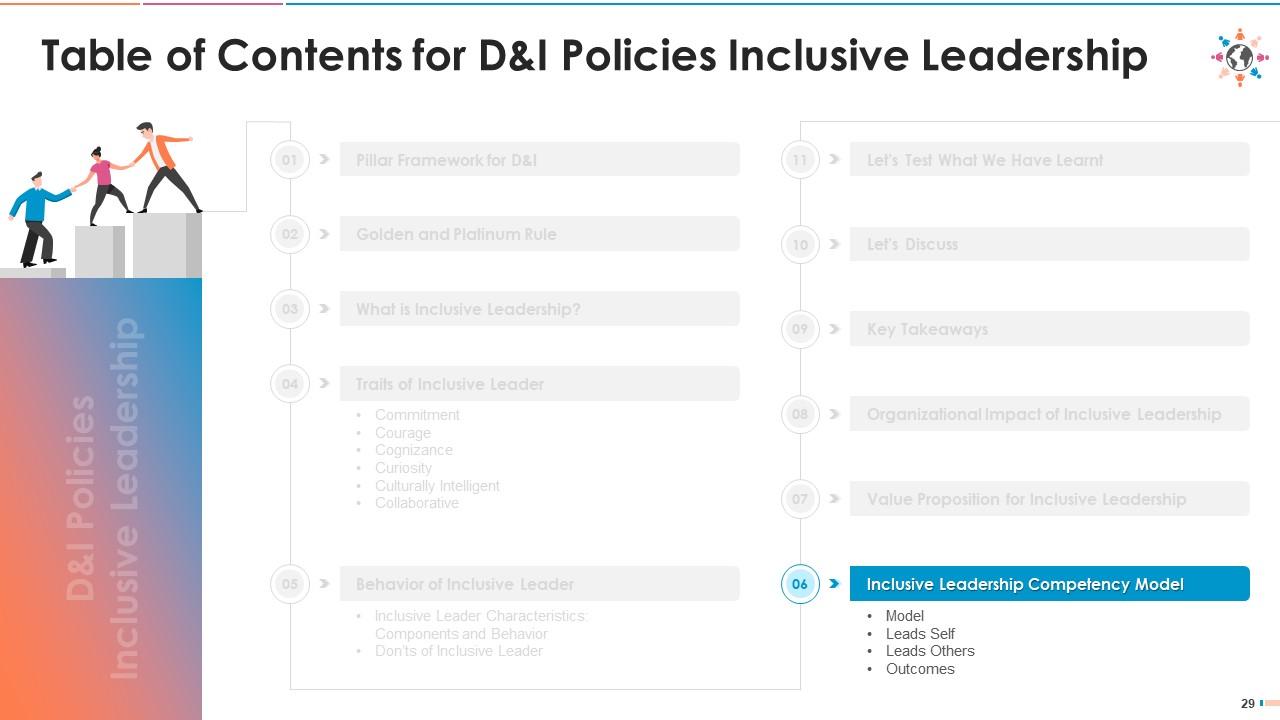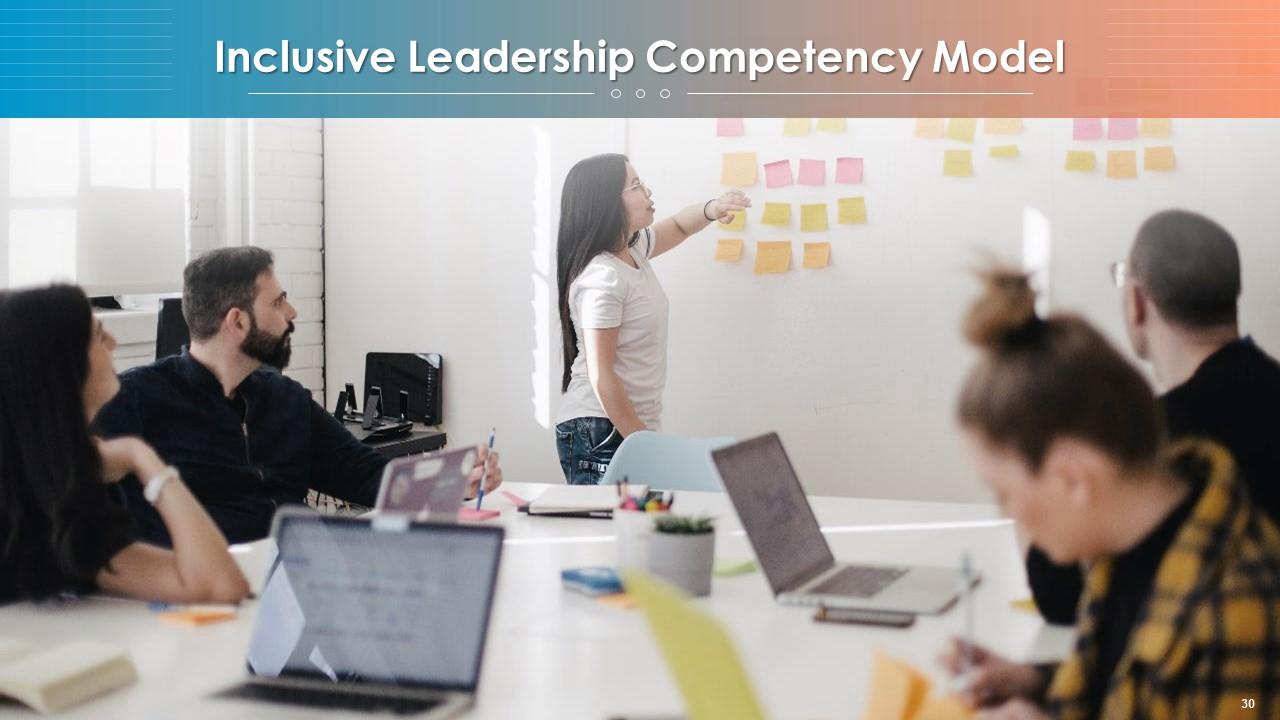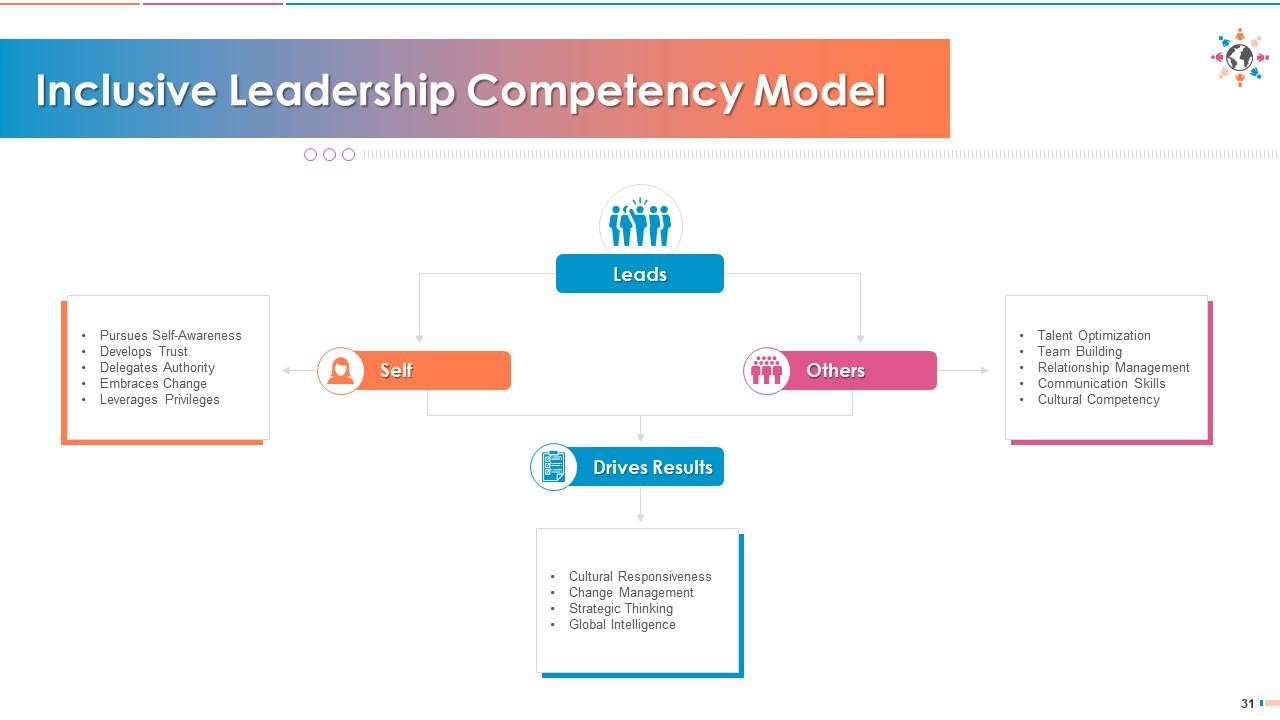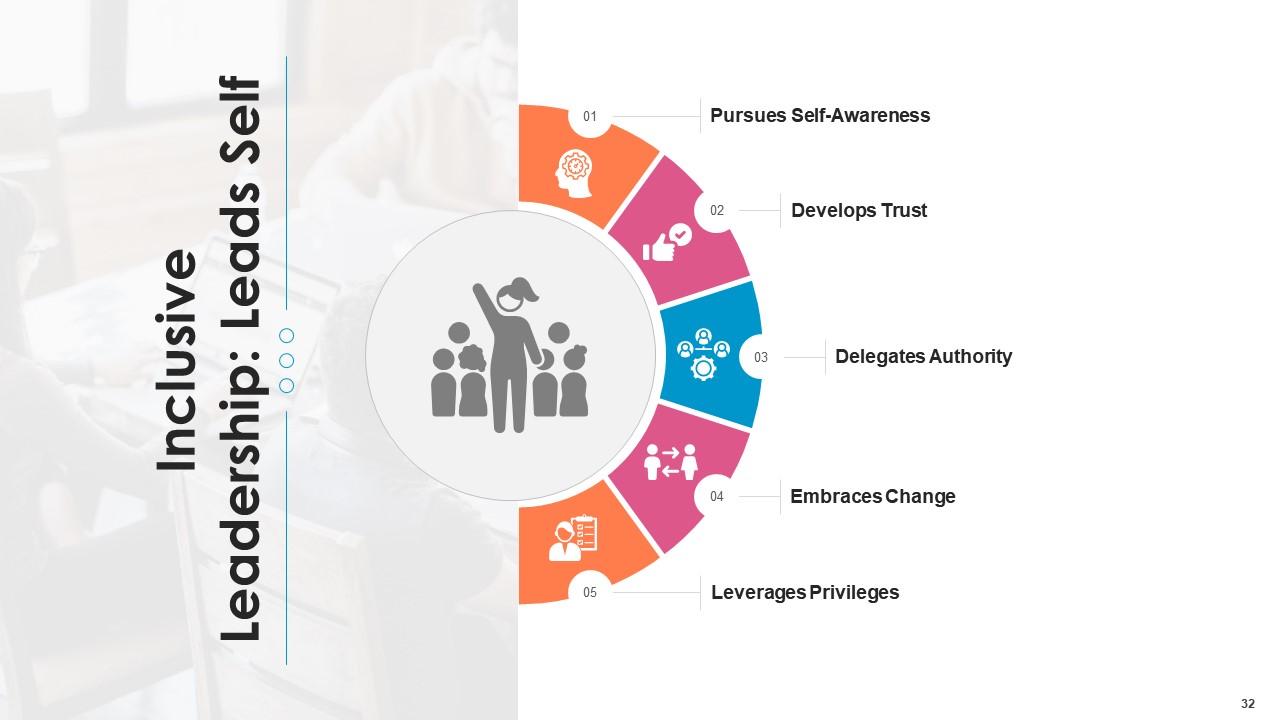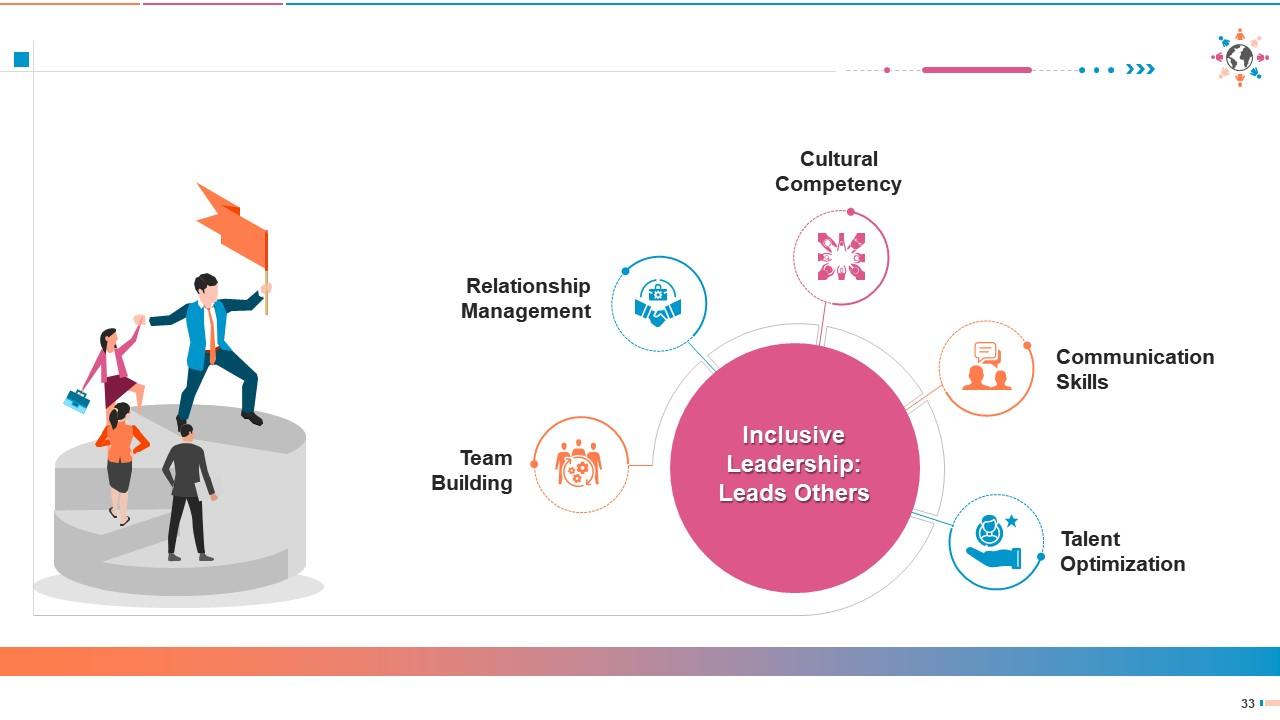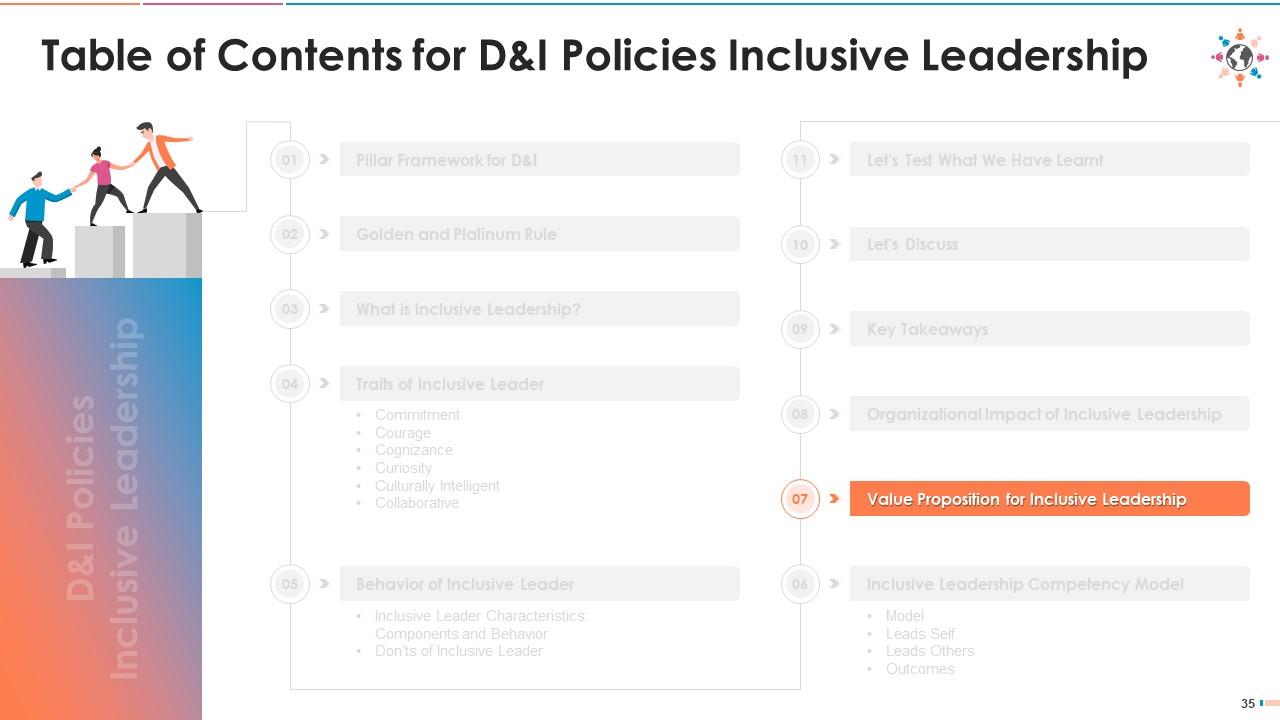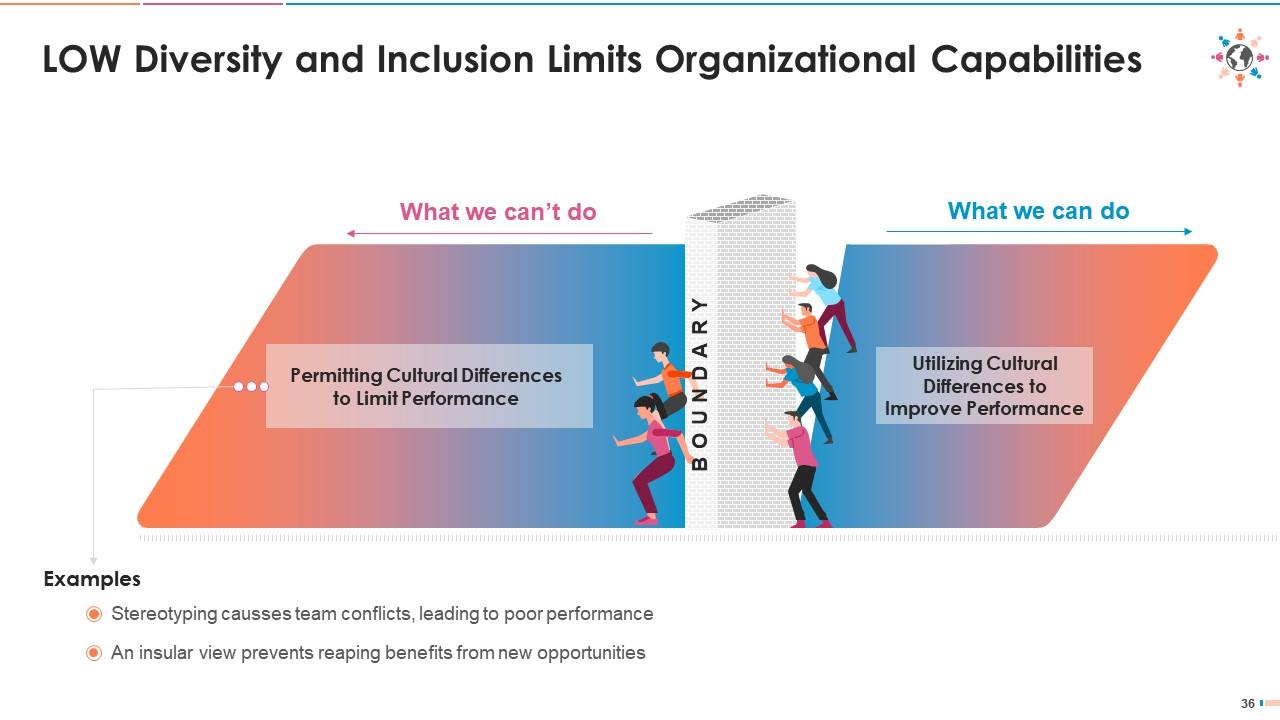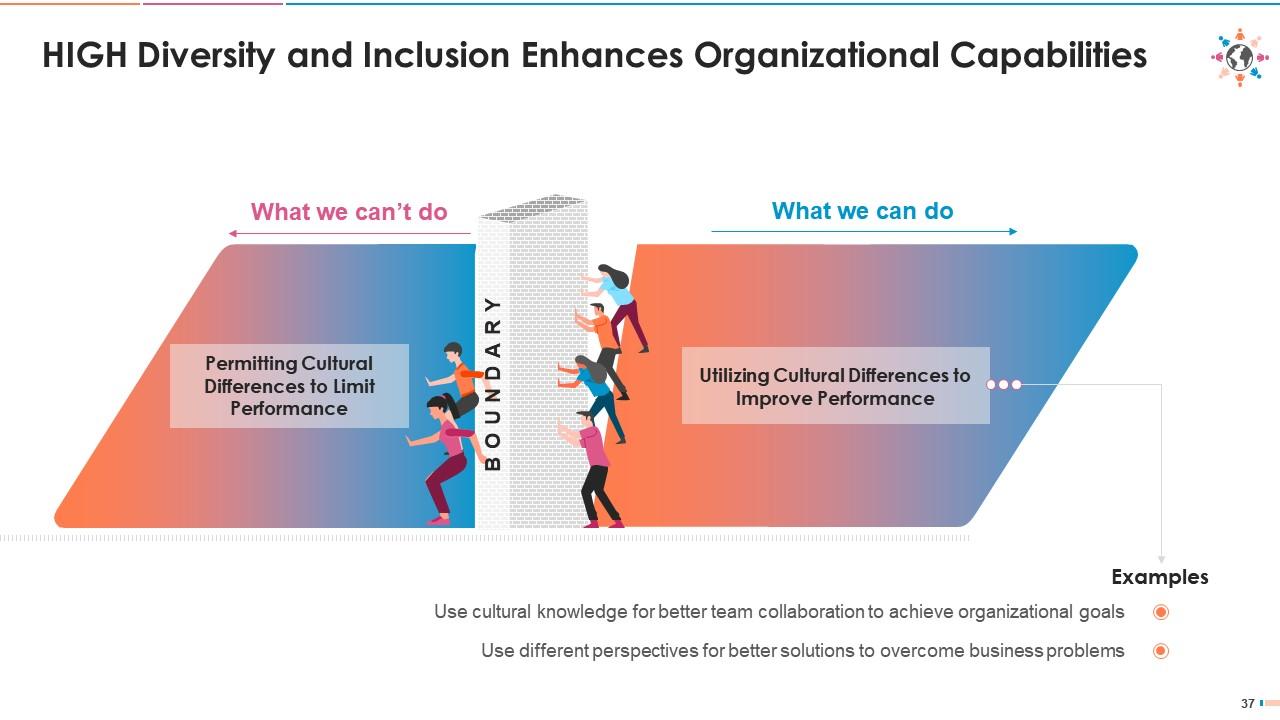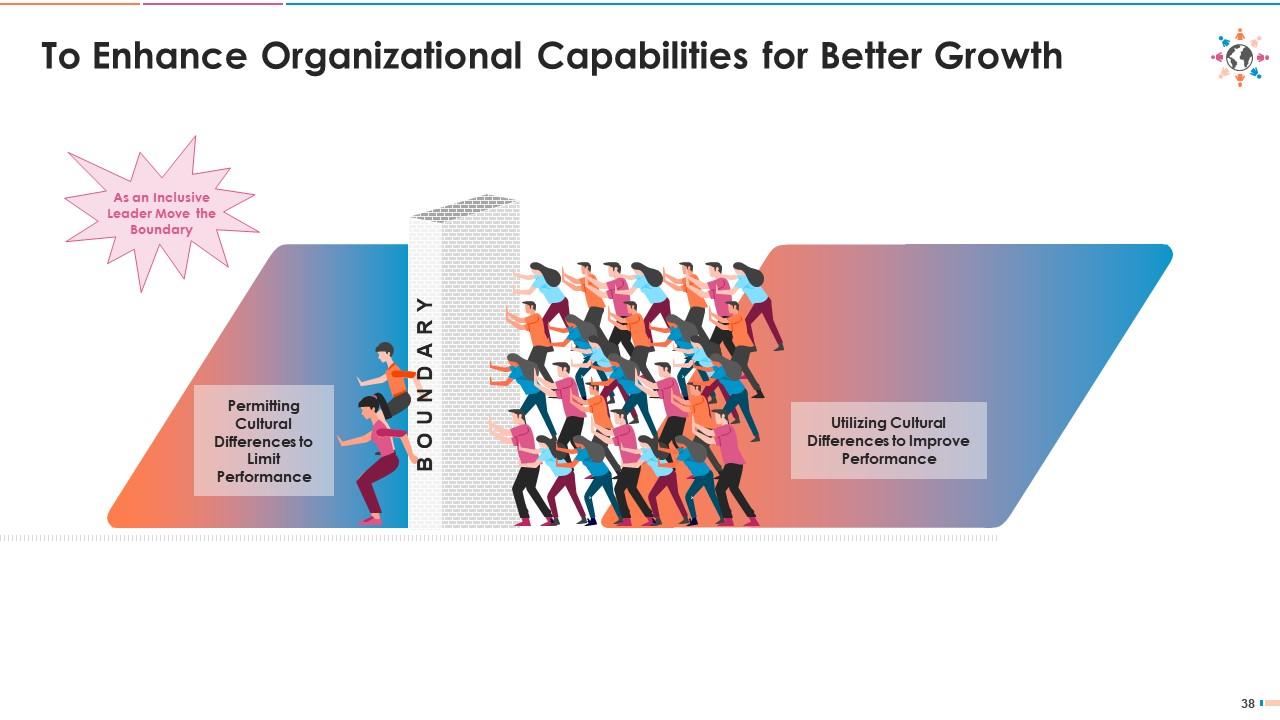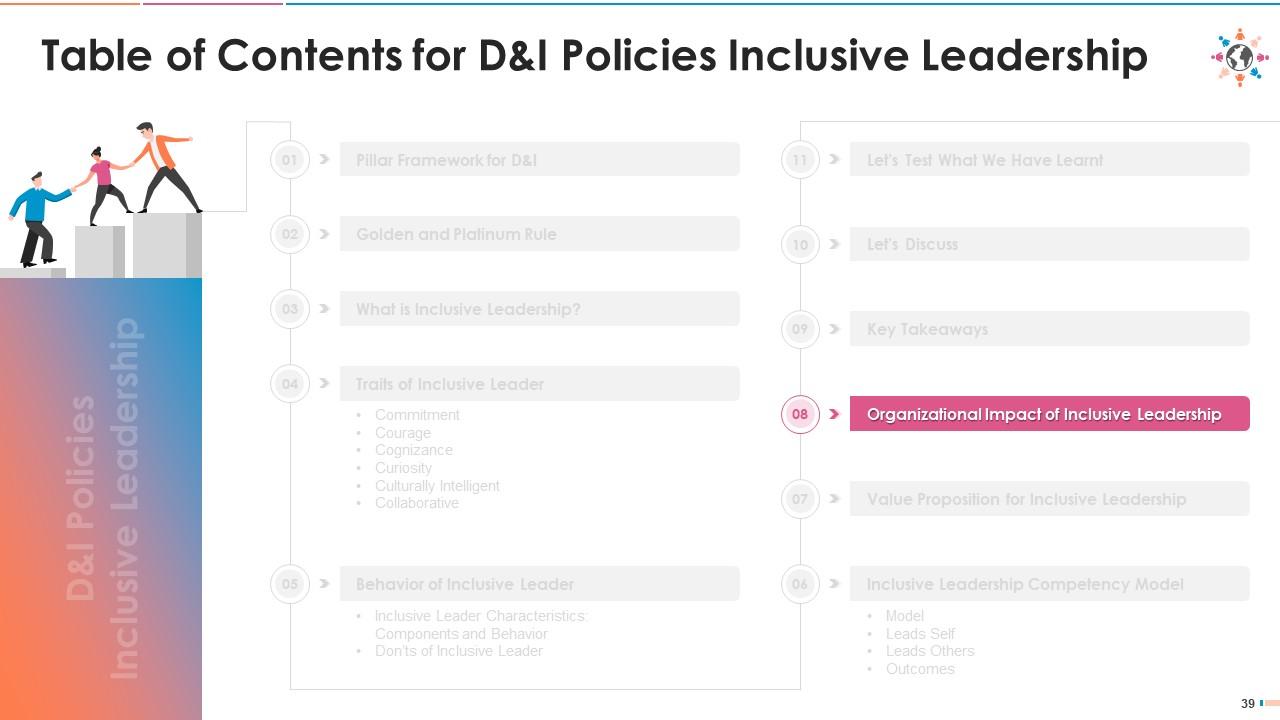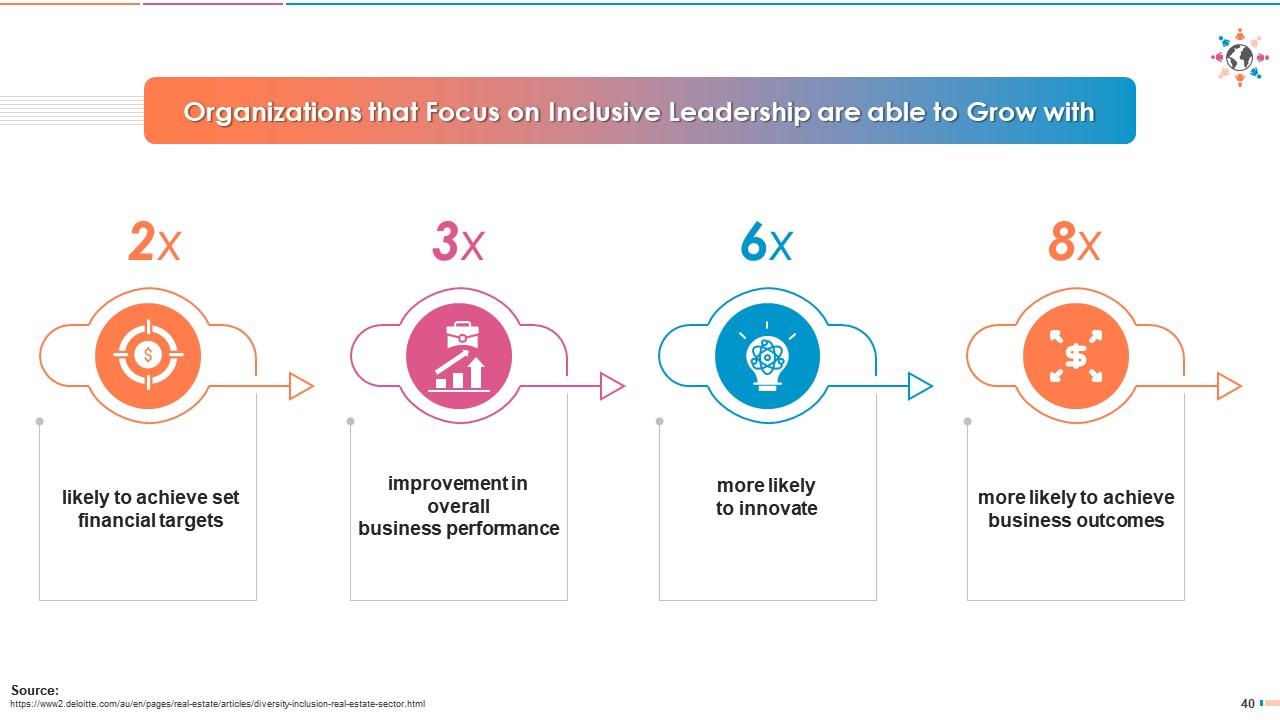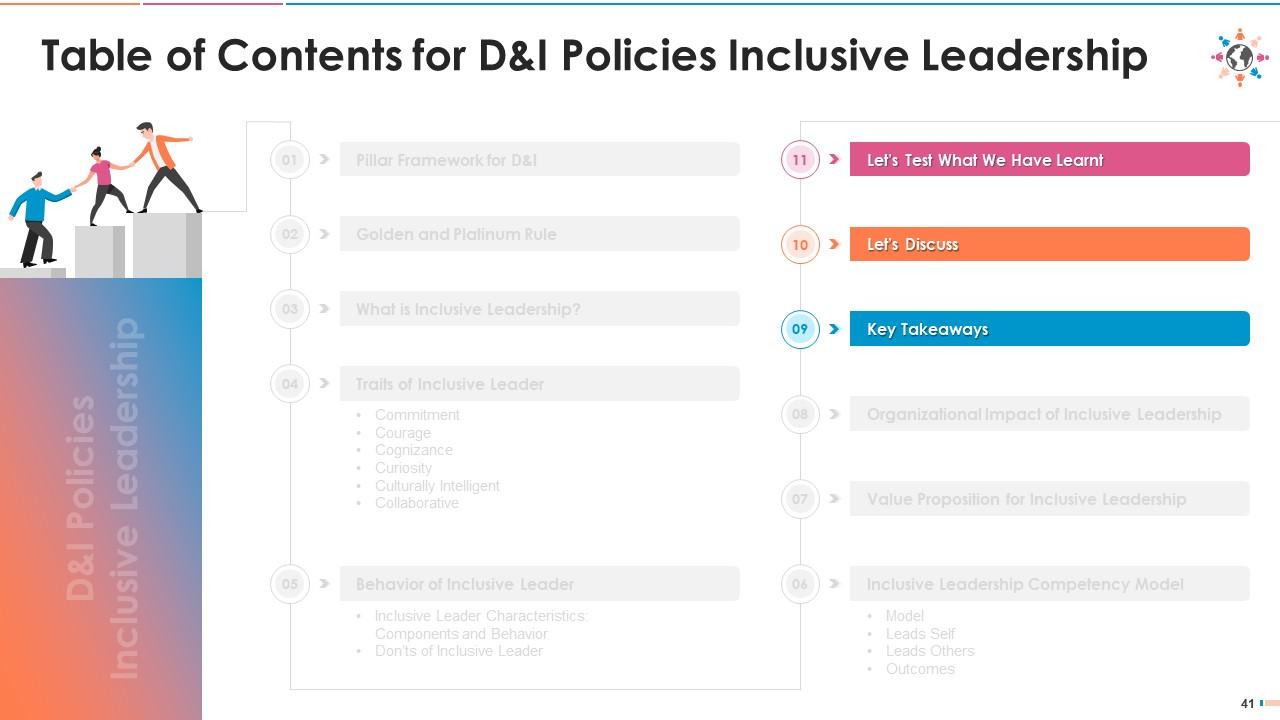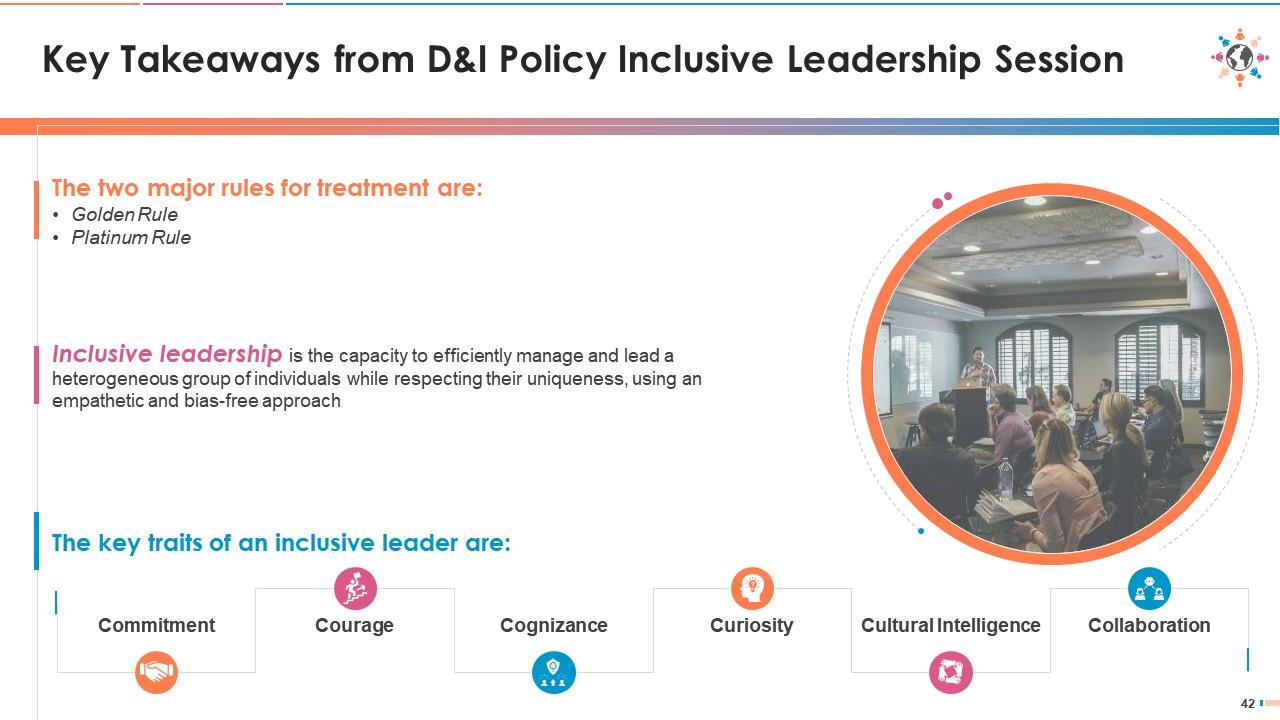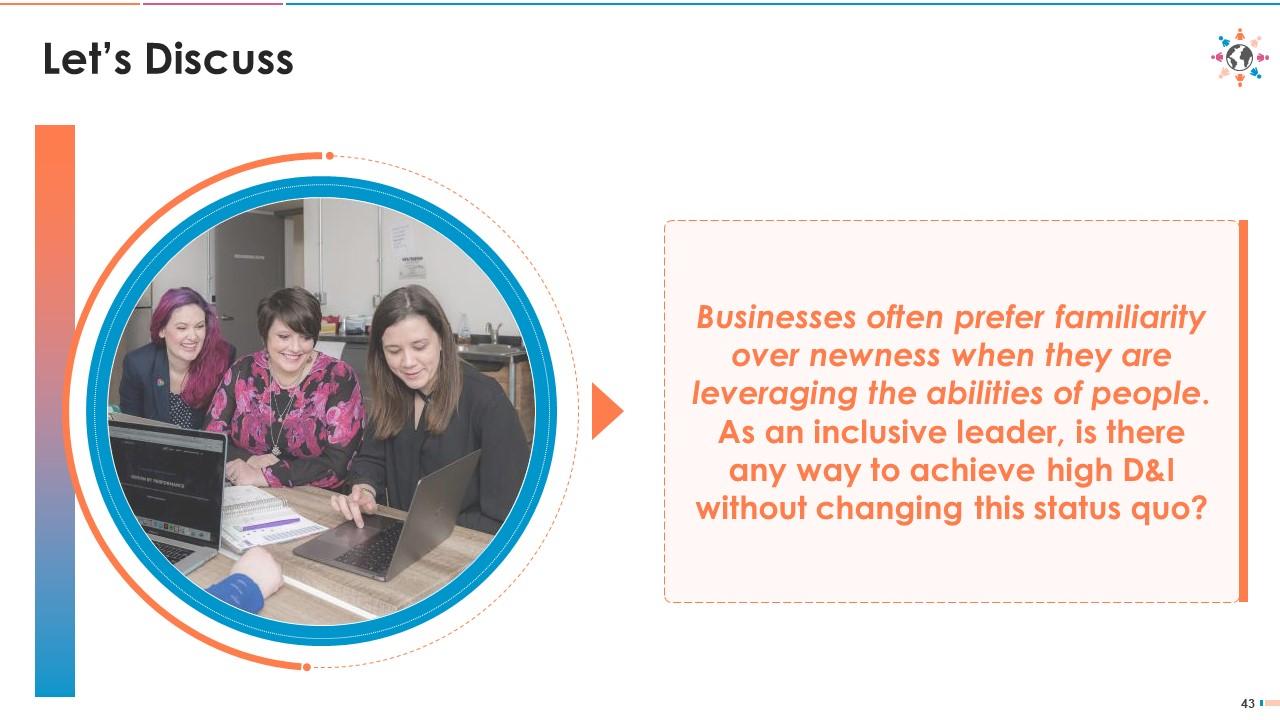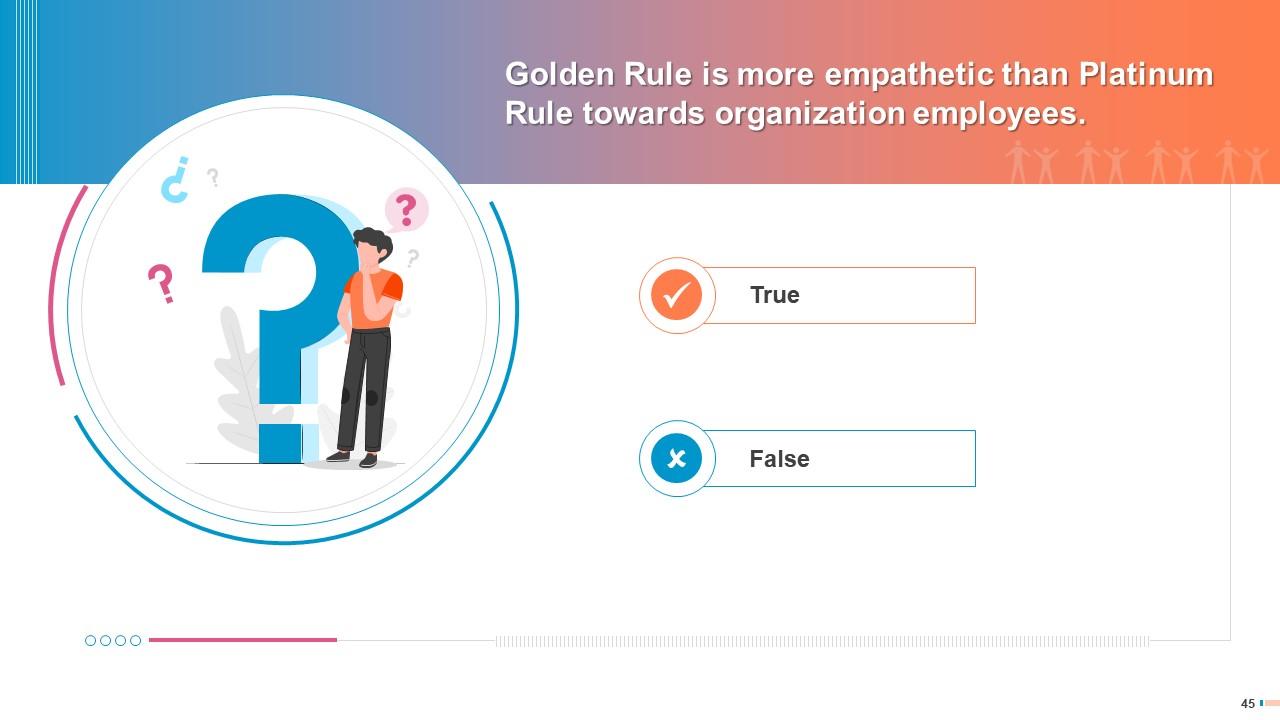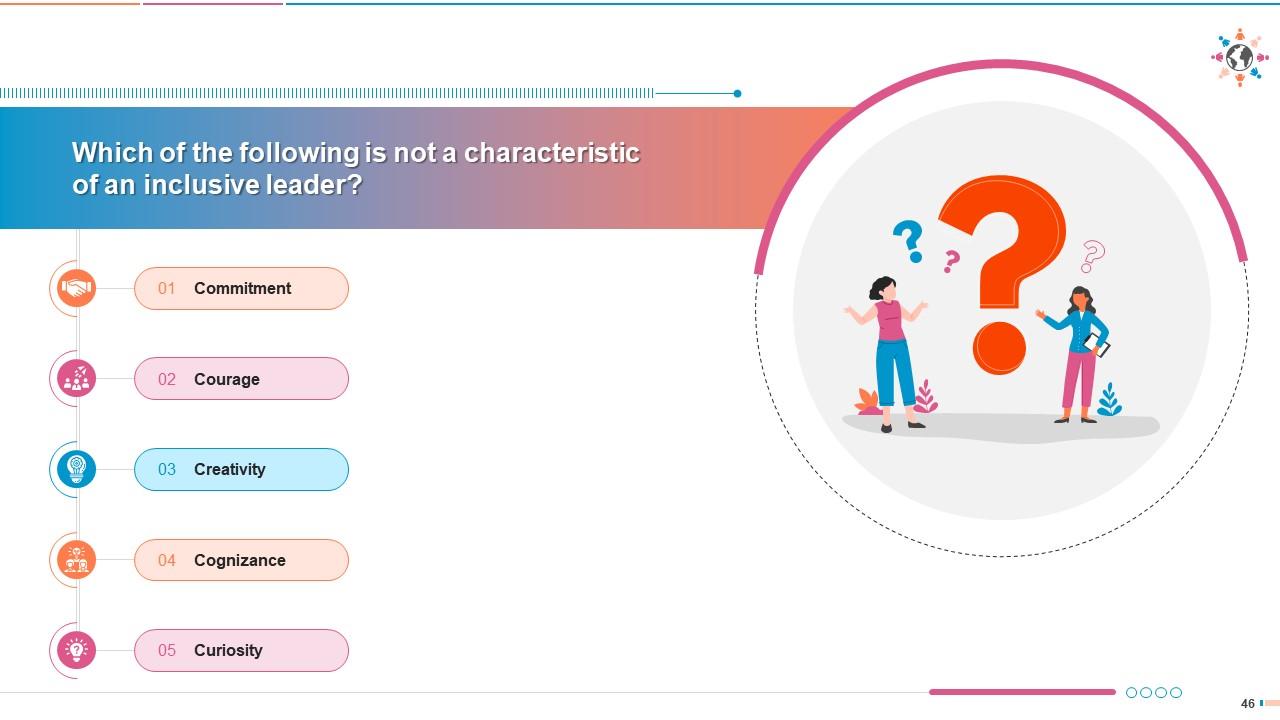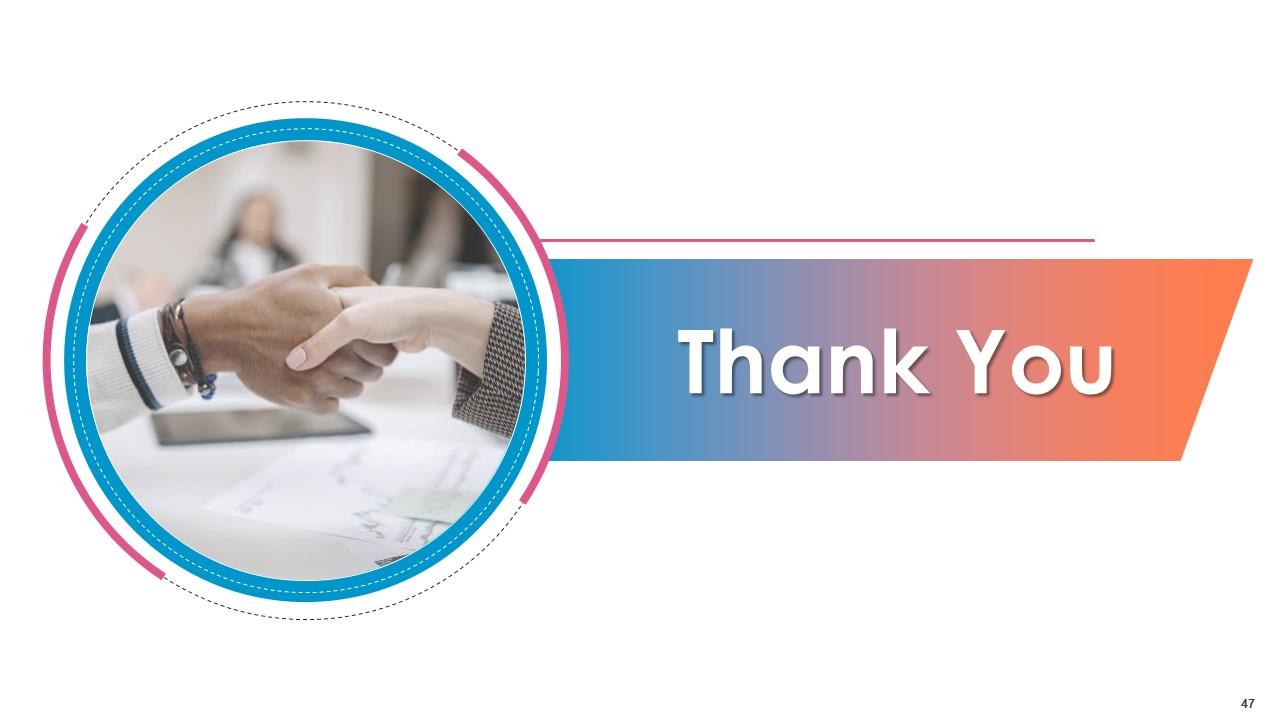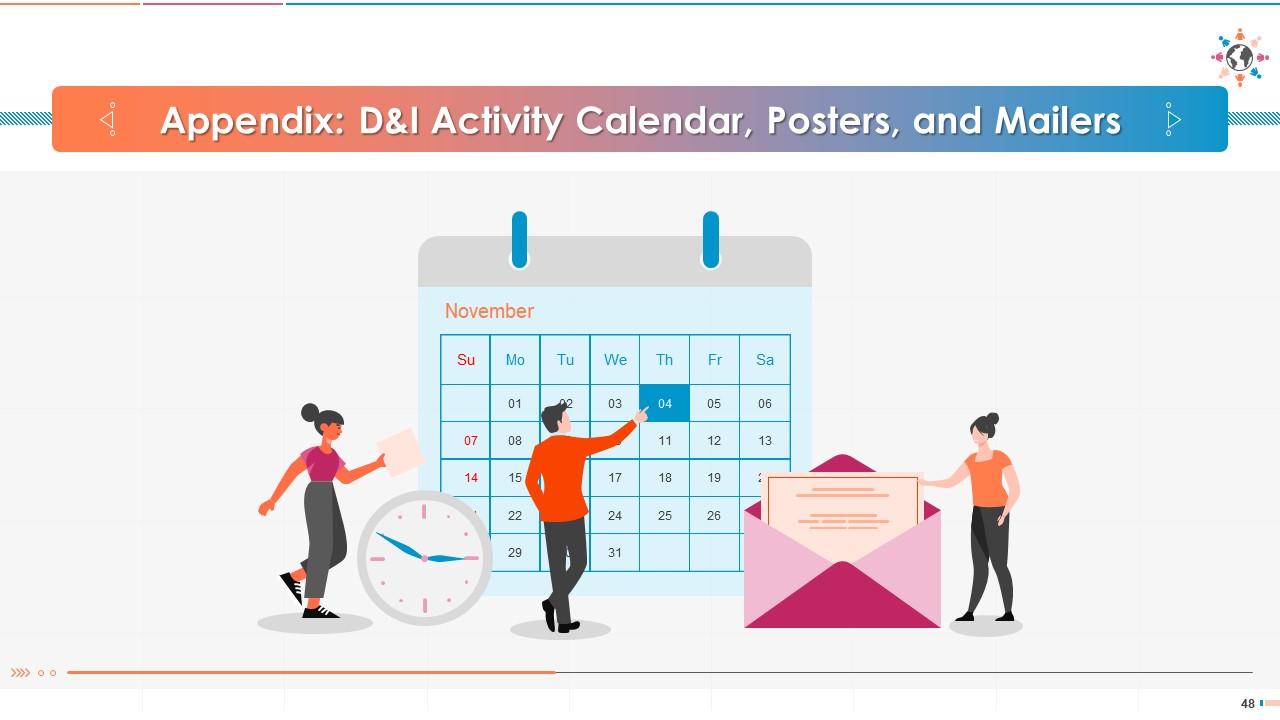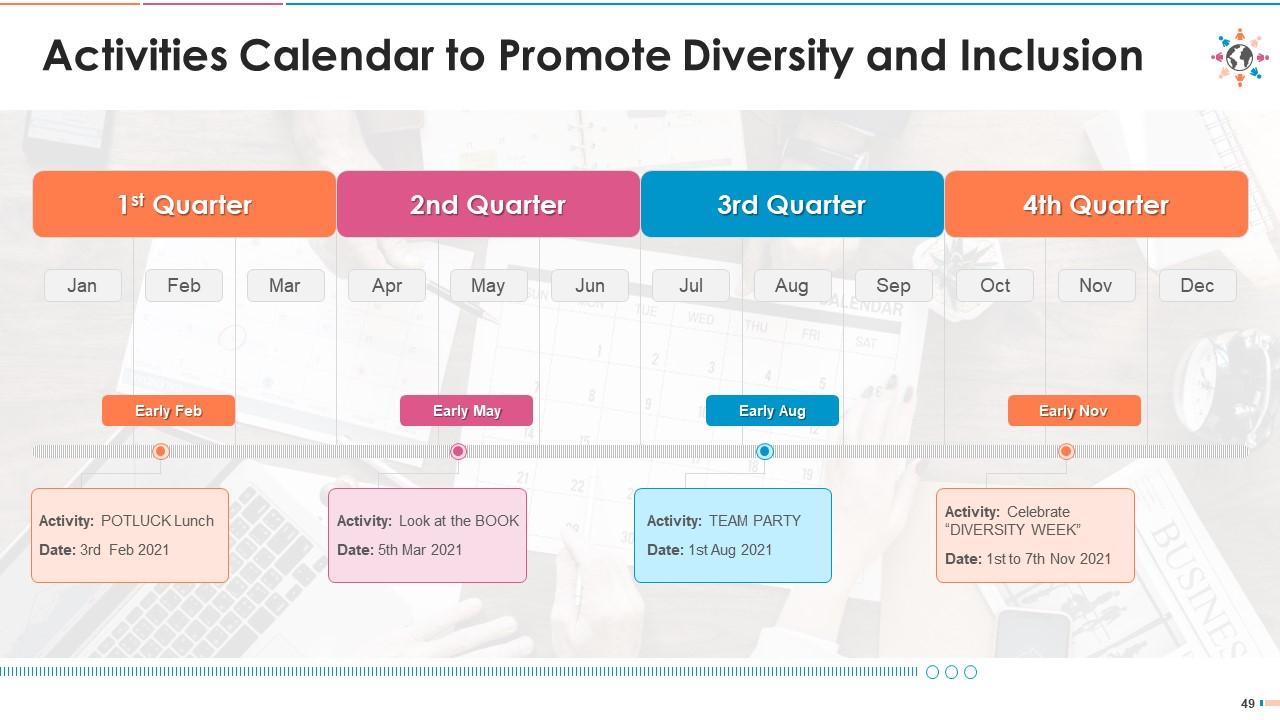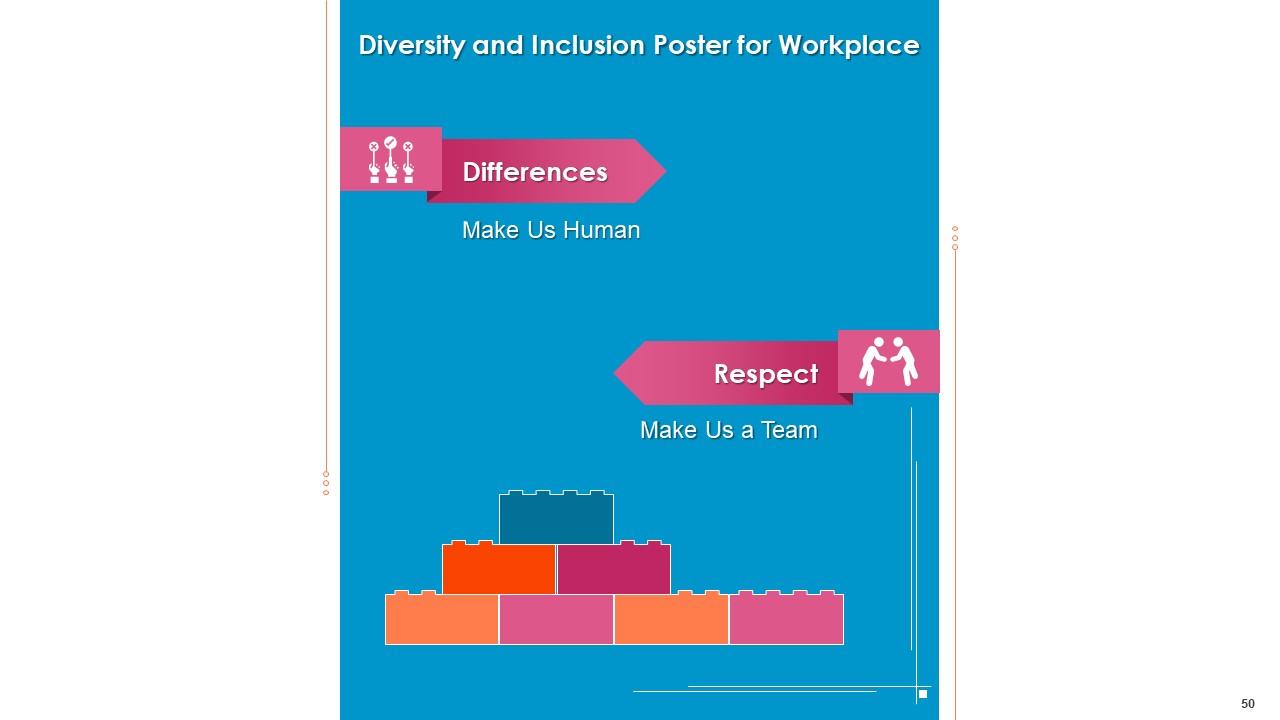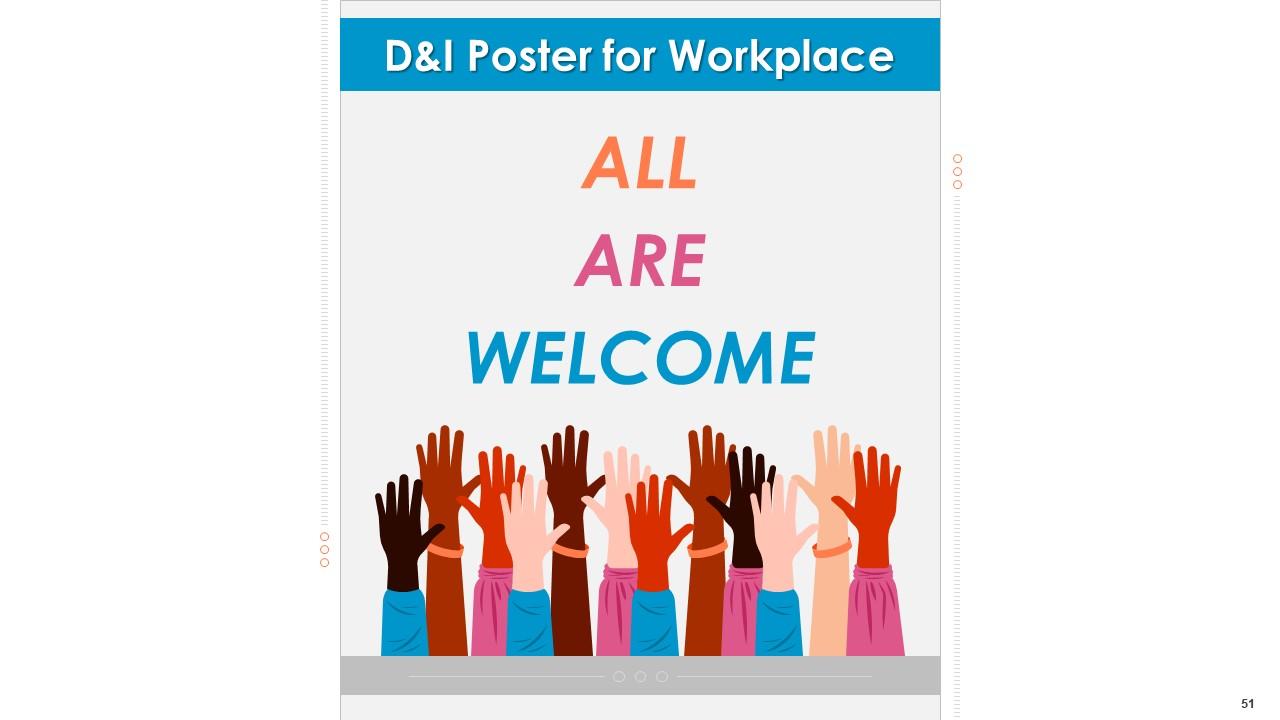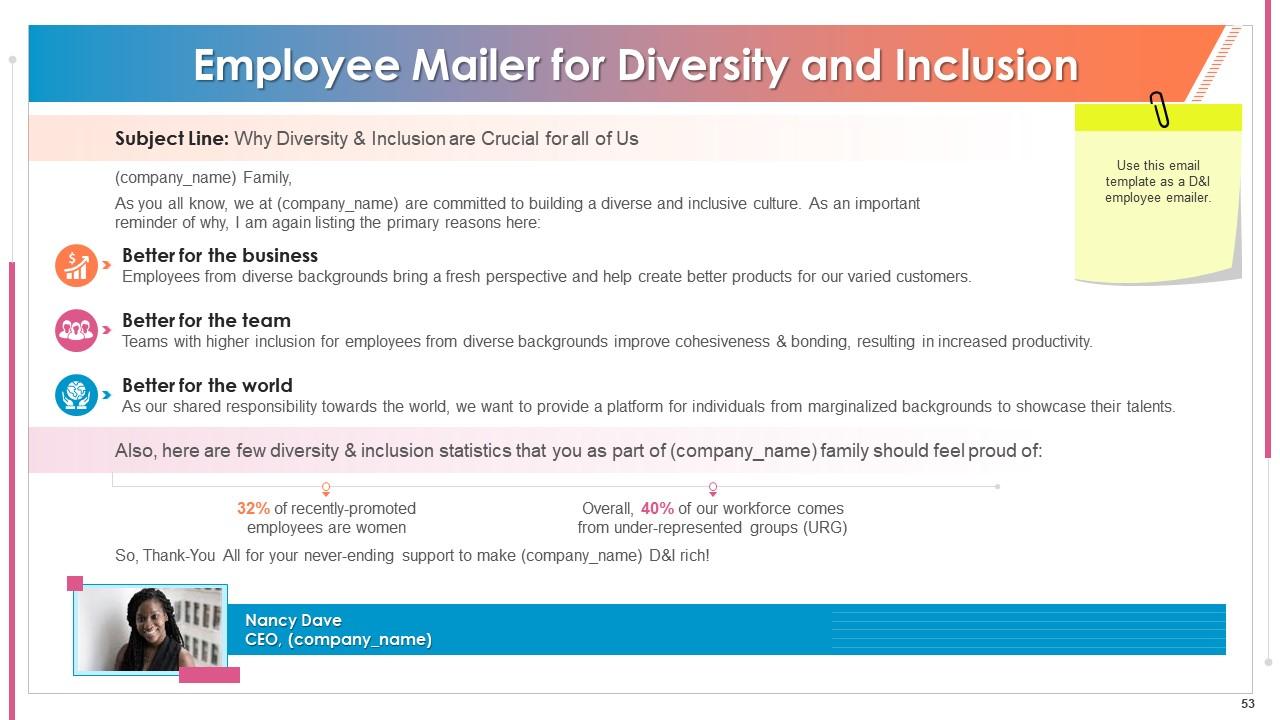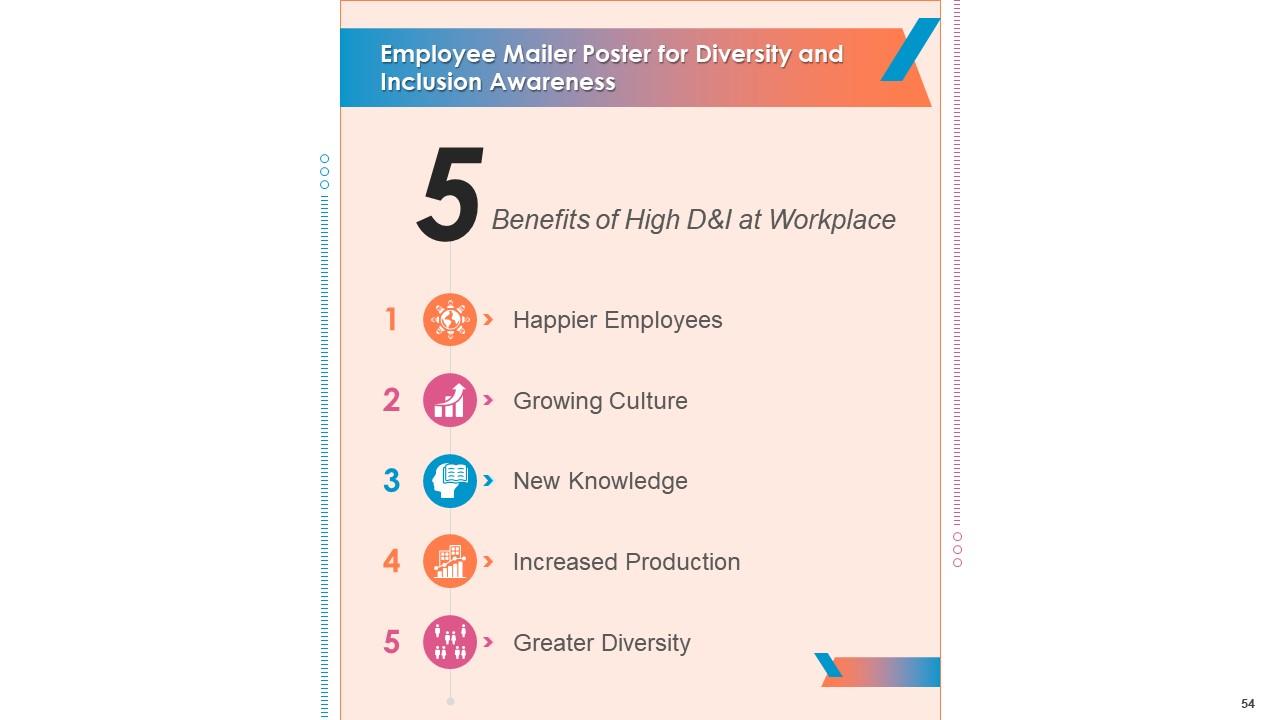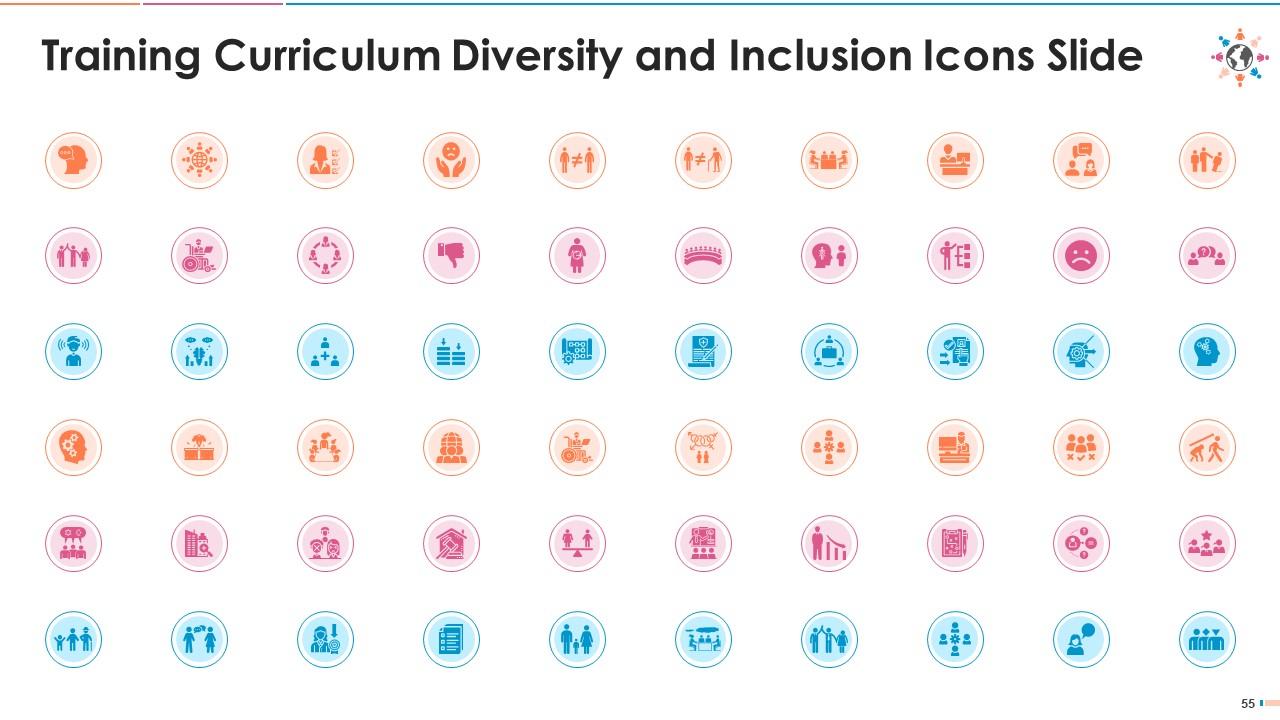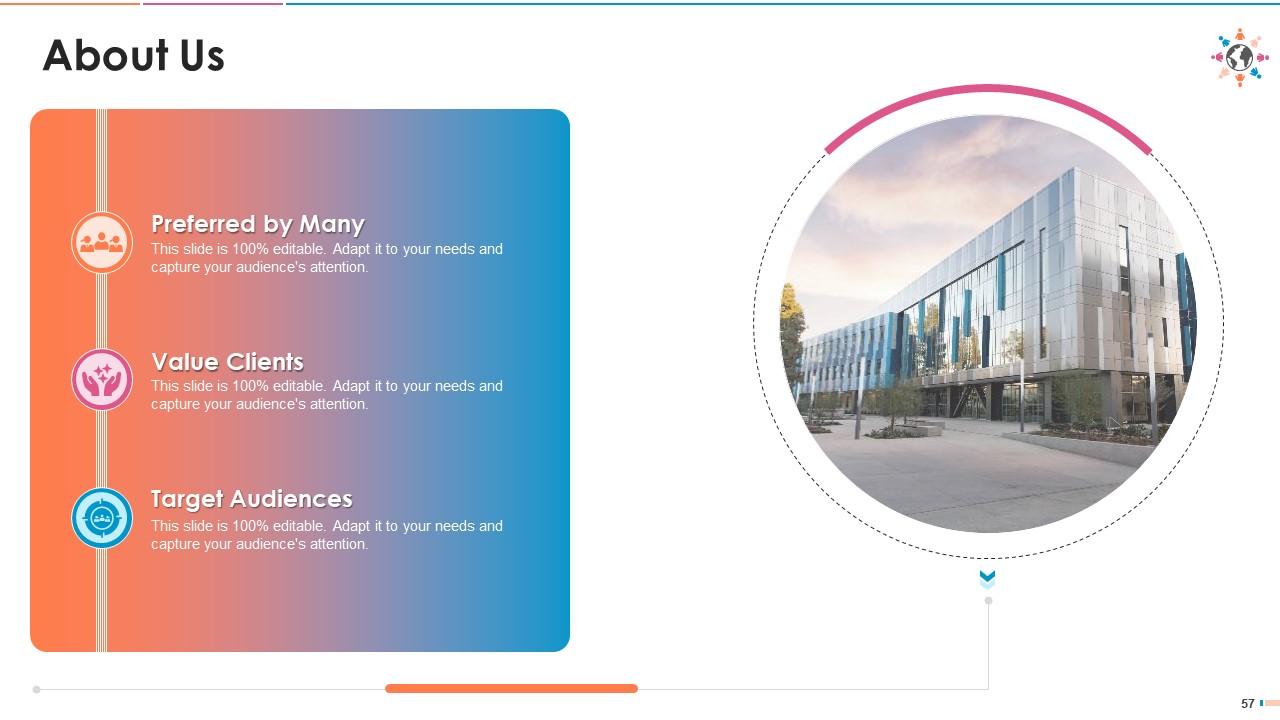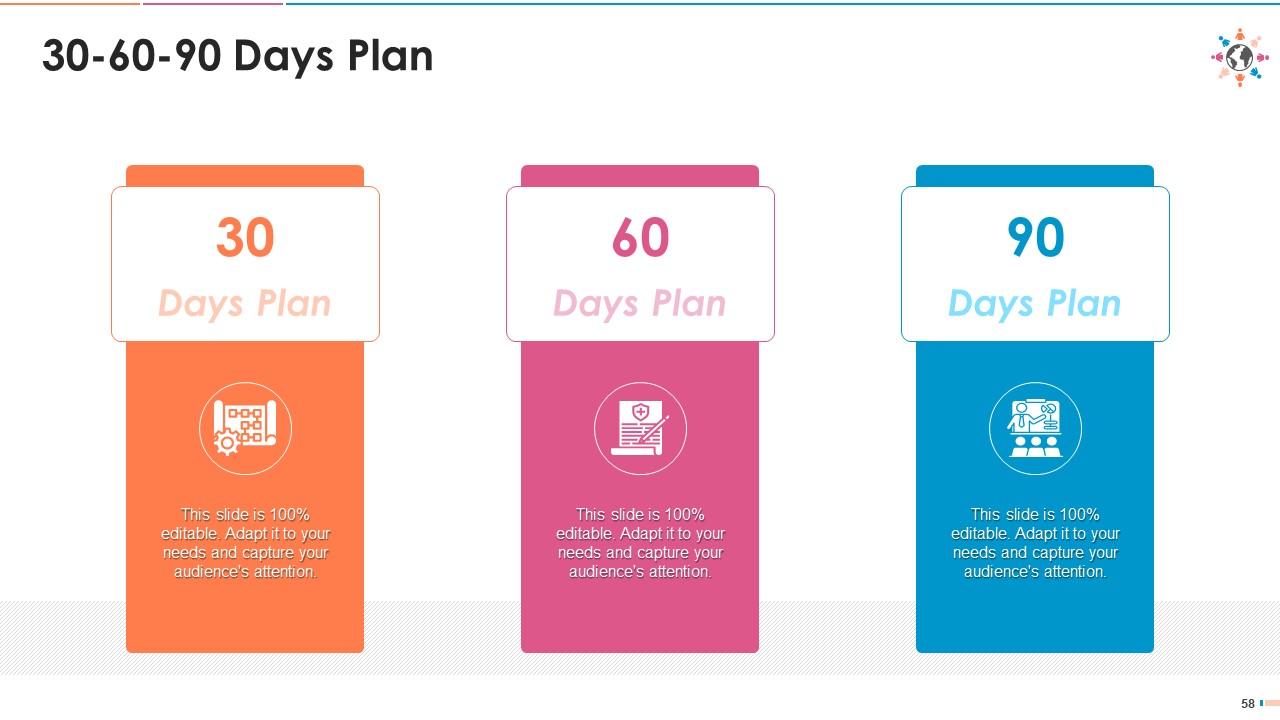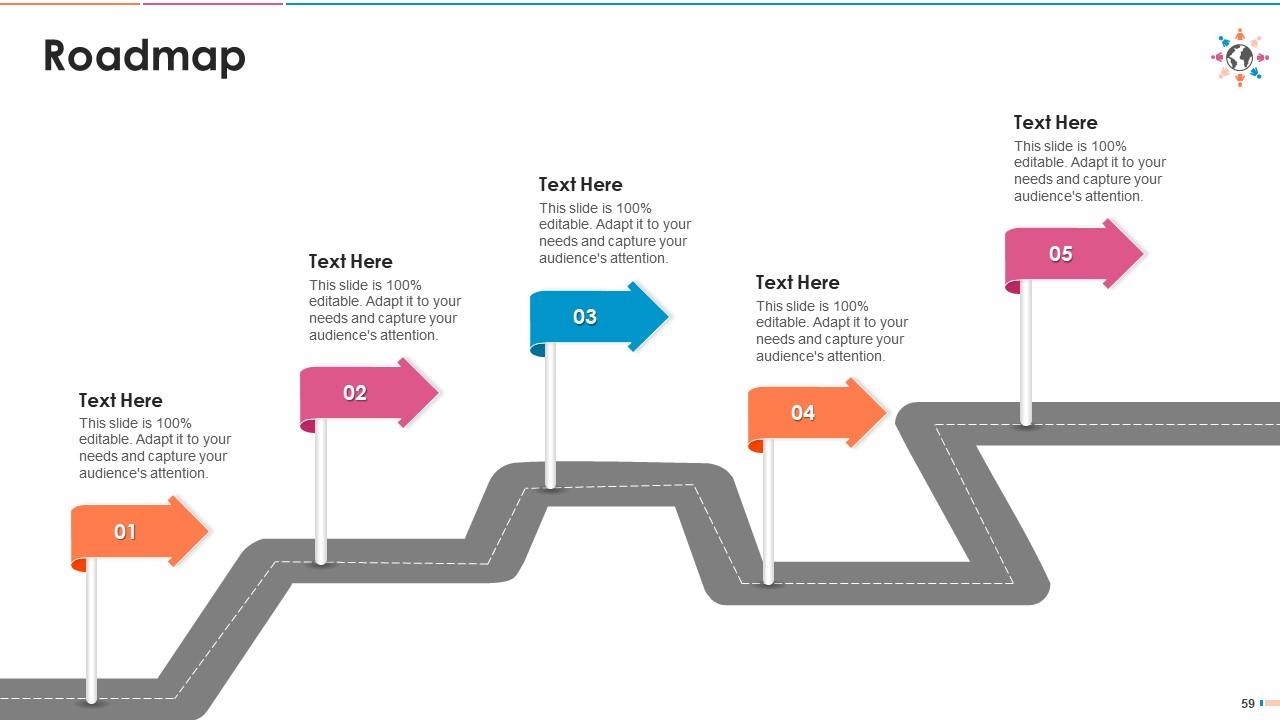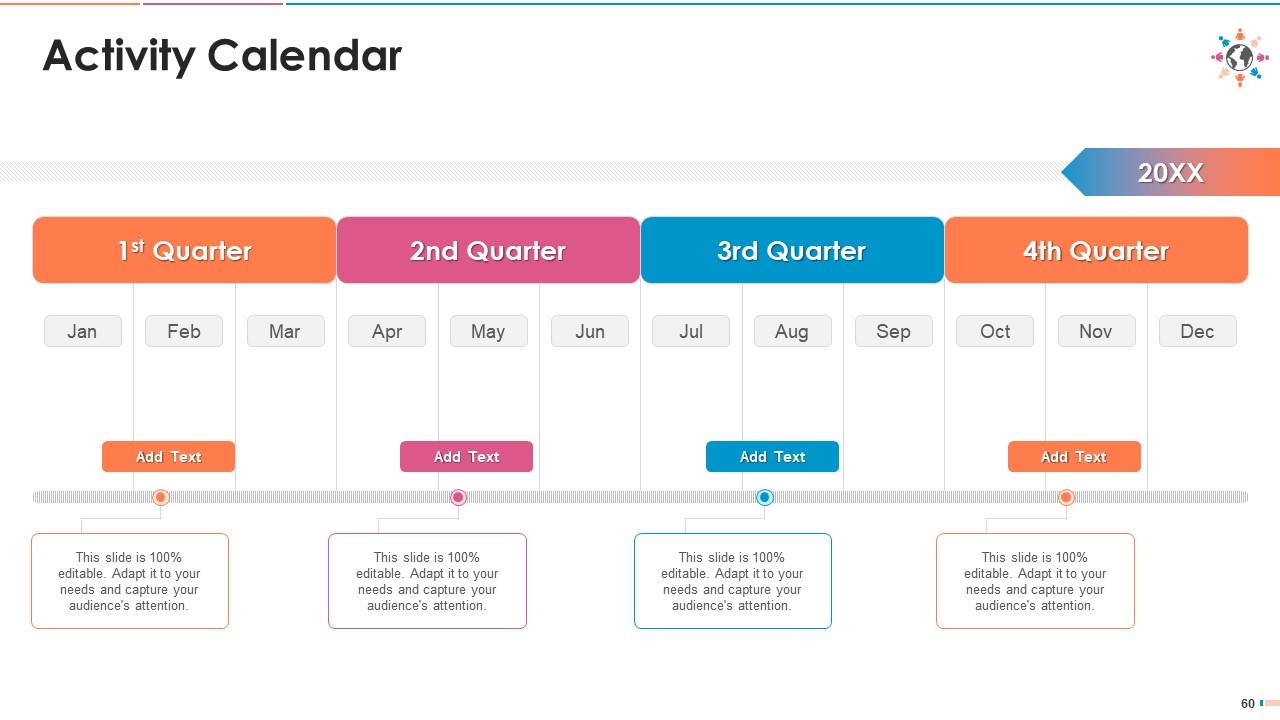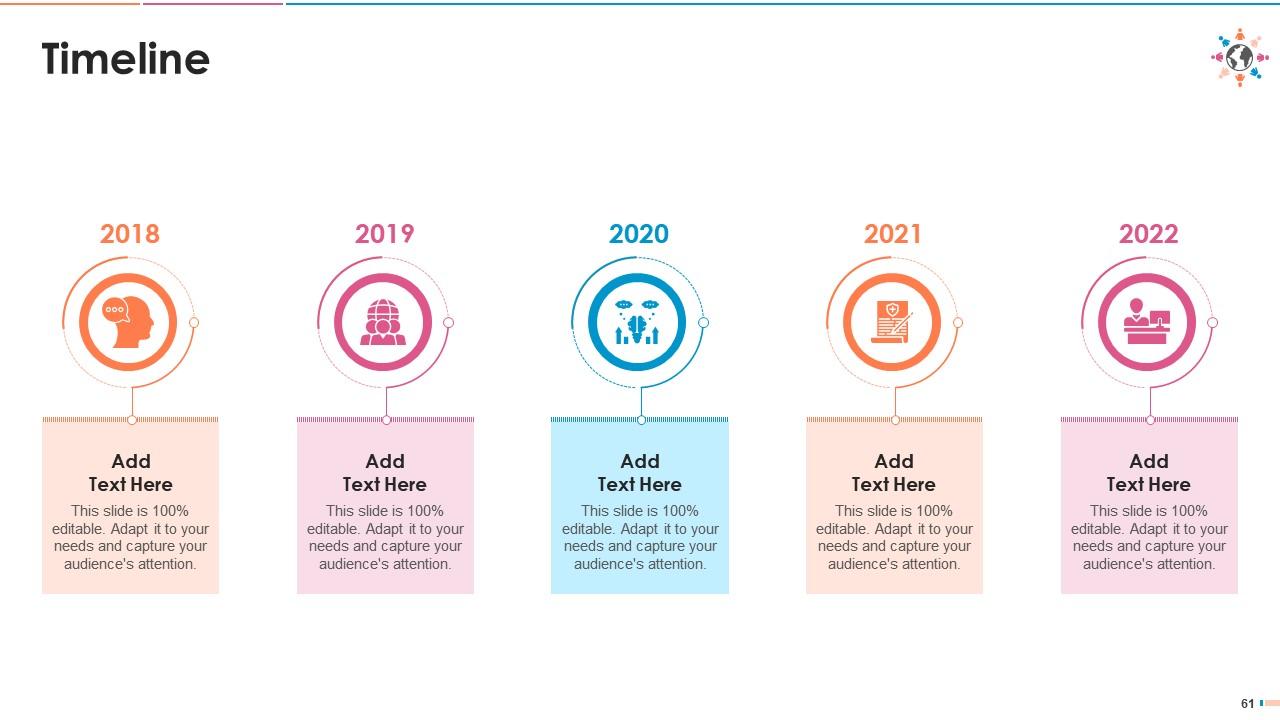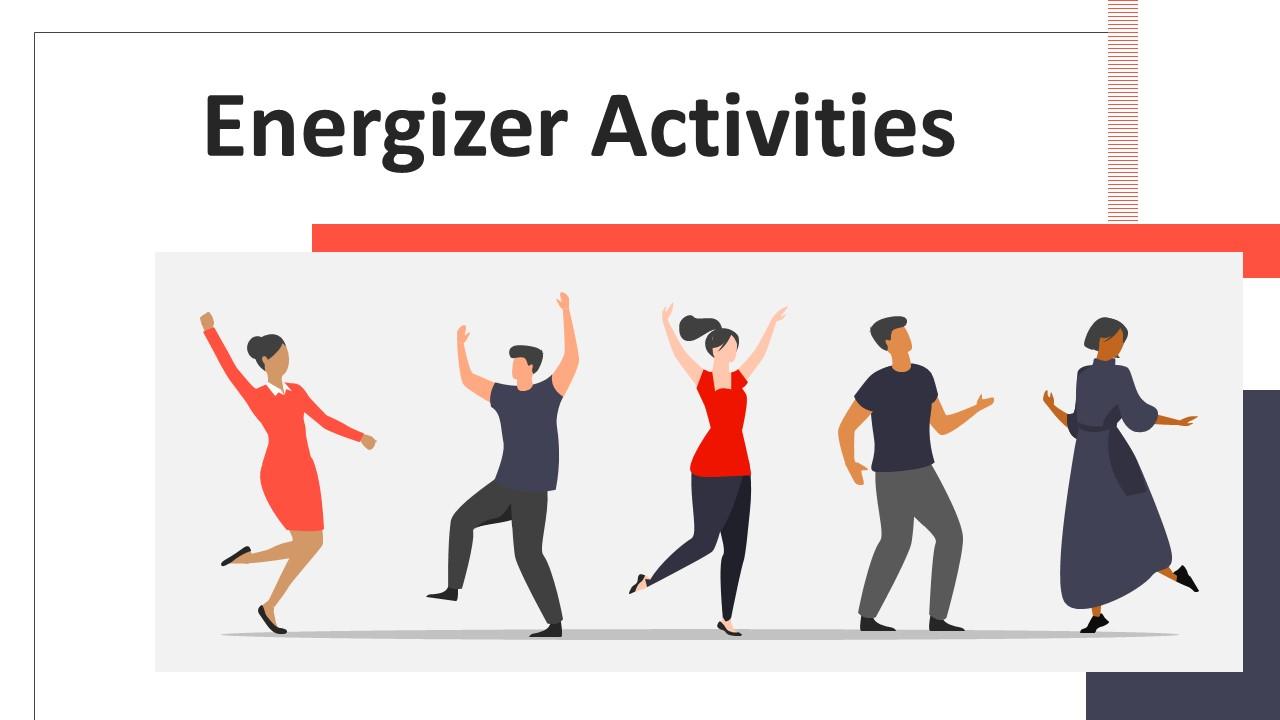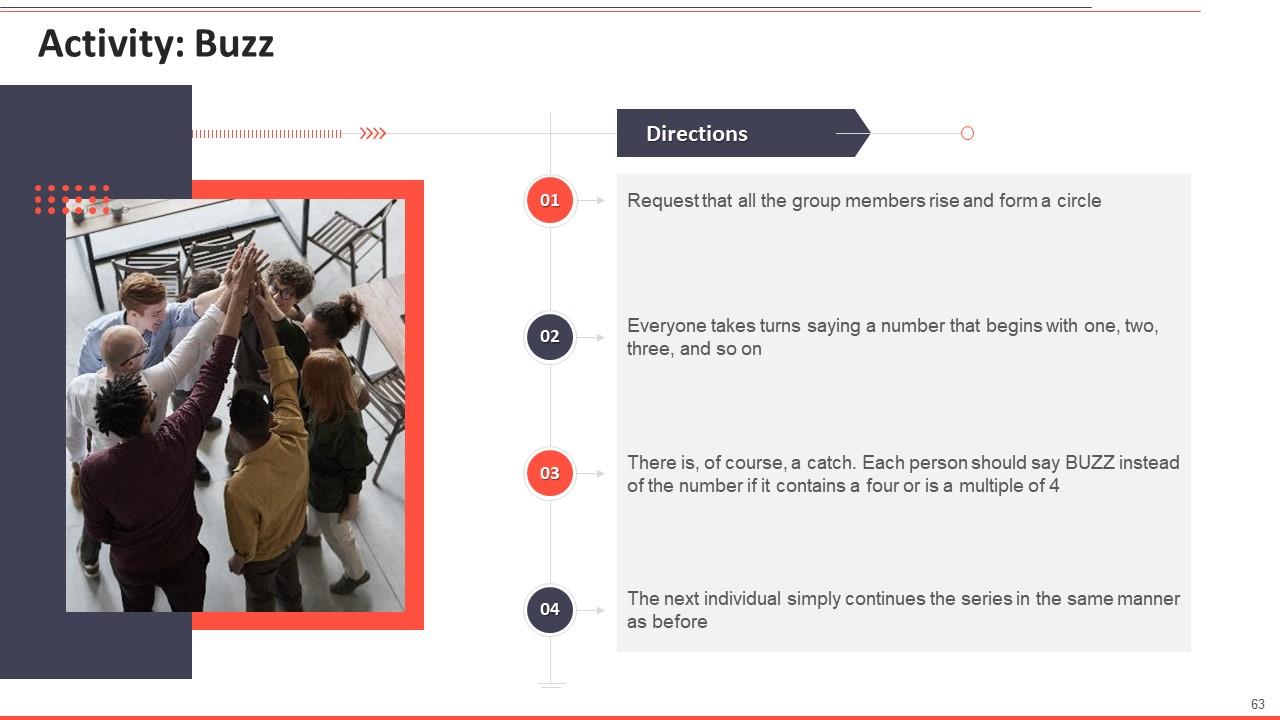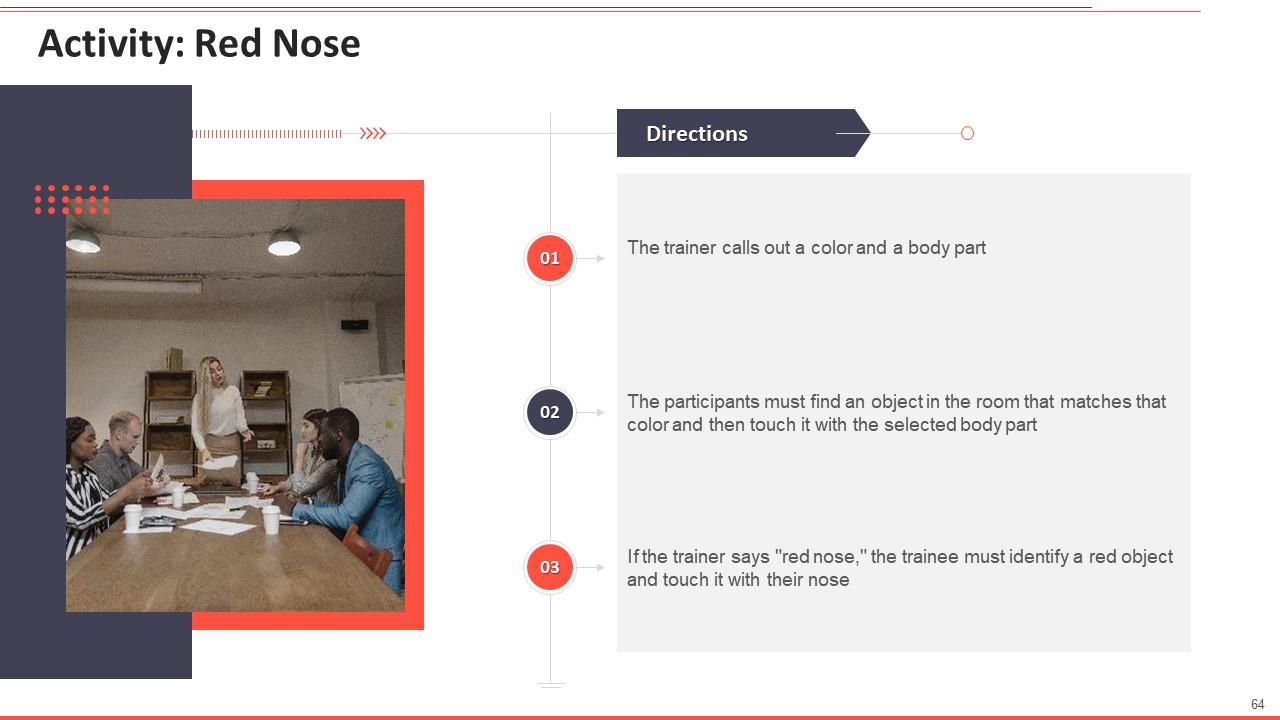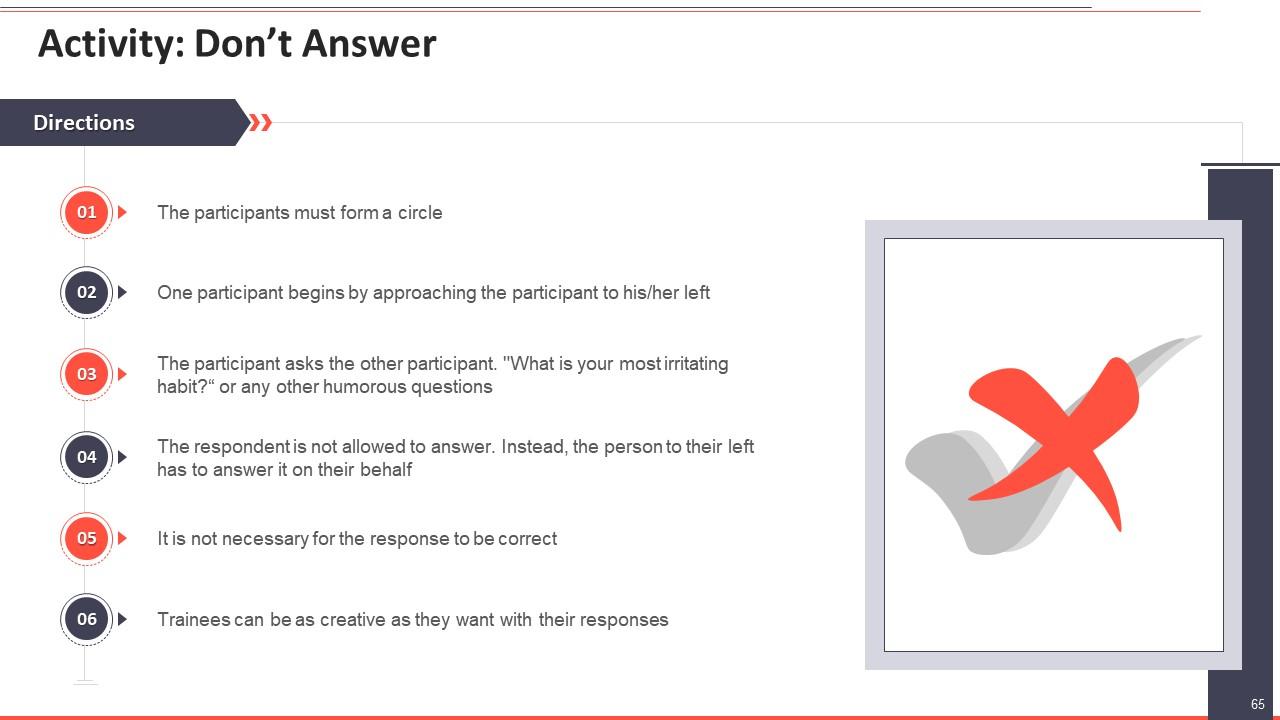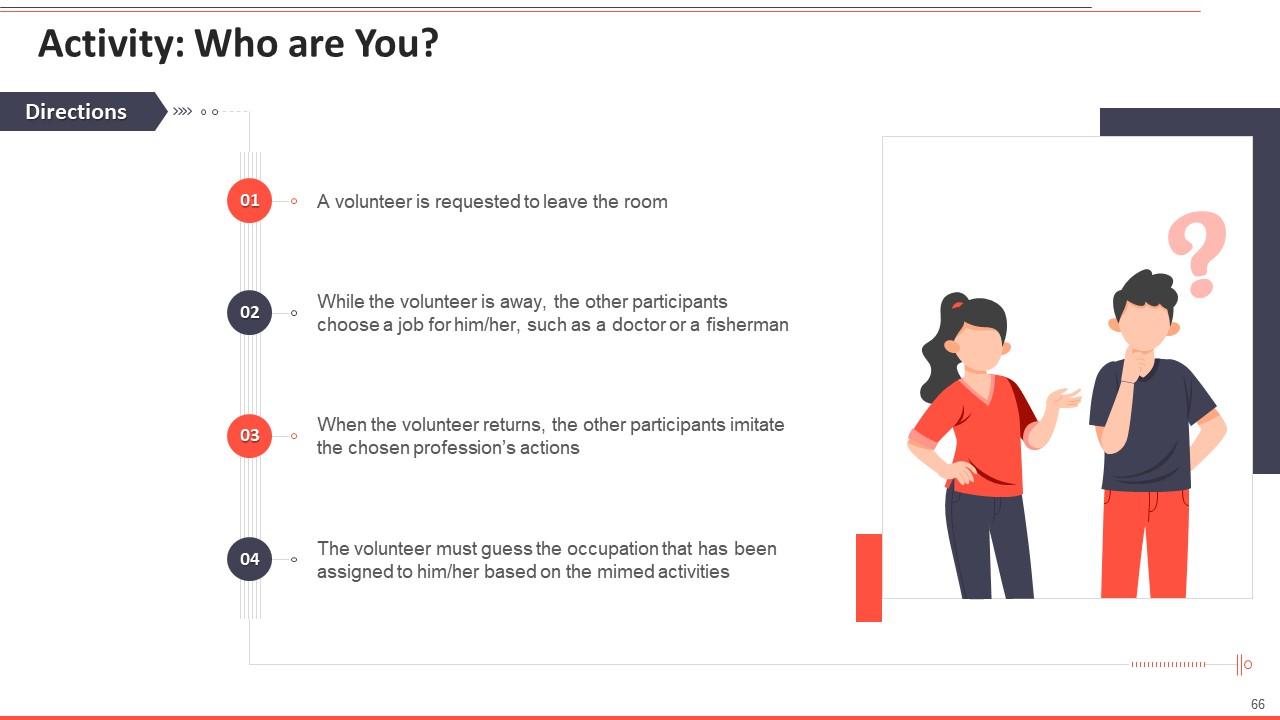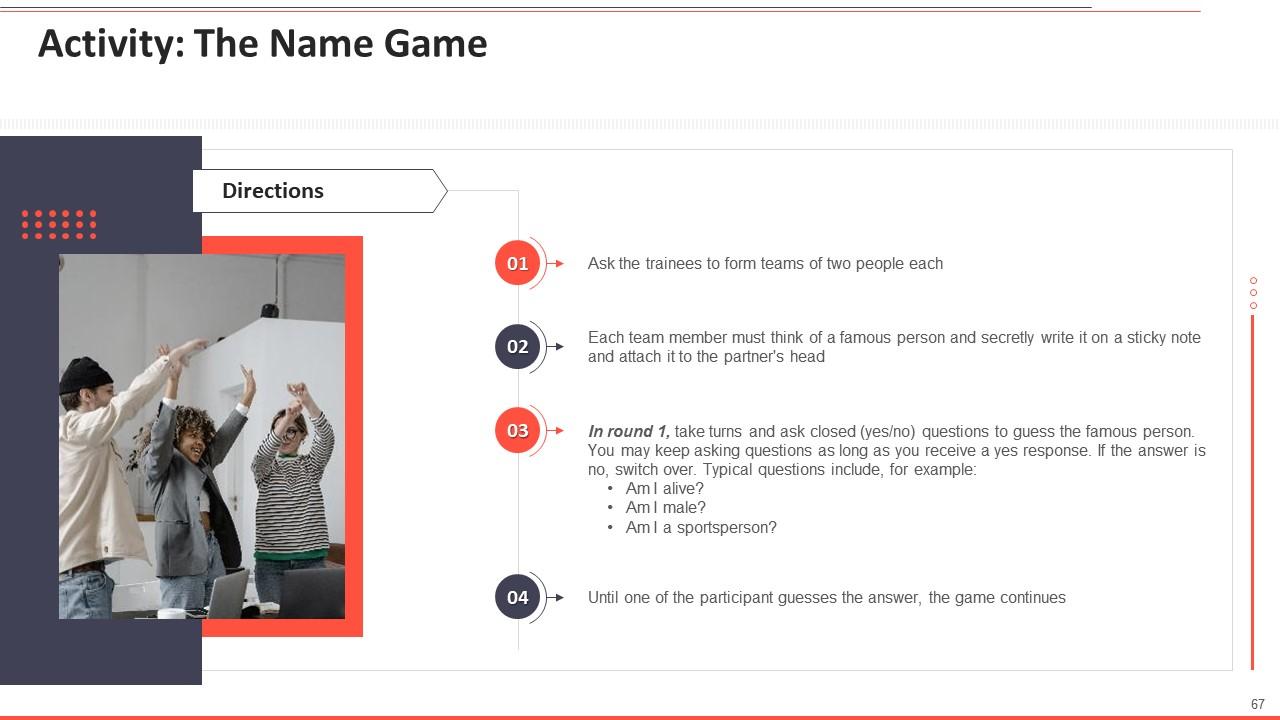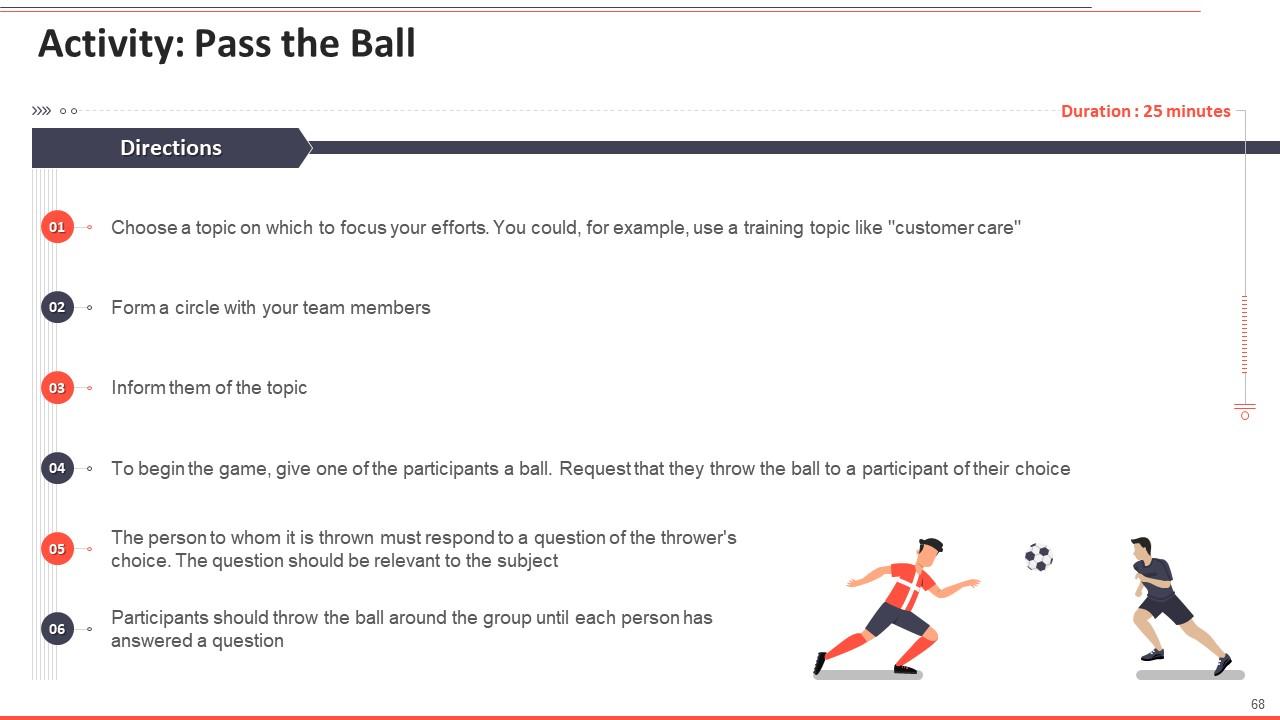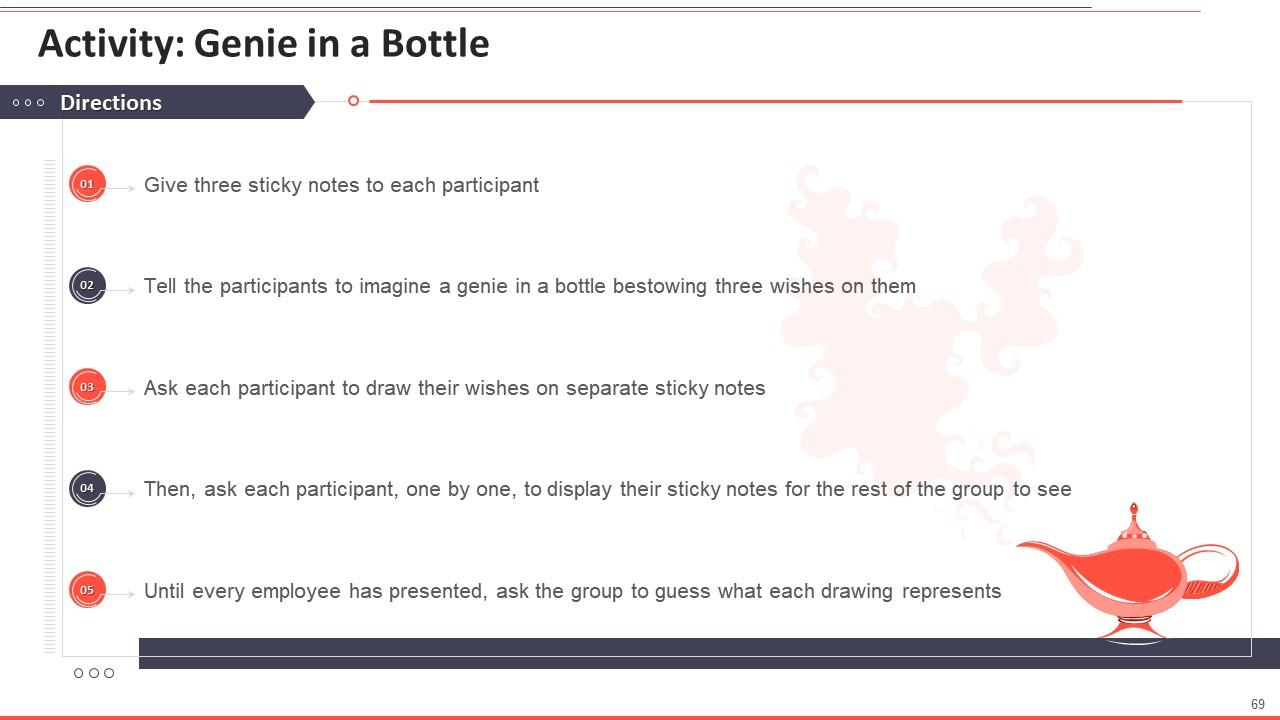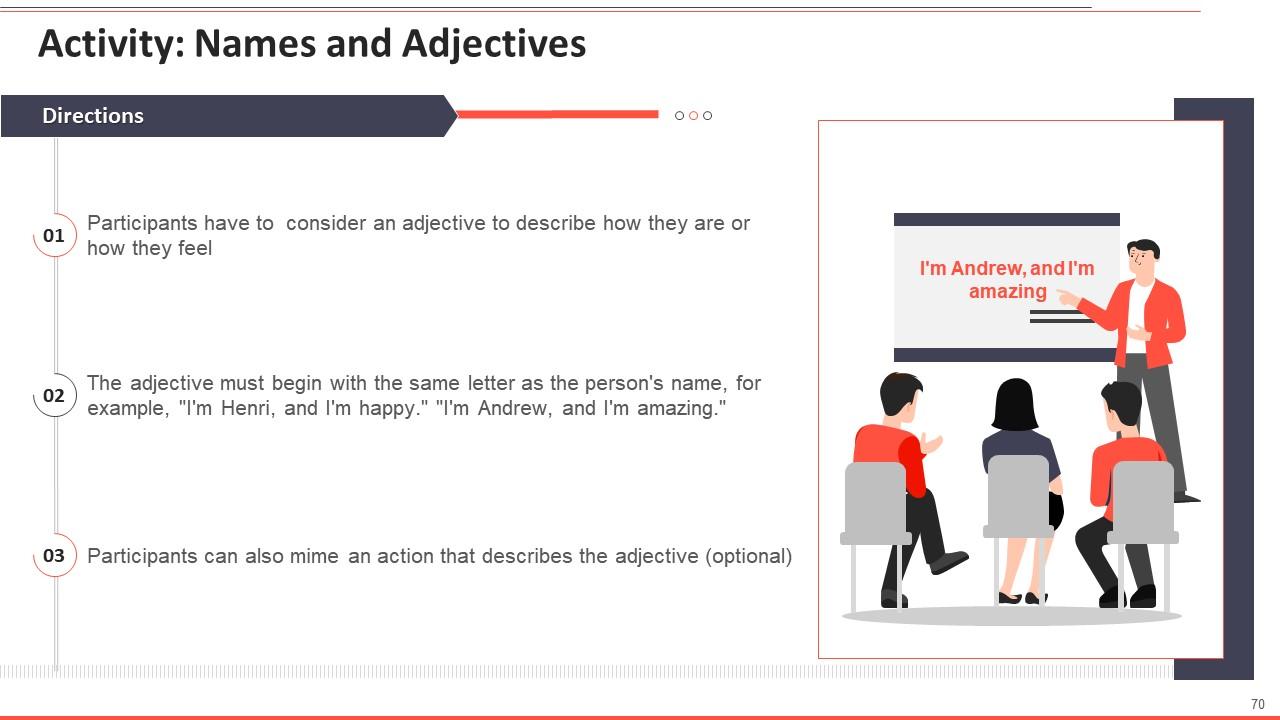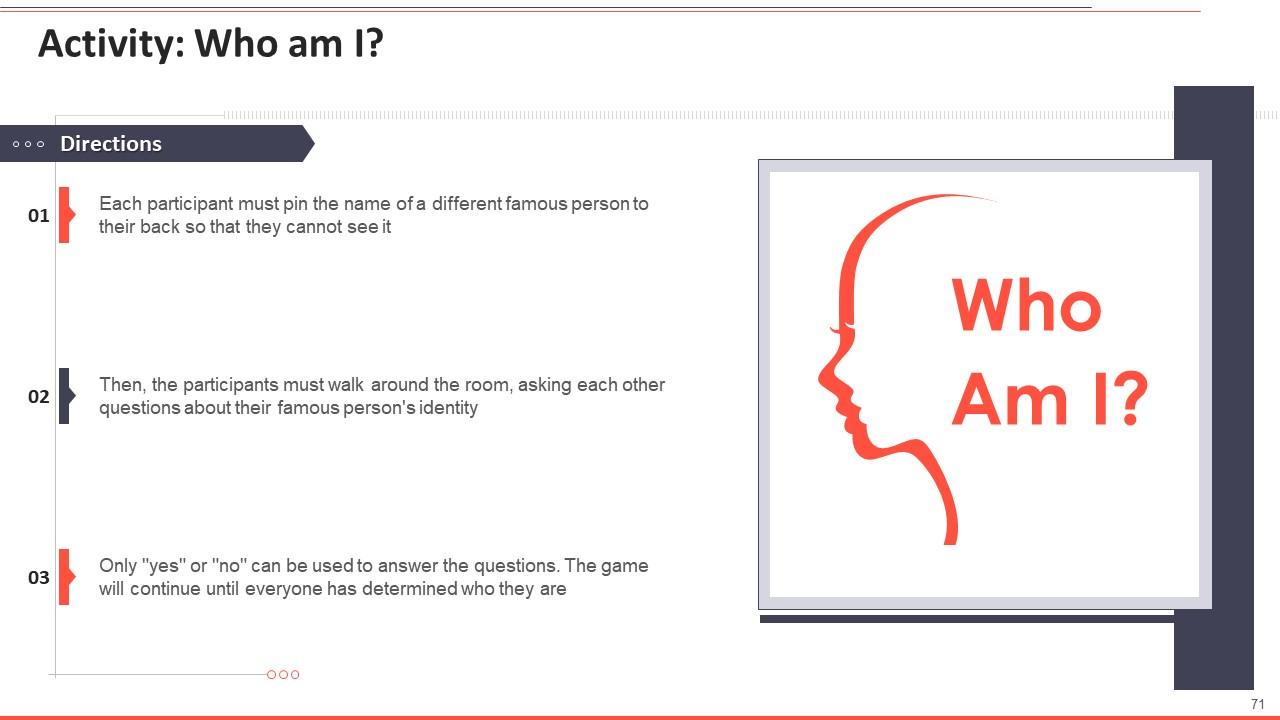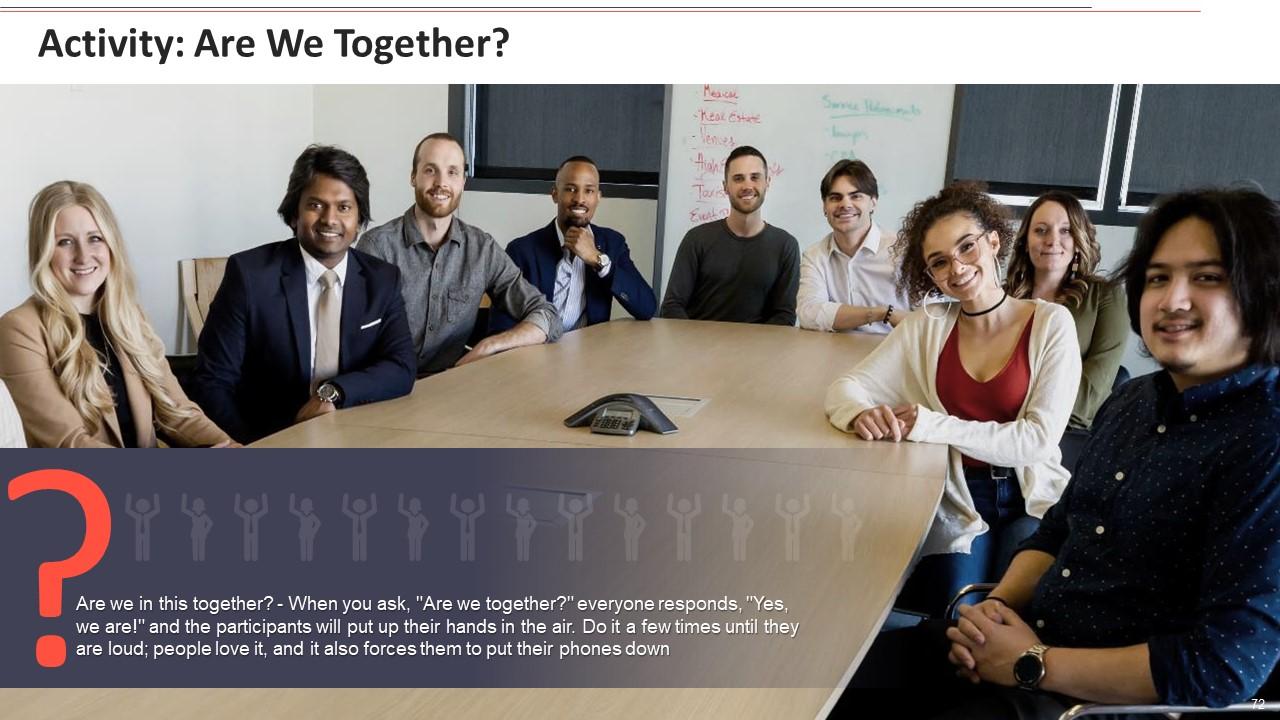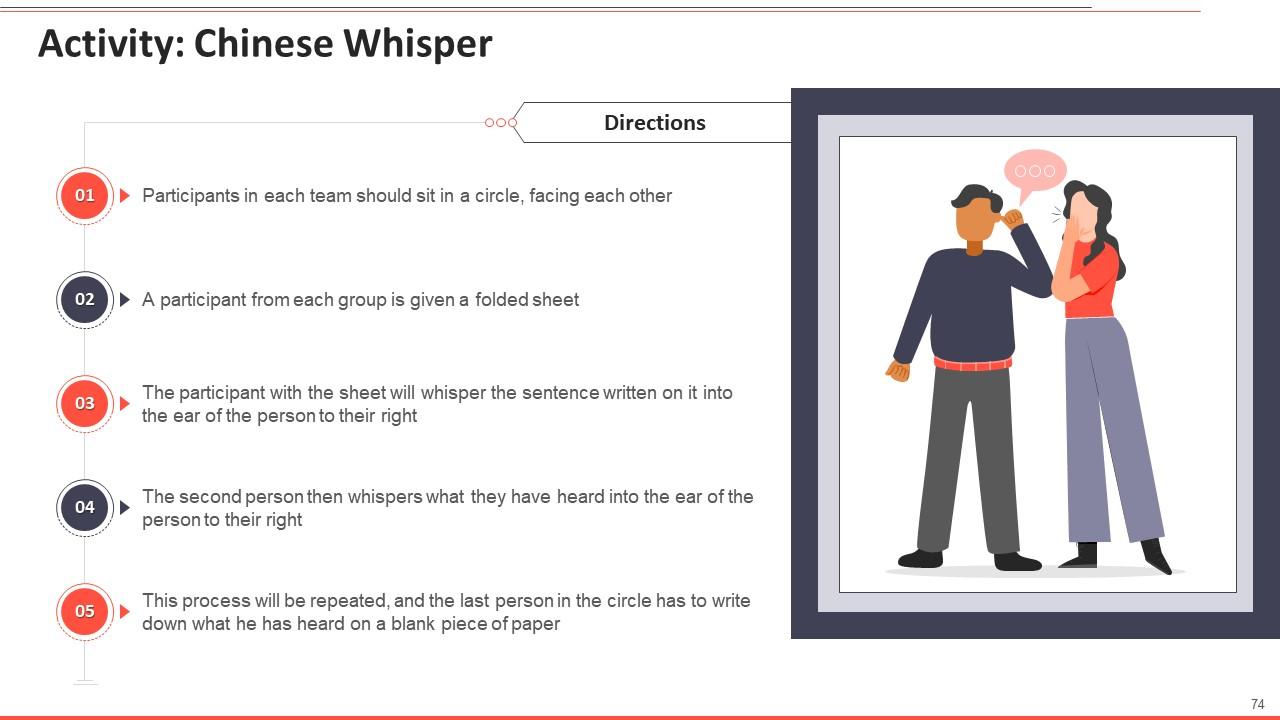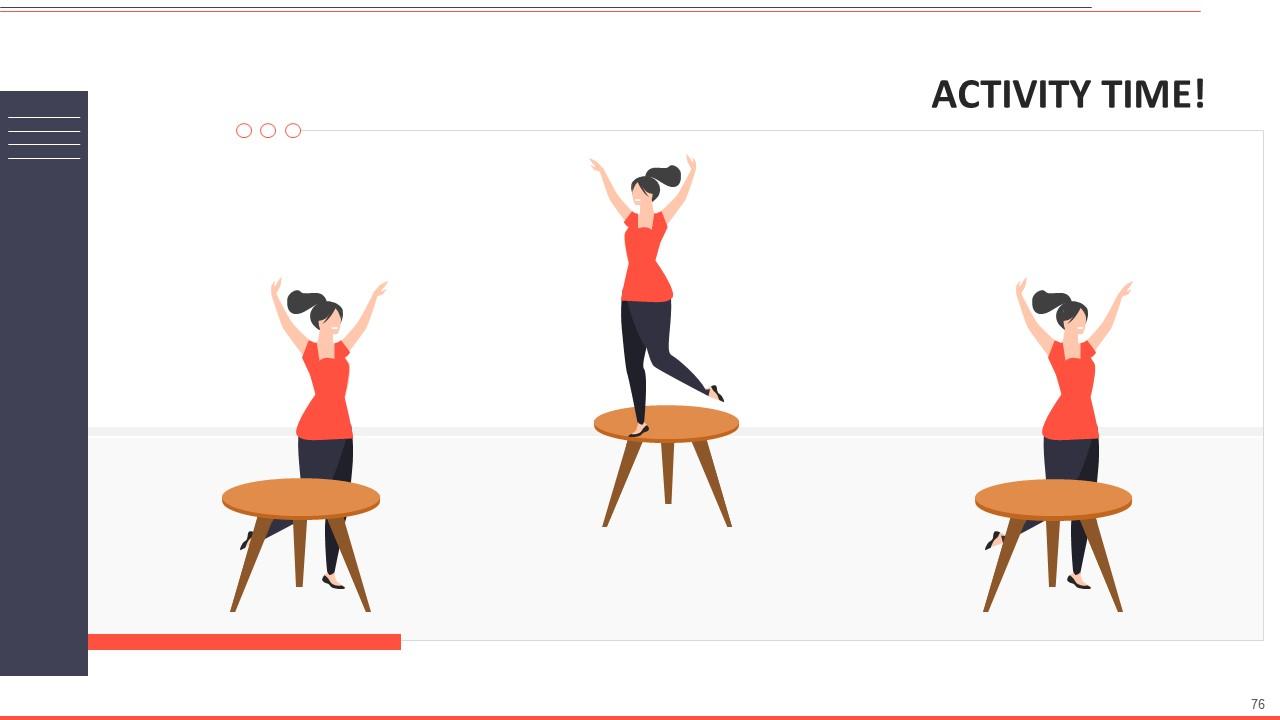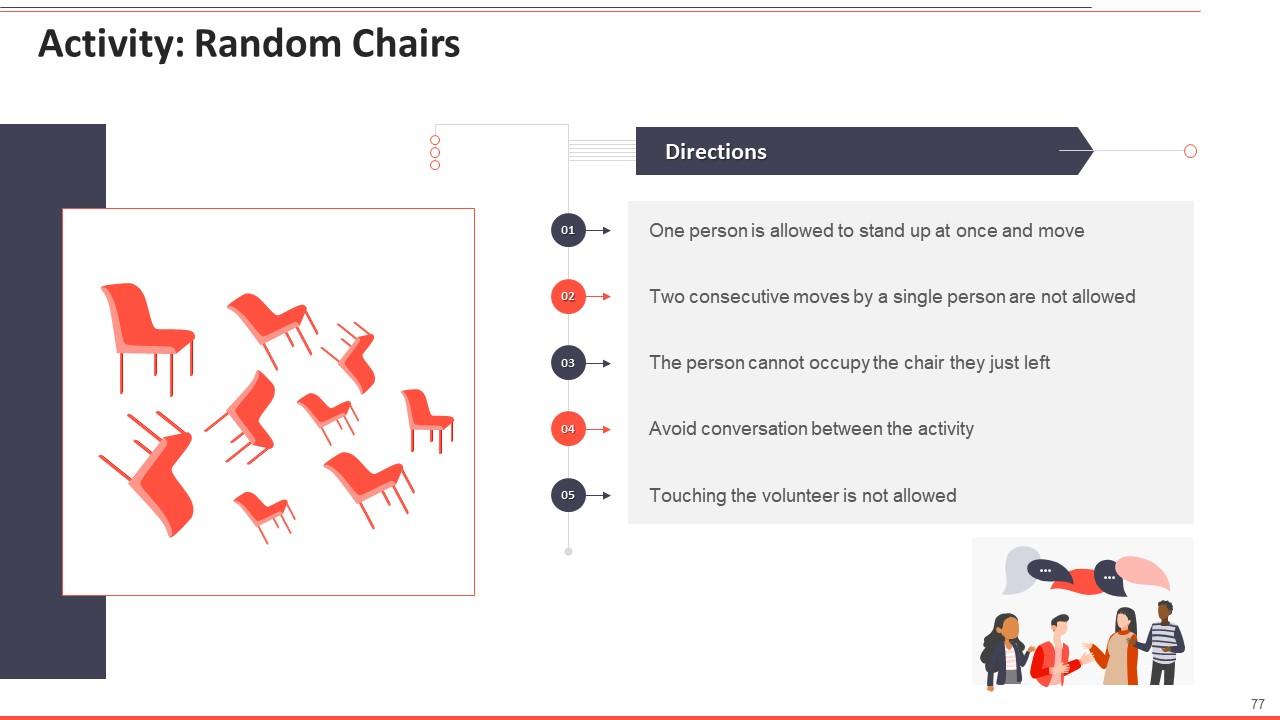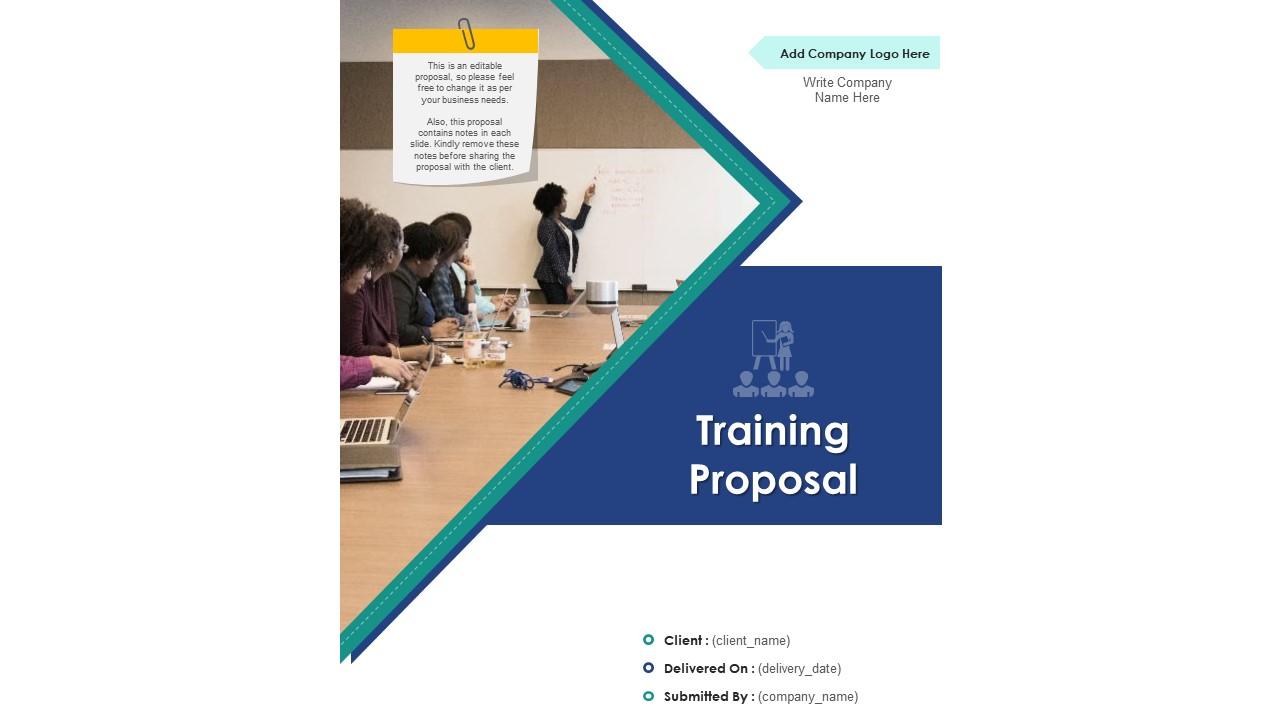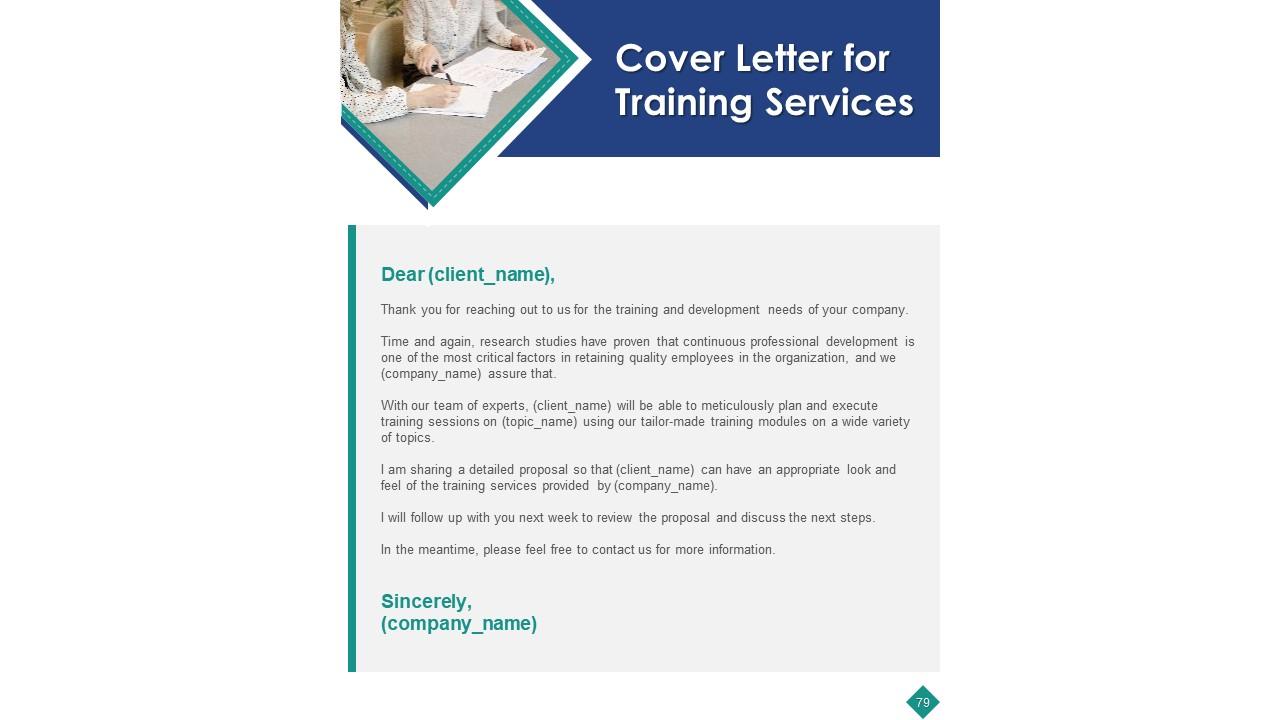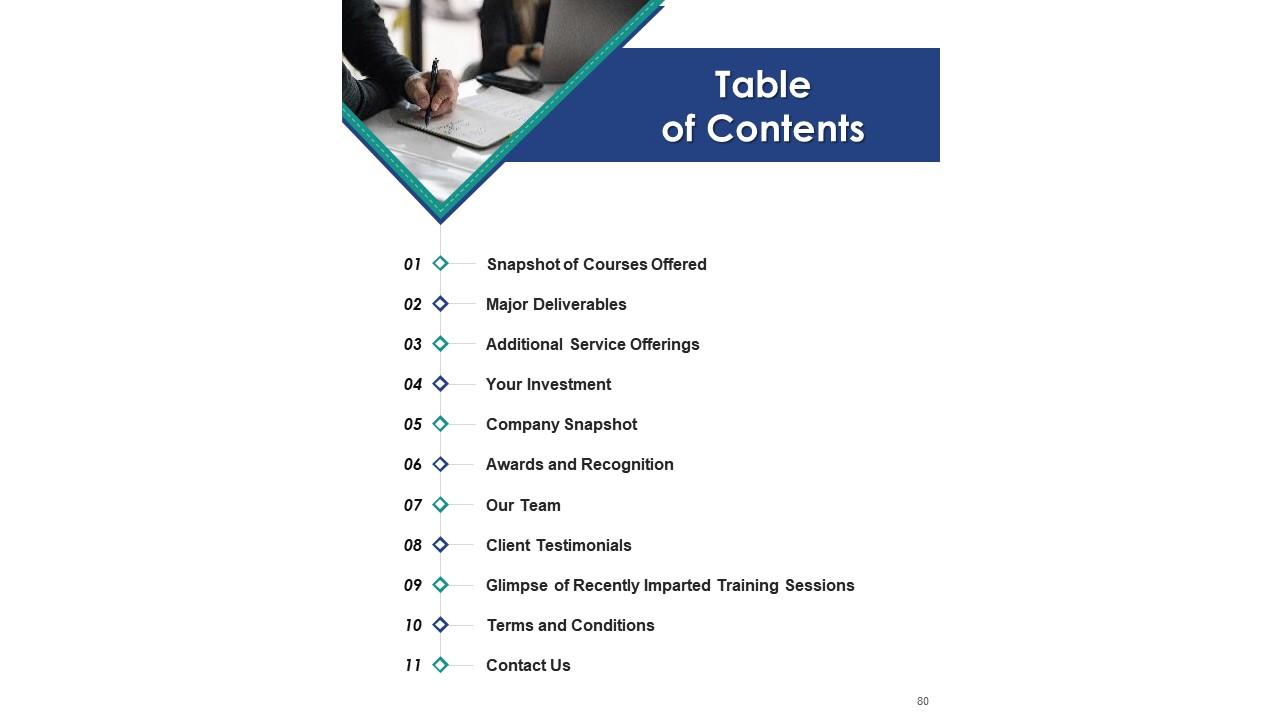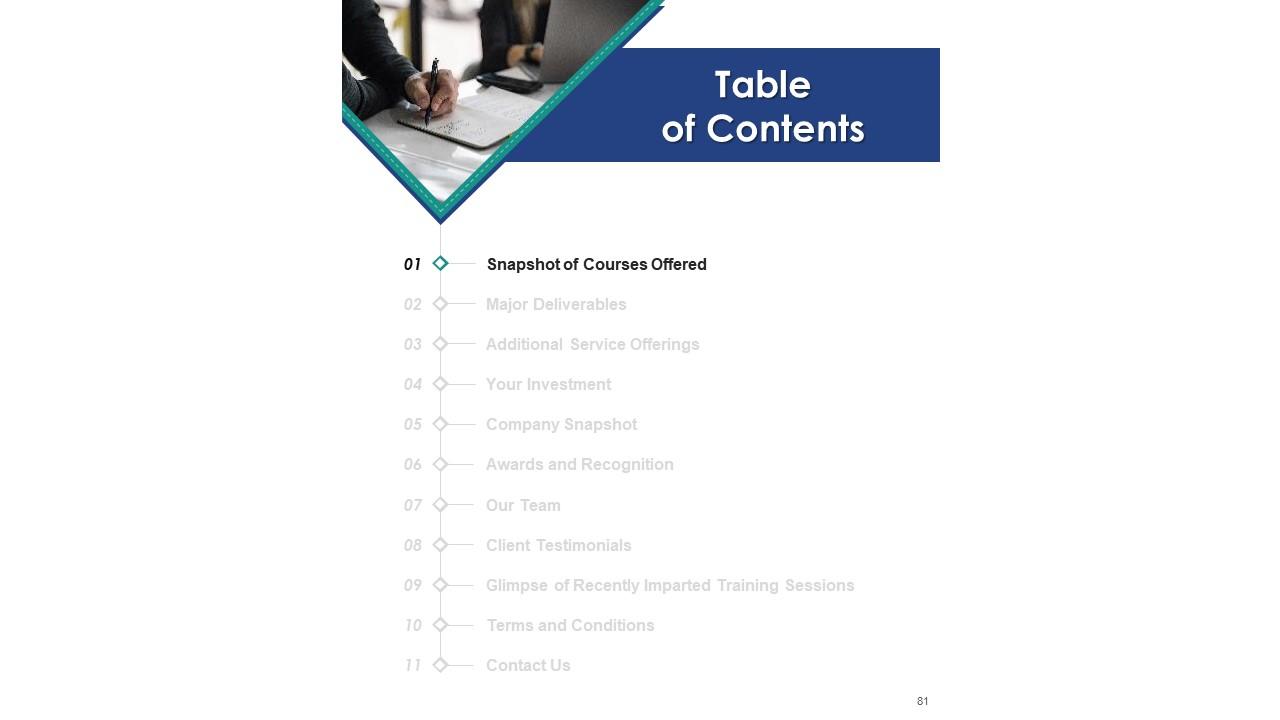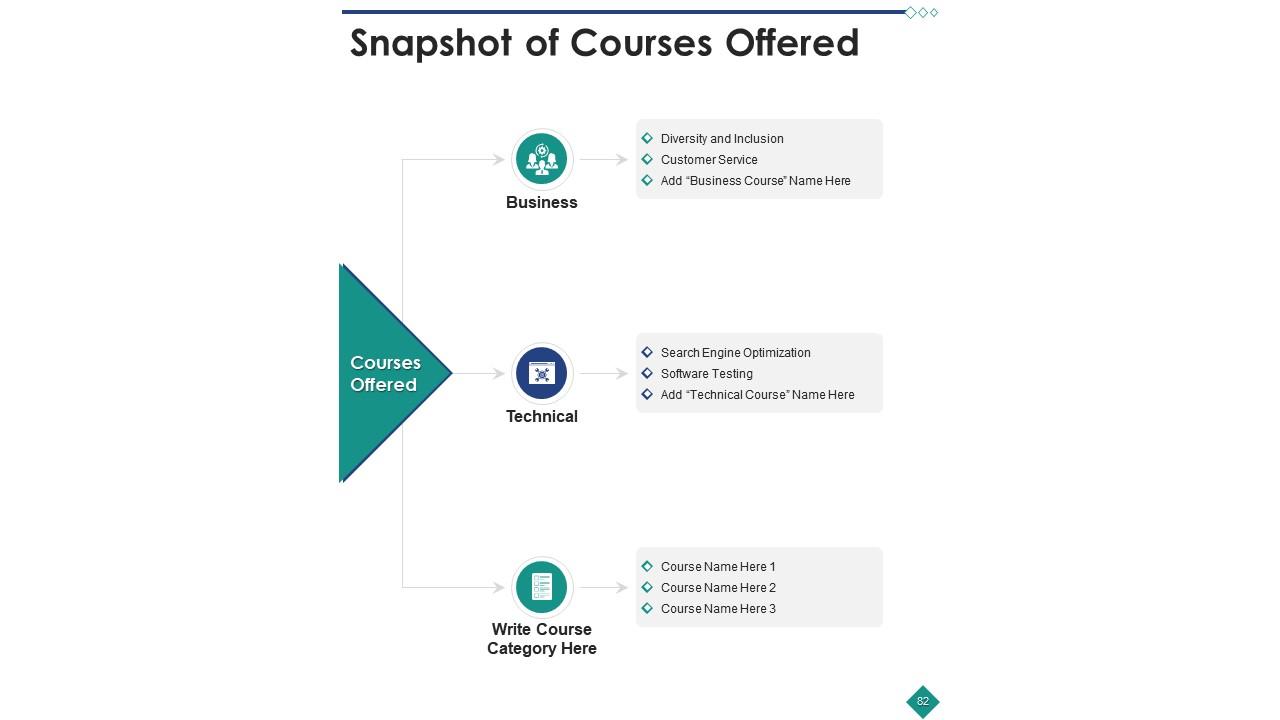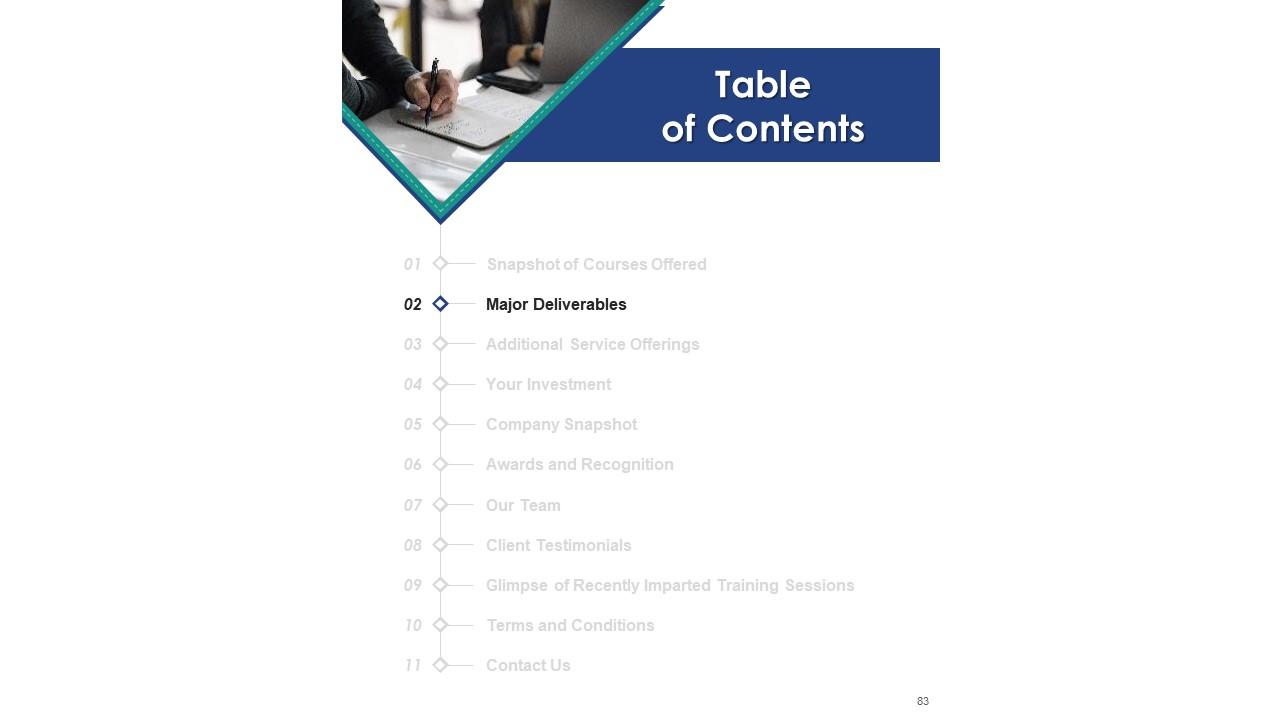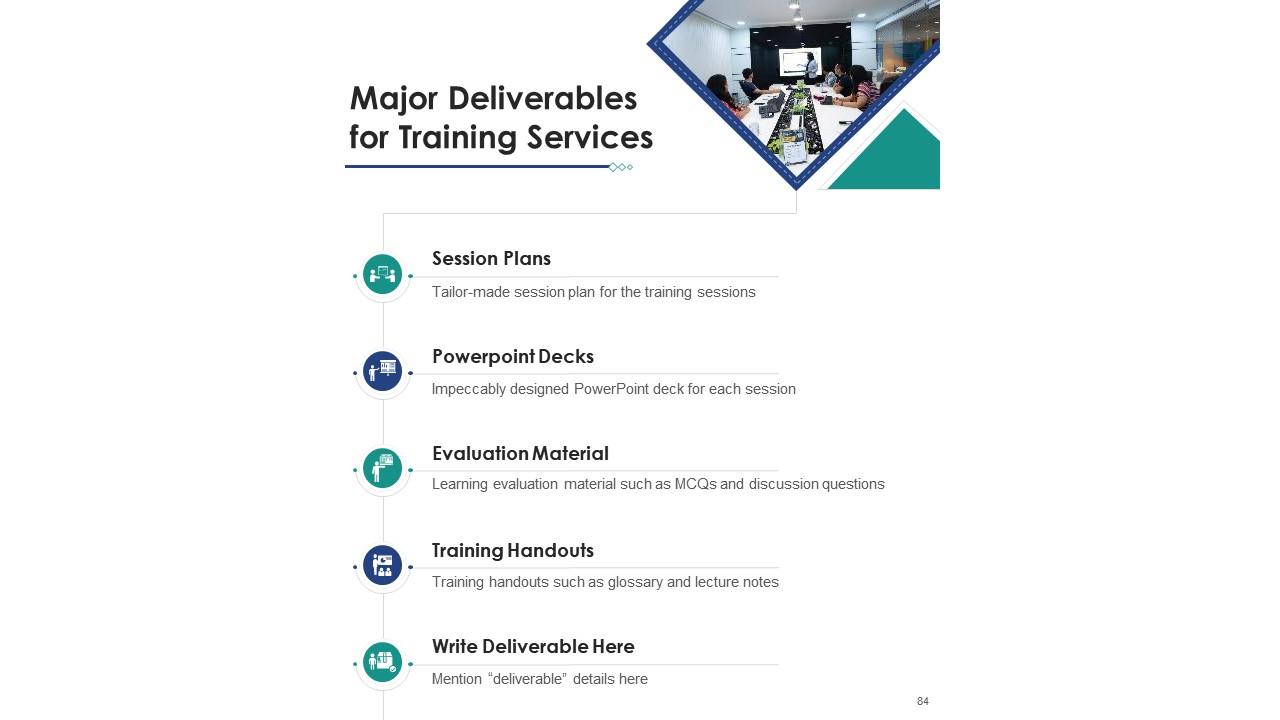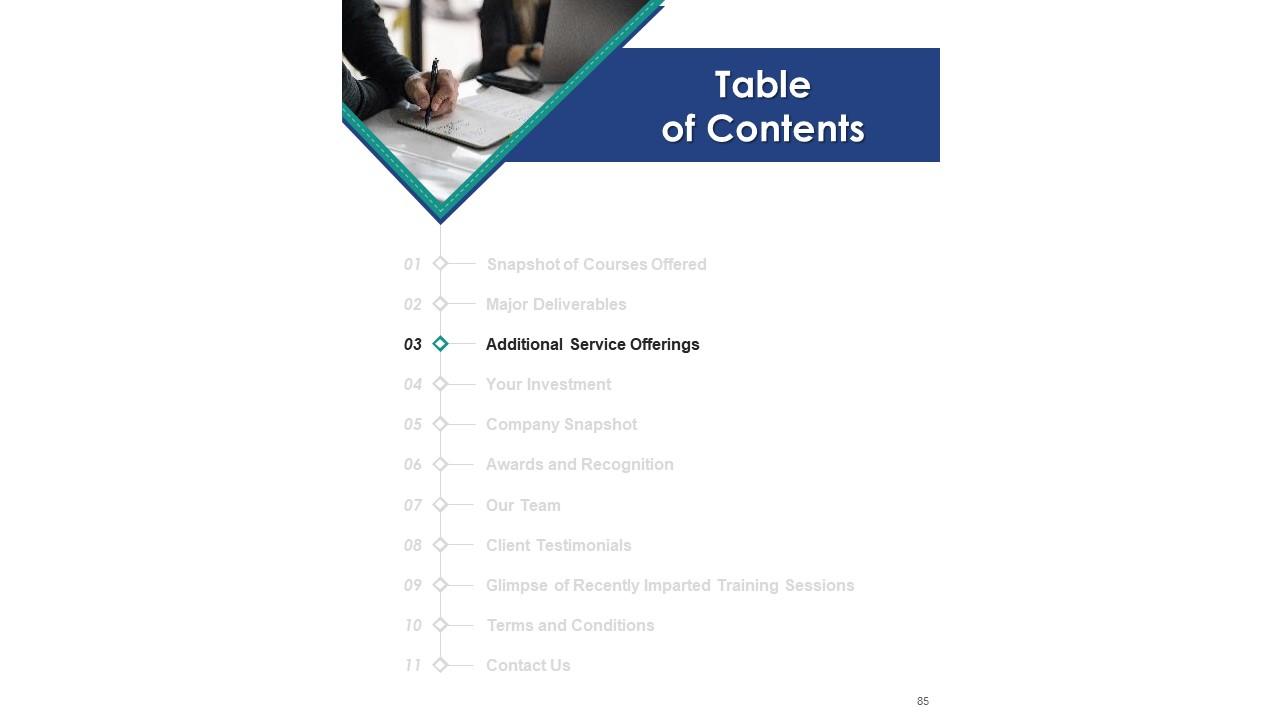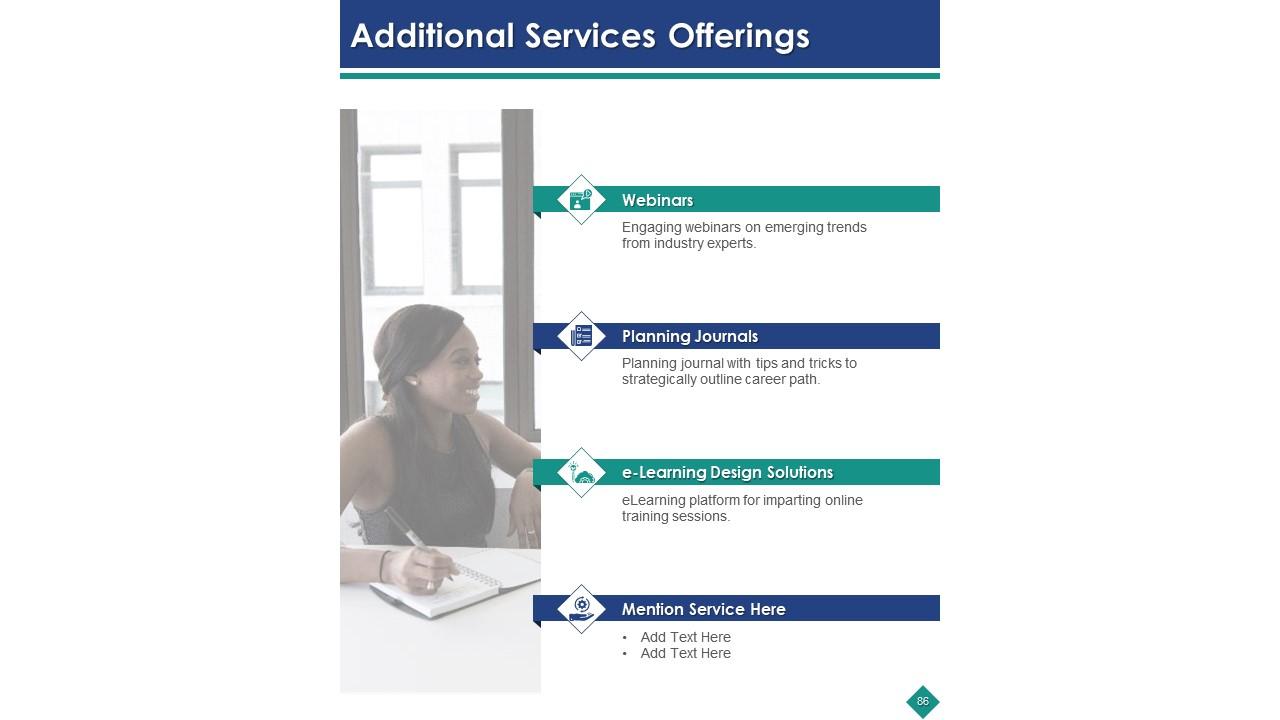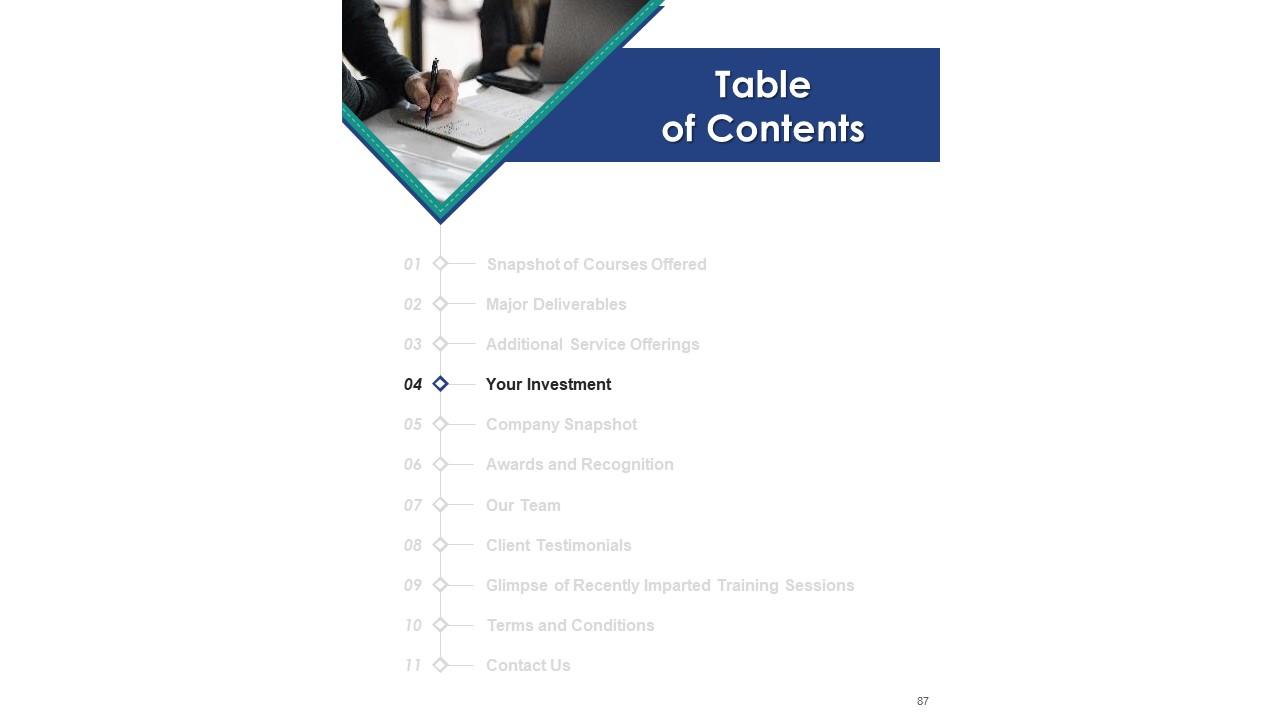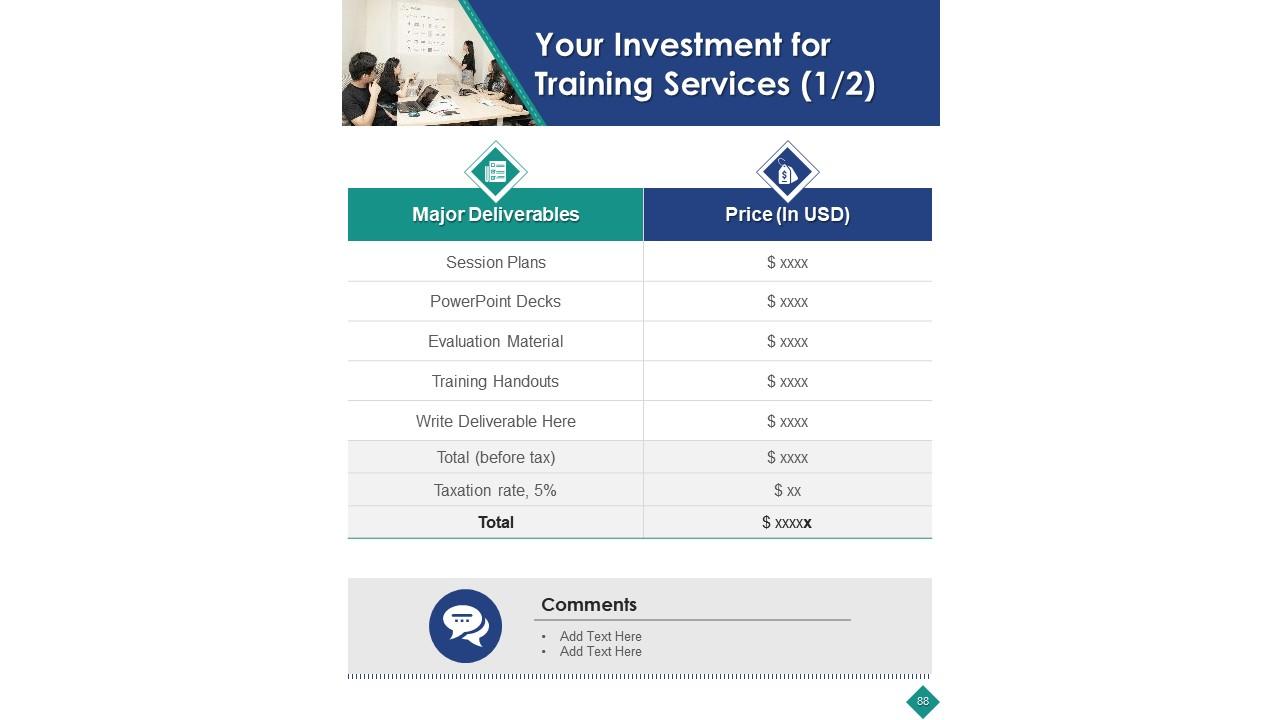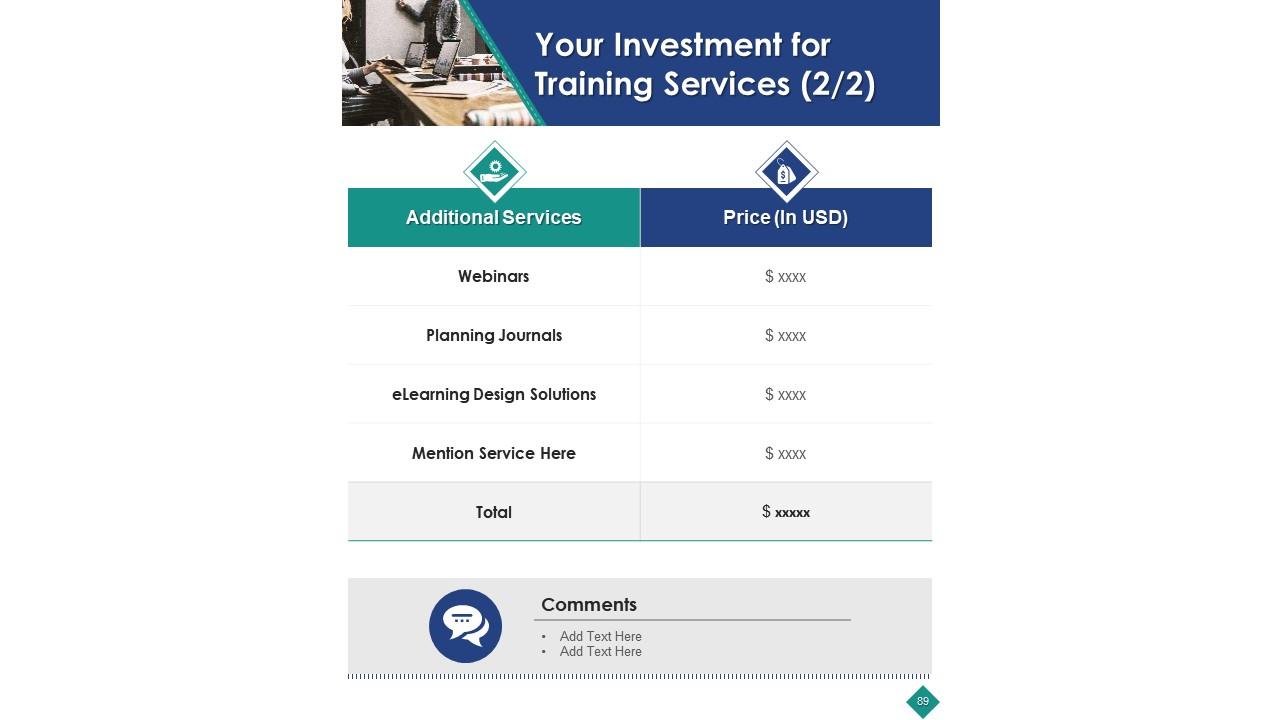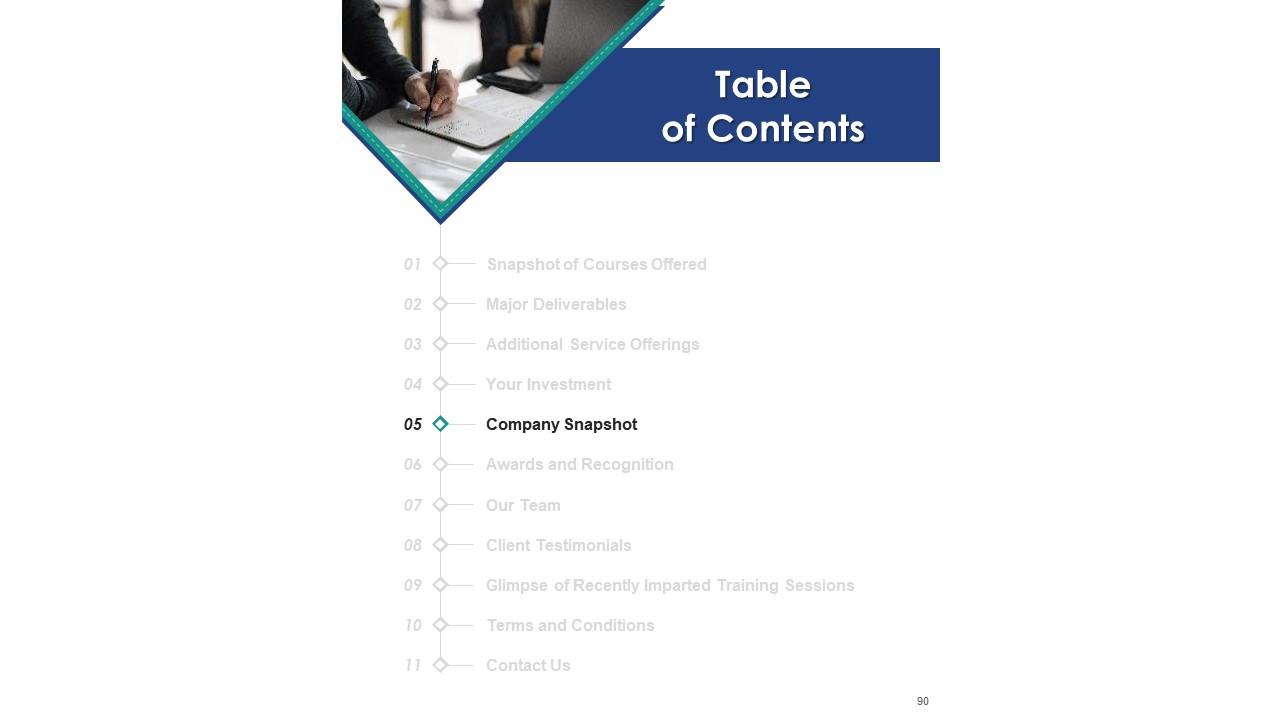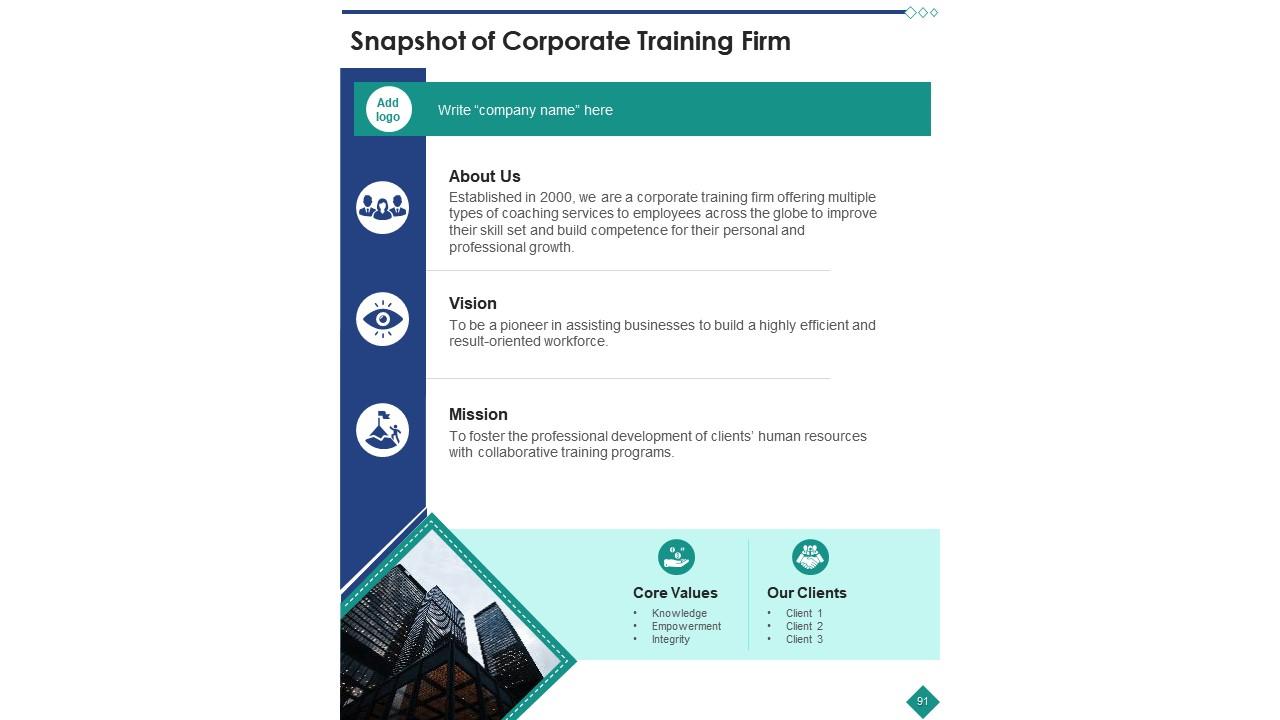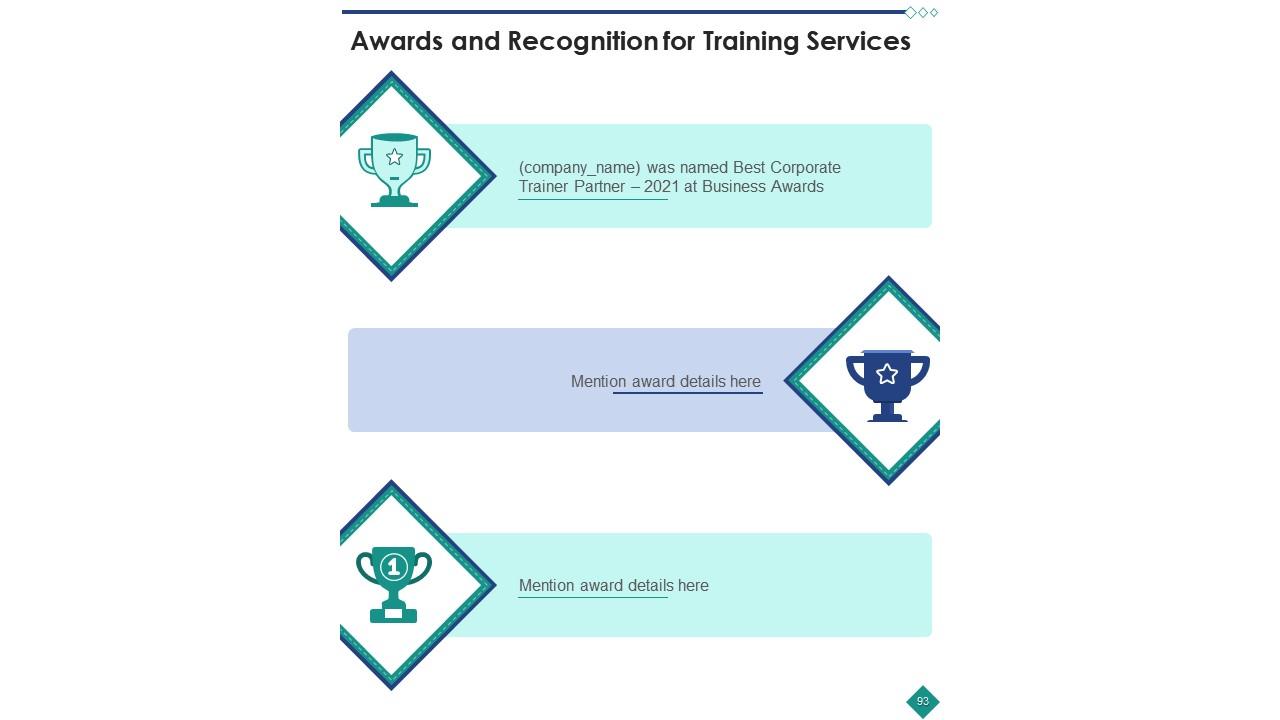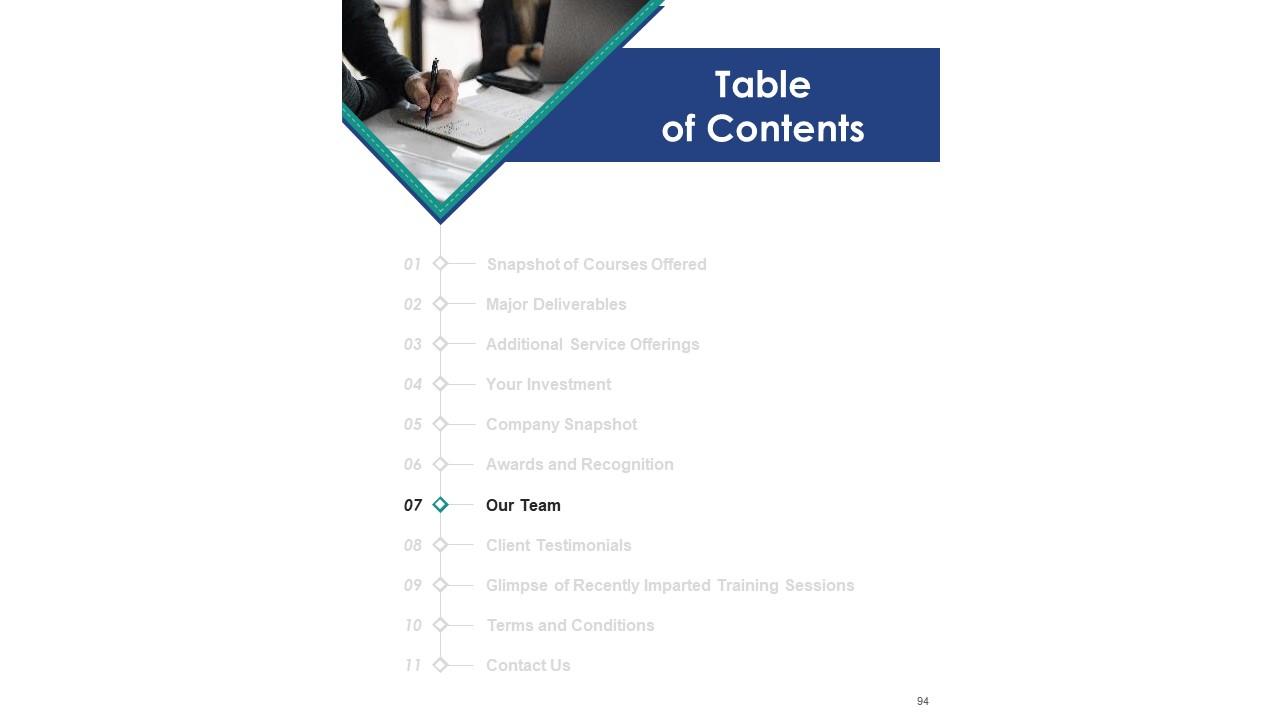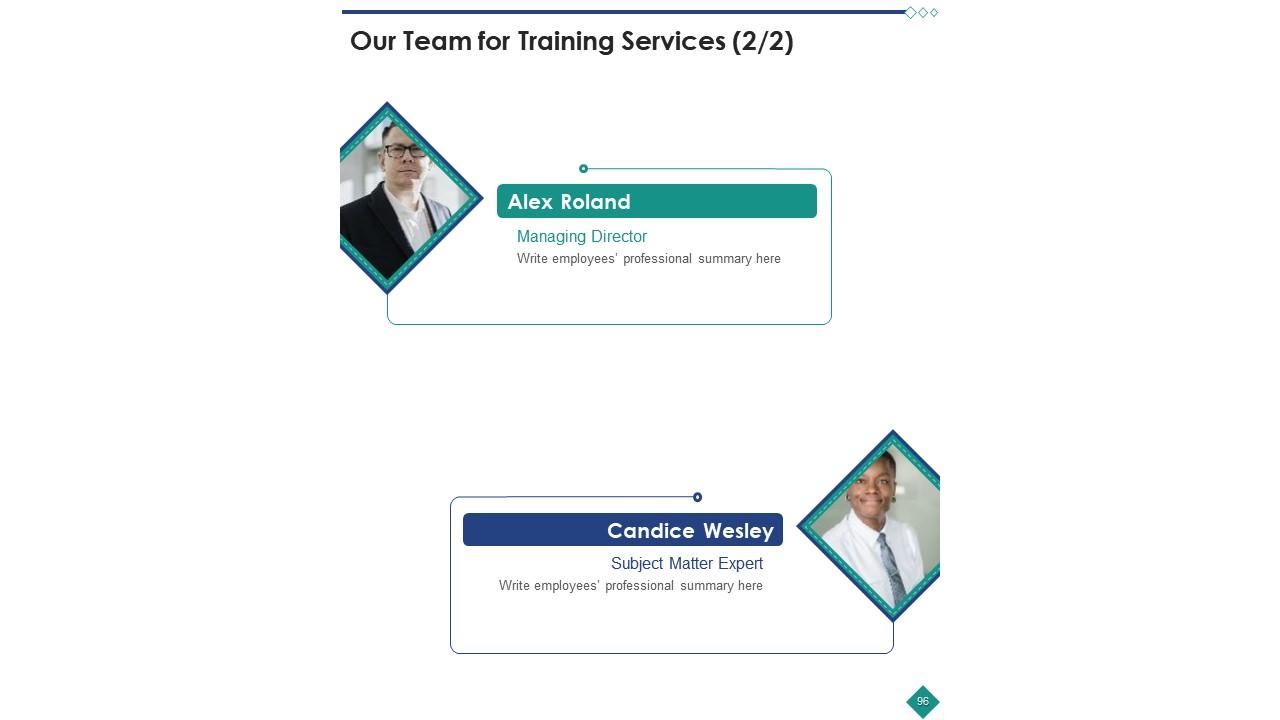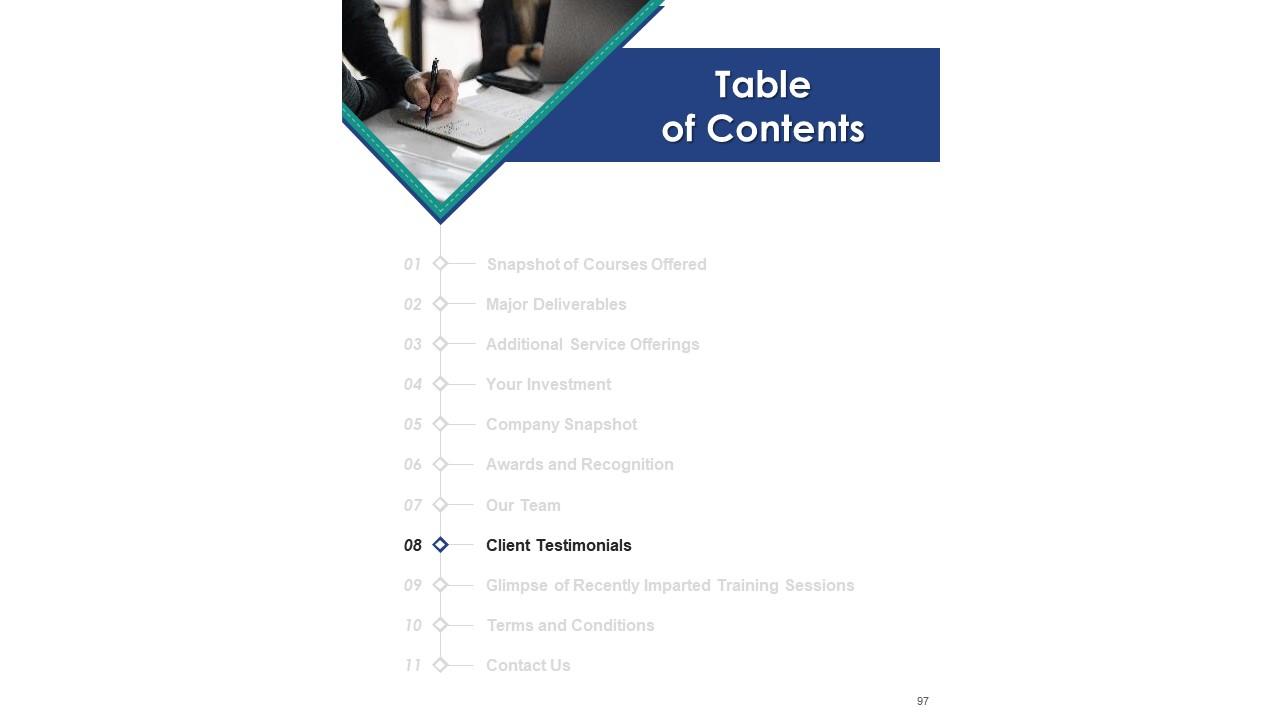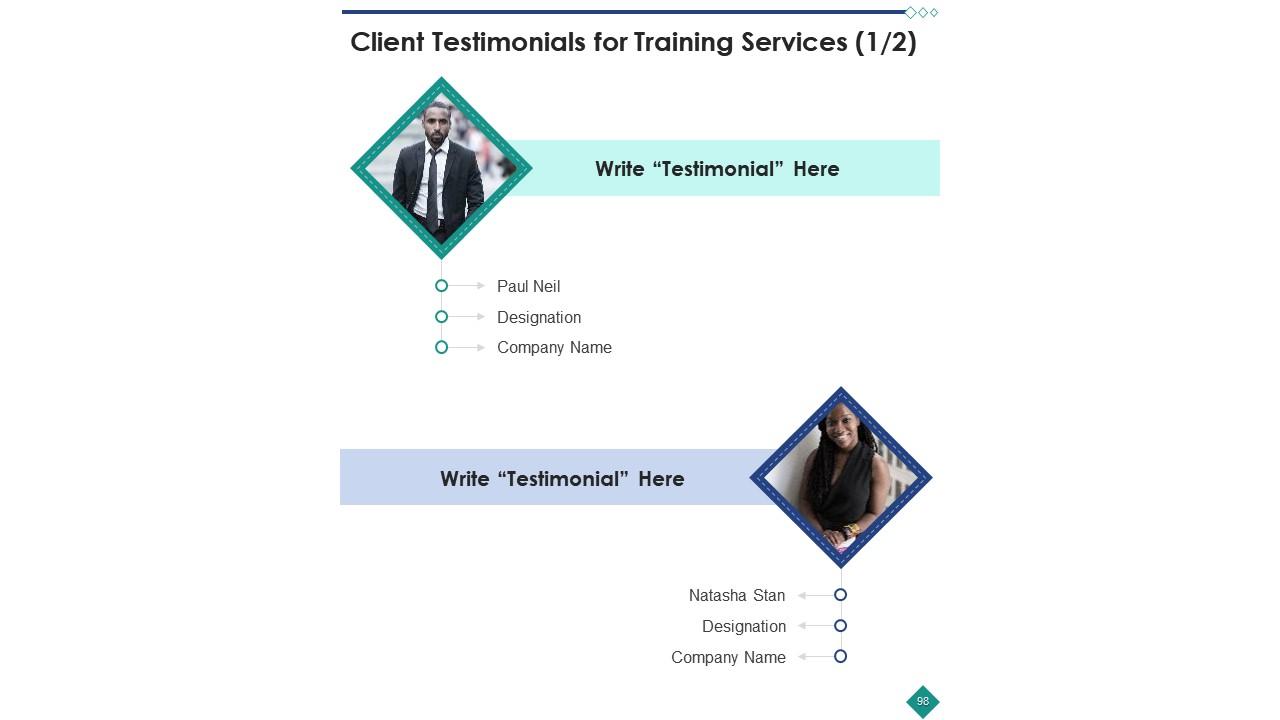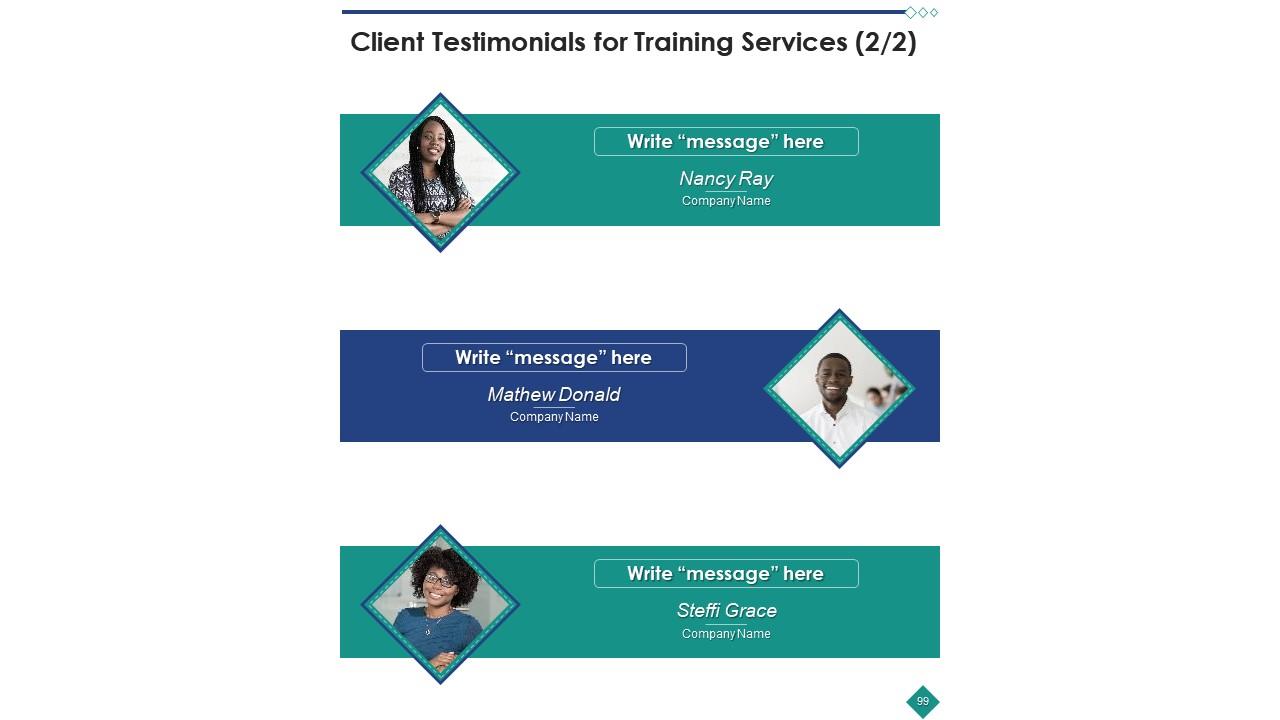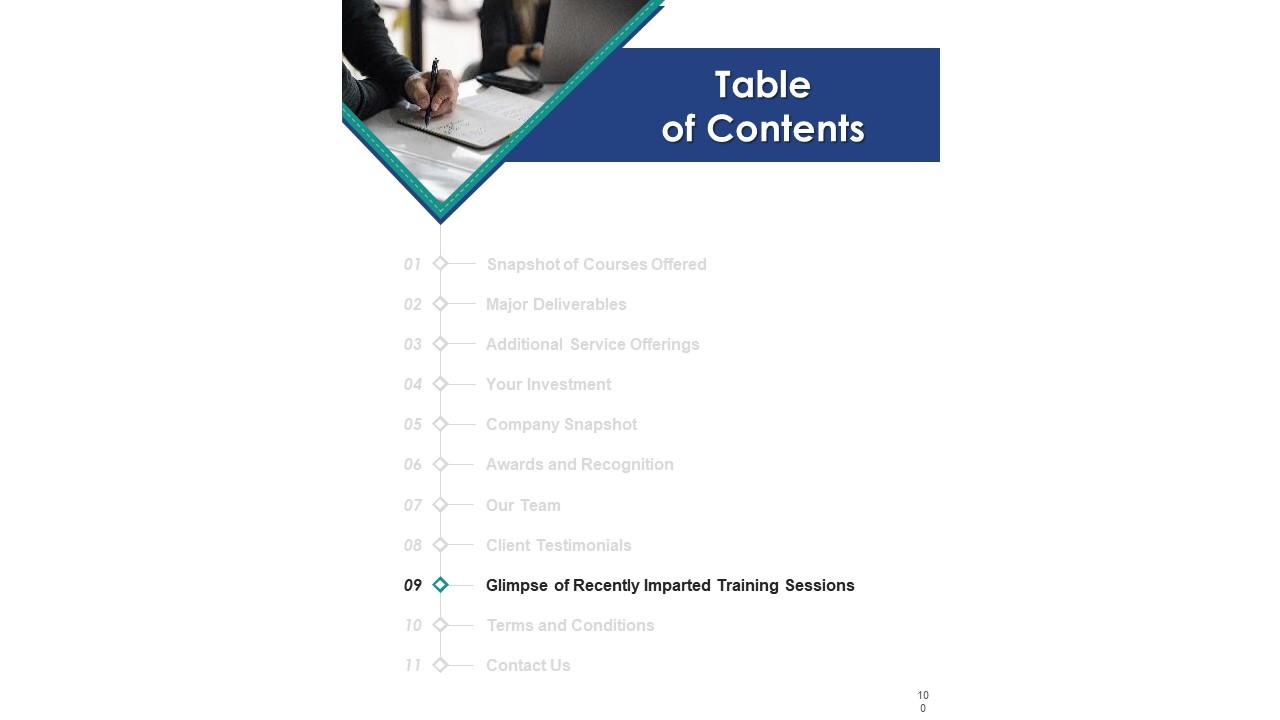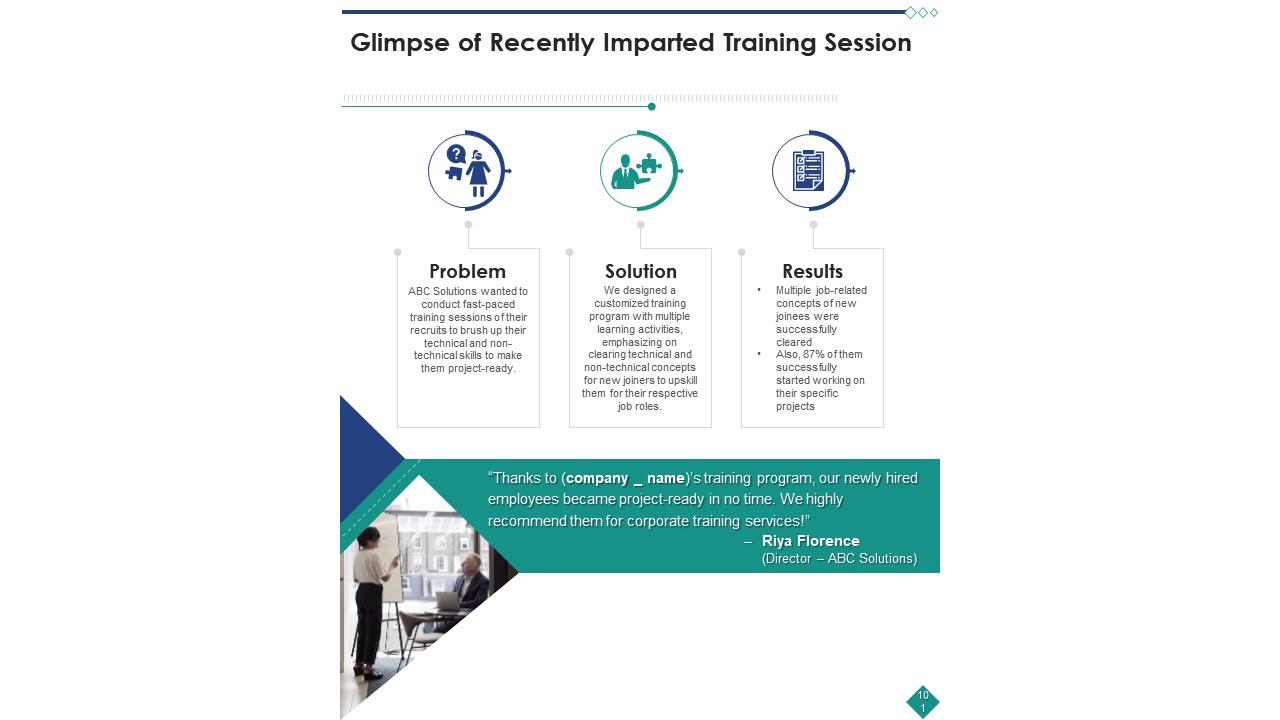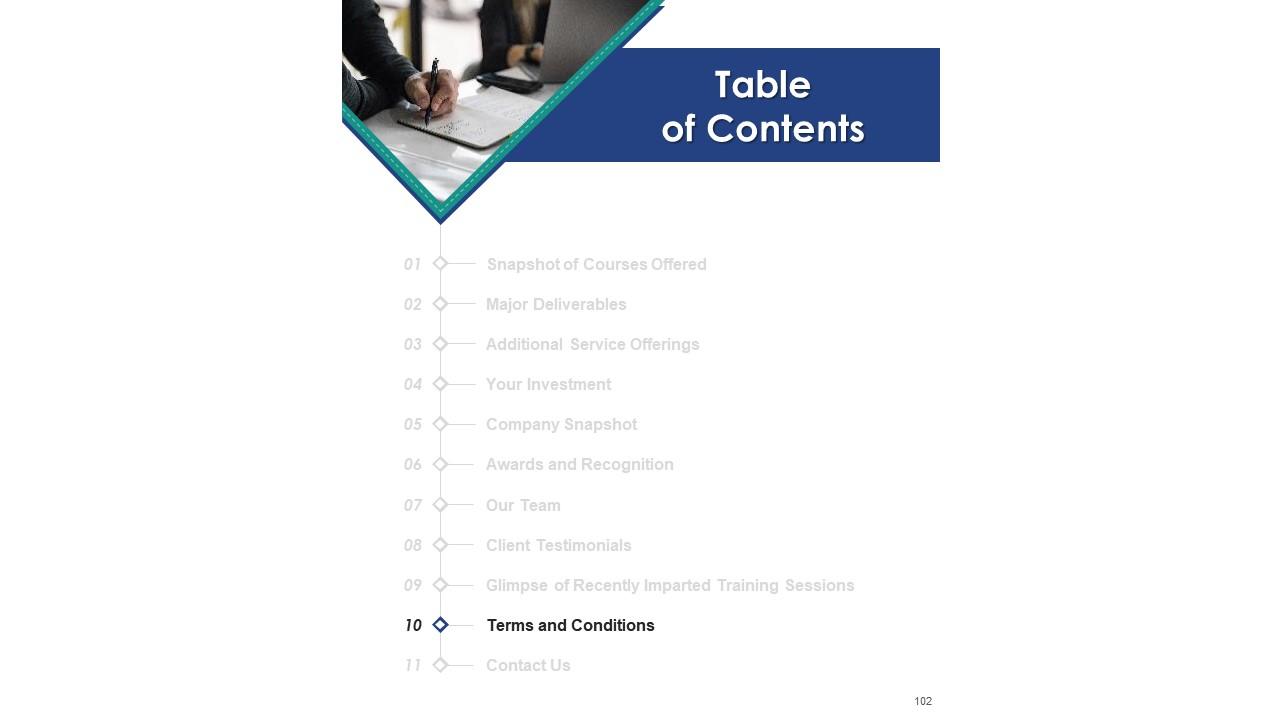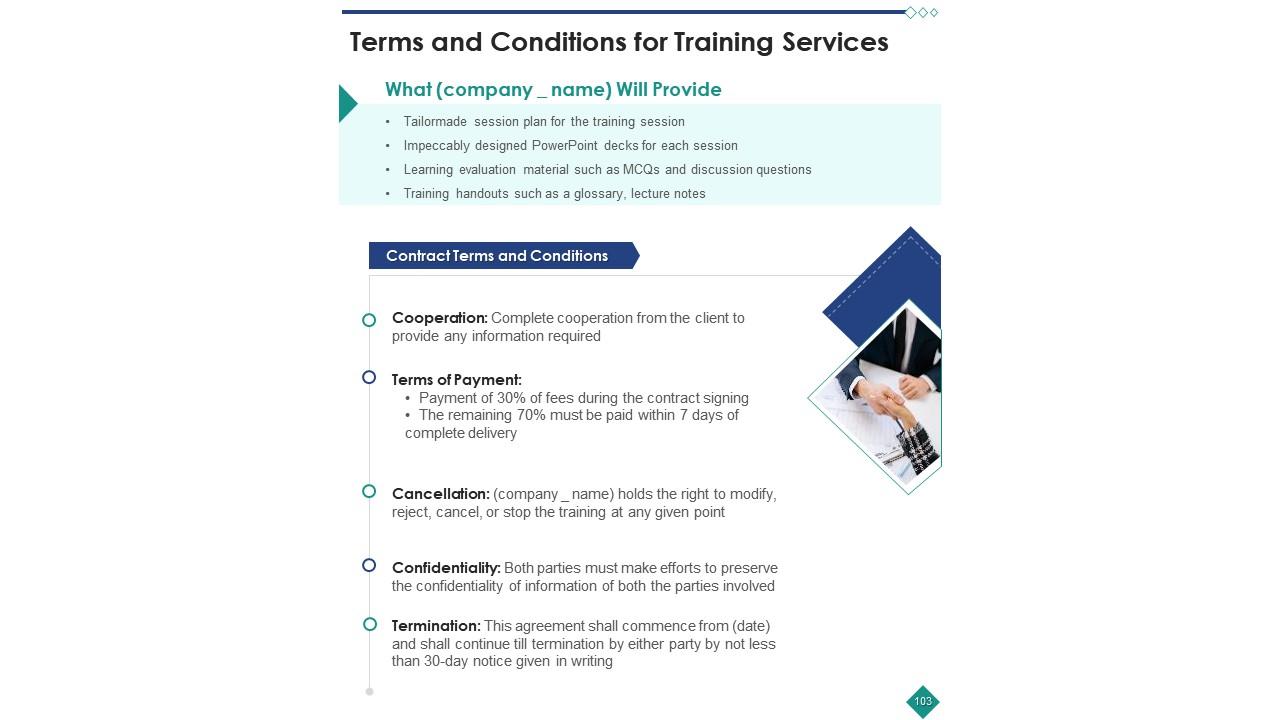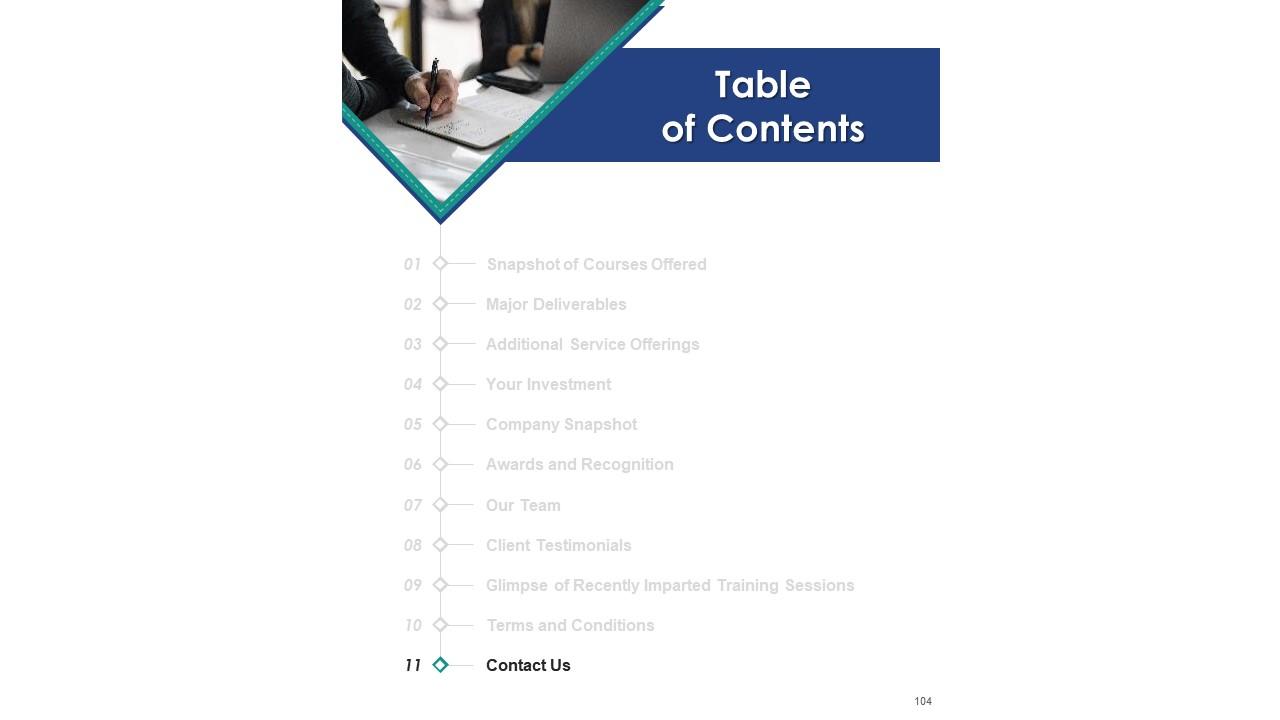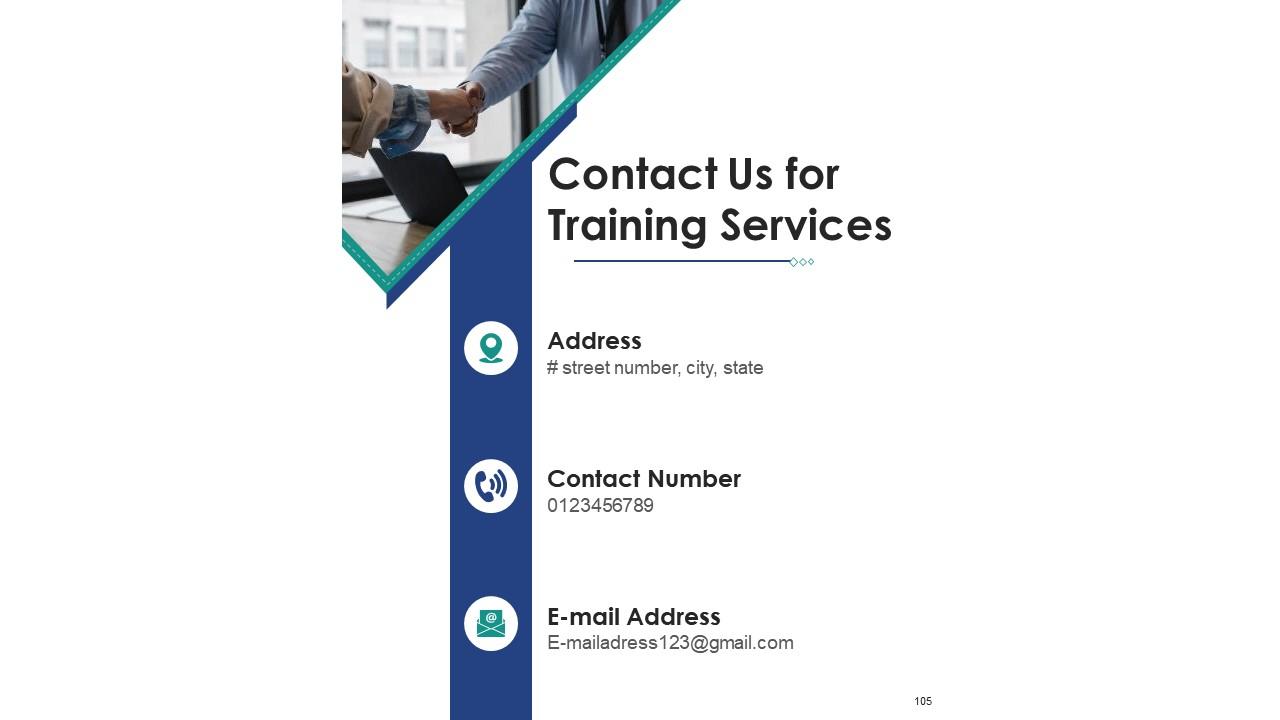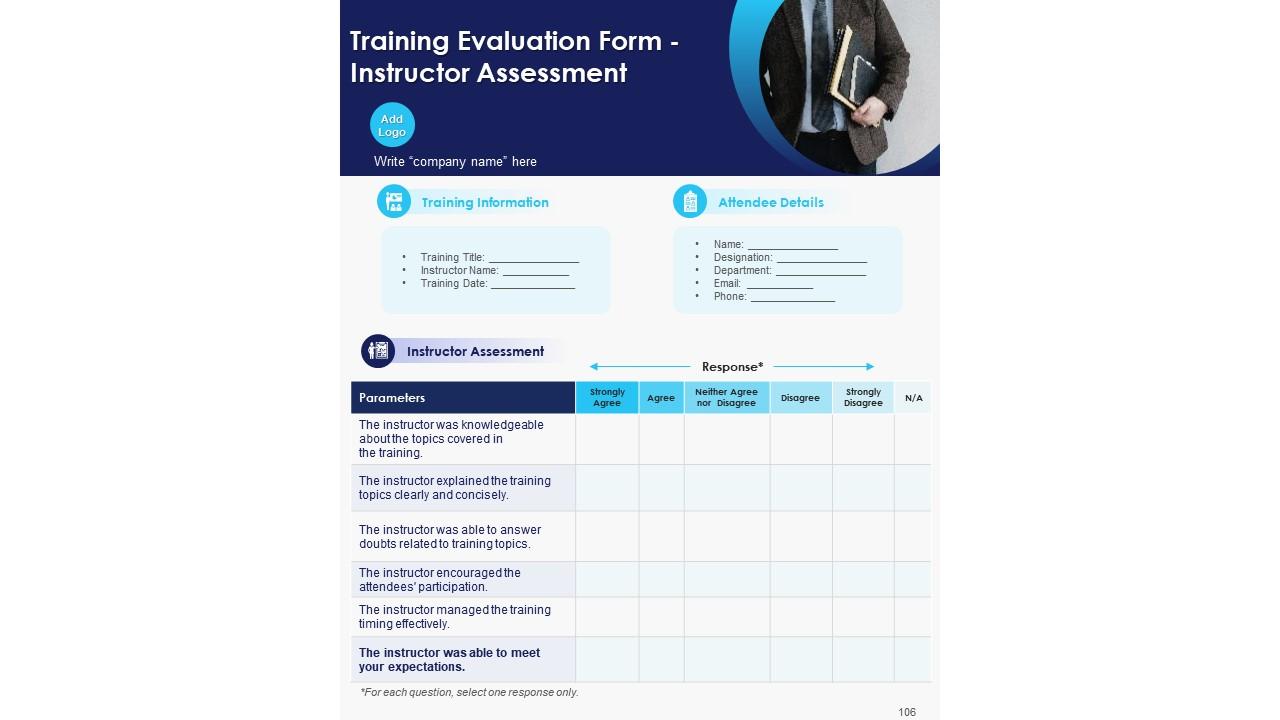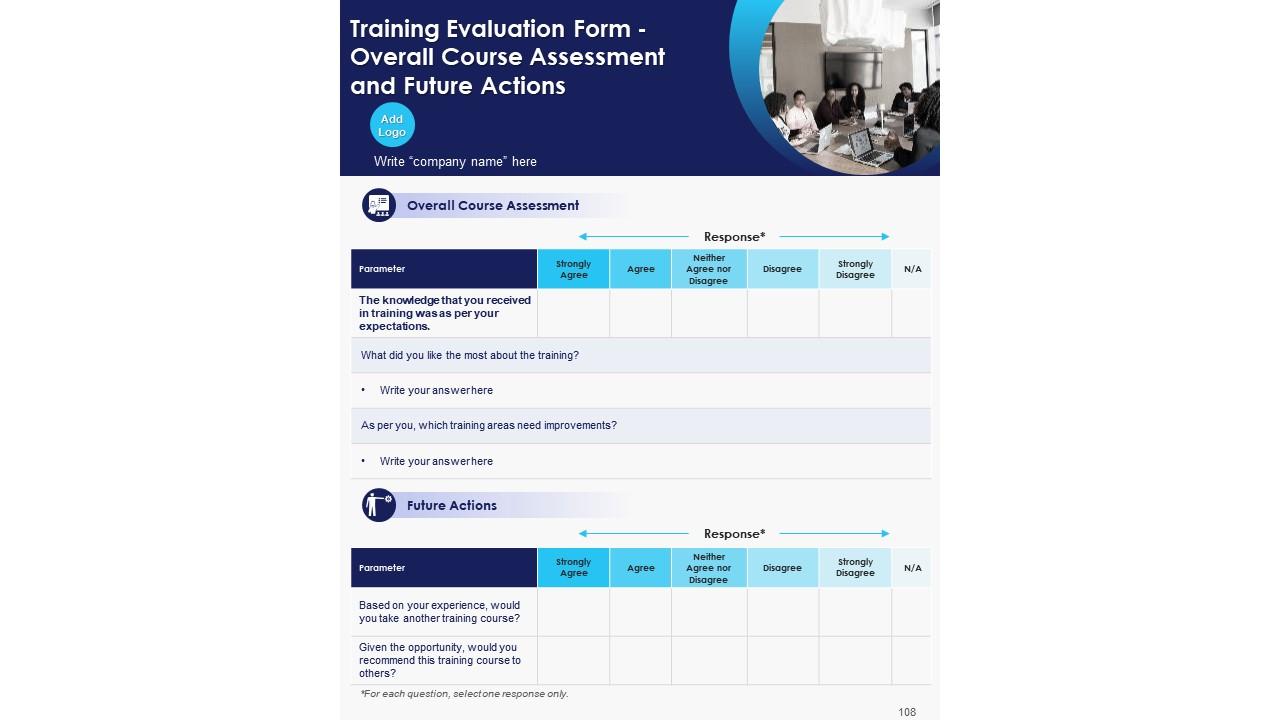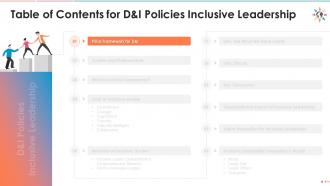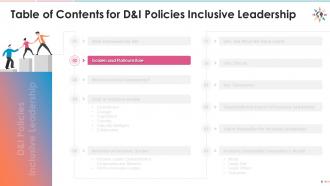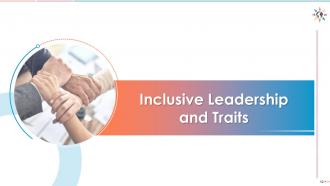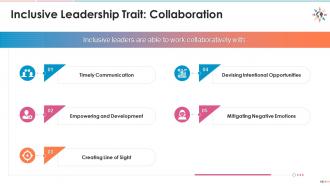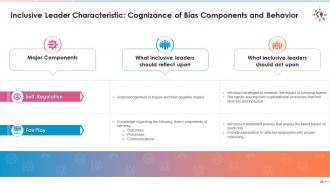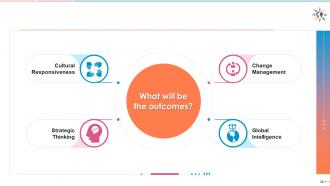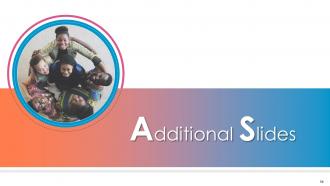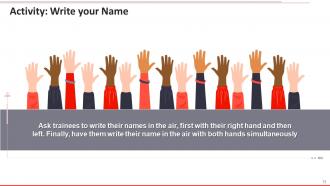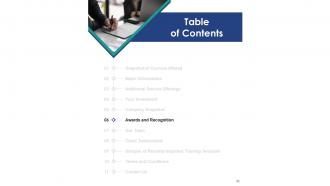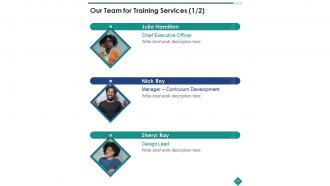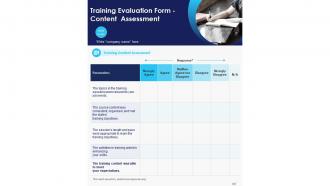Training module diversity and inclusion d and i policy for inclusive leadership edu ppt
This Training Module covers in details the role of leadership in leading the organisation towards a more diverse and inclusive workplace. It starts with popular Pillar Framework for D and I and highlights key aspects of organisation that need to be changed for D and I transformation. It also contrasts Golden and Platinum rule and highlights how Platinum rule needs to be followed to have a more diverse work environment. It then highlights key traits of inclusive leaders, like Curiosity, Cultural intelligence, Collaboration, Commitment, Courage, and Cognizance. The Training Module contains details of D and I policies that an inclusive organisation should have. It also explains Inclusive Leadership Competency Model. This module is designed by experts to deliver a power packed experience to the trainees. Extensive use of graphics, pictures, illustrations and other design elements will add professionalism to your training program. It also contains helpful collaterals like Diversity and inclusion posters, mailers, client proposal template etc.
This Training Module covers in details the role of leadership in leading the organisation towards a more diverse and inclus..
- Google Slides is a new FREE Presentation software from Google.
- All our content is 100% compatible with Google Slides.
- Just download our designs, and upload them to Google Slides and they will work automatically.
- Amaze your audience with SlideTeam and Google Slides.
-
Want Changes to This PPT Slide? Check out our Presentation Design Services
- WideScreen Aspect ratio is becoming a very popular format. When you download this product, the downloaded ZIP will contain this product in both standard and widescreen format.
-

- Some older products that we have may only be in standard format, but they can easily be converted to widescreen.
- To do this, please open the SlideTeam product in Powerpoint, and go to
- Design ( On the top bar) -> Page Setup -> and select "On-screen Show (16:9)” in the drop down for "Slides Sized for".
- The slide or theme will change to widescreen, and all graphics will adjust automatically. You can similarly convert our content to any other desired screen aspect ratio.
Compatible With Google Slides

Get This In WideScreen
You must be logged in to download this presentation.
PowerPoint presentation slides
Presenting Training Module on Diversity and Inclusion D and I Policy for Inclusive Leadership. This presentation deck contains 45 well researched and uniquely designed slides. These slides are 100 percent made in PowerPoint and are compatible with all screen types and monitors. They also support Google Slides. Premium Customer Support available. Suitable for use by managers, employees and organizations. These slides are easily customizable. You can edit the colour, text, icon and font size to suit your requirements.
People who downloaded this PowerPoint presentation also viewed the following :
Content of this Powerpoint Presentation
Slide 3
This slide list down the multiple objectives of “diversity and inclusion policy for inclusive leadership” training session learning outcomes.
Slide 6
This slide covers D&I pillars for offices such as leadership commitment, retention & advancement, recruitment, inclusive culture. It also includes supporting components for D&I such as engage & sustain, and accountability & metrics.
Slide 9
This slide showcases the golden and platinum rule of treatment at workplace. It also contains information pertaining to the utilization of the platinum rule for fostering relationships effectively at work.
Instructor’s Notes:
The platinum rule is more empathetic; hence it is best suited to foster diversity and inclusion in the organization. It can be used at the workplace in the following ways:
- Communication Space: Create an environment for leadership and employees to openly communicate about how one wishes to be treated
- Take and Provide Feedback: Always take and provide constructive feedback to make yourself and others more empathic to the diverse needs of individuals
- Create and Communicate Boundaries: Create (reasonable) boundaries for yourself for acceptable behavior and communicate the same to others. Also, respect boundaries created by others
- Ask Questions: Always ask questions (politely) for improvement, increased sensitivity, and adjustments at the workplace
Slide 10
This slide visually illustrates to bridge the gap between golden and platinum rule of treatment for diversity and inclusion rich environment.
Instructor’s Notes:
Ask these questions to bridge the gap:
•Can you tell me more about how women are provided equal opportunities in your culture?
•Can you help me understand why it would not be possible for you to attend a project-related call at the weekend?
Slide 11
This slide showcases the golden and platinum rule of treatment at workplace. It also contains information pertaining to the utilization of the platinum rule for fostering relationships effectively at work.
Instructor’s Notes:
The platinum rule is more empathic; hence it is best suited to foster diversity and inclusion in the organization. It can be used at the workplace in the following ways:
- Communication Space: Create an environment for leadership and employees to openly communicate about how one wishes to be treated
- Take and Provide Feedback: Always take and provide constructive feedback to make yourself and others more empathic to the diverse needs of individuals
- Create and Communicate Boundaries: Create (reasonable) boundaries for yourself for acceptable behavior and communicate the same to others. Also, respect boundaries created by others
- Ask Questions: Always ask questions (politely) for improvement, increased sensitivity, and adjustments at the workplace
Slide 14
This slide provides information regarding the definition of inclusive leadership. It also contains details of major characteristics of an inclusive leader such as cognizance, curiosity, cultural intelligence, collaboration, commitment, and courage.
Instructor’s Notes:
The key traits of inclusive leaders are:
- Commitment: They exhibit a strong sense of personal responsibility for change to make the work environment rich in diversity and inclusion by regularly challenging the status quo and introducing D&I policies
- Courage: They don't shy away from sharing their opinions (even if politically or culturally unpopular) to achieve better diversity and inclusion at the organization. Also, they have the humility to accept their shortcomings and eagerly seek help from others to overcome them
- Cognizance: They are well aware of their own biases and the organization's limitations and always exert considerable efforts to avoid making subjective decisions to ensure "fair play“
- Curiosity: They have an open mindset and listen to other's perspectives to minimize their blind spots and improve decision-making
- Cultural Intelligence: They have awareness regarding the cultural practices of others and quickly change their management style to accommodate different cultural norms
- Collaboration: They promote diverse thinking and ensure team composition & processes are focused on achieving better cohesiveness
Slide 15
The slide provides information regarding the major characteristics such as fair play, belongingness, and combining intellect and emotions that reflect an inclusive leader's commitment towards creating diversity and inclusion-rich environment.
Instructor’s Notes:
The signals that indicate inclusive leadership commitment are:
- Fair Play: Inclusive leaders have a deep sense of fairness
- Belongingness: They spend time, energy, and resources towards creating a culture of belongingness
- Combining Intellect and Emotions: They can successfully merge the intellect (D&I Business Case) with the emotions of employees (view employees as more than resources)
Slide 16
The slide highlights how an inclusive leader showcases courage such as challenge, personal risk-taking, recognizing limitations, learning from mistakes, and being accountable to make the work environment diverse and inclusion-rich.
Instructor’s Notes:
The inclusive leaders exhibit courage in the following way:
- Challenge: They regularly challenge the preexisting cultural norms of the organization
- Personal Risk-Taking: They act on their convictions & personal principles without any fear of backlash
- Recognize Limitations: They recognize their limitations and actively seek feedback to improve themselves
- Learn from Mistakes: They admit mistakes and learn lessons from them
- Being Accountable: They hold themselves and others responsible in case of failure to achieve any set D&I objective
Slide 17
The slide provides information regarding the inclusive leader’s trait, i.e. awareness of biases. It also contains details of disruptions caused by individual and organizational biases and how inclusive leaders overcome them.
Slide 18
The slide highlights how an inclusive leader showcases courage such as challenge, personal risk-taking, recognizing limitations, learning from mistakes, and being accountable to make the work environment diverse and inclusion-rich.
Instructor’s Notes:
The inclusive leaders are curious since they are:
- Life-Long Learners: They are lifelong learners as they are genuinely interested in learning new things
- Open-Minded: They support new ideas and promote diverse thinking in team members
- Engage in Questioning: They engage in respectful questioning to understand different perspectives of team members
- Make No Quick Judgments: They refrain from making quick judgments
Slide 19
This slide provides information regarding the cultural intelligence trait of an inclusive leader by showcasing how they promote cultural competence.
Slide 20
This slide provides information regarding the techniques followed by the inclusive leader to achieve better collaboration at work, such as timely communication, empower and development, devise intentional opportunities, and mitigating negative emotions.
Instructor’s Notes:
The inclusive leaders ensure collaboration at work
- Timely Communication: By clearly communicating needs in a timely manner
- Empowering and Development: By empowering and developing employees by providing opportunities and appreciating good work
- Creating Line of Sight: Ensuring a clear line of sight to provide purpose and meaning to each employee at work
- Devising Intentional Opportunities: By intentionally creating opportunities for innovation
- Mitigating Negative Emotions: By understanding how different individuals respond to change and, hence, mitigating their negative emotions accordingly
Slide 23
This slide showcases the major components of trait commitment in an inclusive leader such as personal values and faith in D&I business case. It also includes details of points along which an inclusive leader must think and behave to make the work environment diversity- and inclusion-rich.
Slide 24
This slide showcases the major components of courage in an inclusive leader such as humility and bravery. It also includes details of points along which an inclusive leader must think and behave to make the work environment diversity- and inclusion-rich.
Slide 25
This slide showcases the major components of cognizance in an inclusive leader such as self-regulation and fair play. It also includes details of points along which an inclusive leader must think and behave to make the work environment diversity- and inclusion-rich.
Slide 26
This slide showcases the major components of curiosity in an inclusive leader such as perspective thinking and managing with uncertainty. It also includes details of points along which an inclusive leader must think and behave to make the work environment diversity- and inclusion-rich.
Slide 27
This slide showcases the major components of cultural intelligence in an inclusive leader such as knowledge and adaptability. It also includes details of points along which an inclusive leader must think and behave to make the work environment diversity- and inclusion-rich.
Slide 28
This slide showcases the major components of cultural intelligence in an inclusive leader such as empowerment, teaming, and voice. It also includes details of points along which an inclusive leader must think and behave to make the work environment diversity- and inclusion-rich.
Slide 29
The purpose of this slide is to highlight the multiple don’ts that an inclusive leader should follow while working towards making work environment D&I rich.
Instructor's Notes:
Inclusive leaders don’t do the following:
- Set platform for “shame backfire”: Avoid asking victimized individuals publicly about the harassment they faced because they may not share anything out of shame. Instead, ask more discreetly without disrespecting their privacy
- Create a “kumbaya” scenario in a group meeting: Avoid conducting D&I activities without prior planning as any sly remark regarding gender, race, or sexual orientation will lead to loss of trust in the leader
- Ask BIPOC employees to retell their struggles: Don’t ask BIPOC (Black, Indigenous, and People of Color) to retell their struggles to educate others. As an inclusive leader, it’s one’s responsibility to be aware of their concerns and taking actions to resolve them
- Hire for culture fits: As an inclusive leader, don’t hire candidates for culture fit but hire for culture adds. A culturally fit candidate means an individual who has previously worked in a similar environment. In contrast, a candidate from a different culture will bring a new perspective to break the homogeneity of the organization
- Make Performative Statements: Don’t just make performative statements about allyship; instead, devise and implement D&I policies that bring ground-level change
- Avoid Hard Questions and Hard Truths: Before taking any D&I-related change initiative, ask the hard questions and listen to the hard truths from employees to fully comprehend the situation. Always remember what gets understood, gets measured, and eventually gets accomplished
Slide 32
This slide highlights the competency model for inclusive leadership to ensure the workplace is diversity and inclusion rich.
Slide 33
This slide provides information regarding how the inclusive leader leads self, such as pursue self-awareness, develop trust, delegate authority, embrace uncertainty, and leverage privileges.
Instructor’s Notes:
Inclusive leader leads self in the following ways to make organization D&I rich:
- Pursues Self Awareness: Has complete awareness about the impact of biases on individual and team perception, decision-making, and performance
- Develops Trust: Ensure fair play and take continuous feedback to build mutually beneficial relationships with others
- Delegates Authority:
- Encourage others to share perspectives irrespective of age, gender, and race
- Also, comfortably share power and credit with others
- Embraces Change: Act as a change agent and break policies that promote homogeneity in the organization
- Leverages Privileges: Utilize their power and position to achieve organization's D&I goals
Slide 34
This slide provides information regarding how the inclusive leader leads others, such as talent optimization, team building, relationship management, communication skills, and cultural competency.
Instructor’s Notes:
Inclusive leaders lead others in the following ways to make organization D&I rich:
- Talent Optimization: Seek heterogeneity in team compositions by hiring people from diverse backgrounds
- Team Building: Conduct D&I activities such as pot luck lunches to build high cohesiveness among team members
- Relationship Management: Strategically maintain relationships both inside and outside the organization to foster diversity and inclusion
- Communication Skills: Develop communication channels (both written and verbal) to quickly share knowledge, concerns, and new ideas without any judgments
- Cultural Competency: Develop an understanding of other cultures by actively engaging with employees from different gender, race, region, age group, etc.
Slide 35
The purpose of this slide is to showcase the expected results of the inclusive leadership competency model such as cultural responsiveness, change management, strategic thinking, global intelligence and business acumen.
Instructor’s Notes:
The expected outcomes of the inclusive leadership competency model are as following:
- Cultural Responsiveness: Organizational will become more heterogeneous with the workforce from diverse cultures bringing fresh perspectives
- Change Management: Inclusive leadership brings D&I change in the organization, making the workplace more engaging and enabling employees to contribute to their full potential
- Strategic Thinking: New ideas will enable strategic thinking and will provide a competitive edge to the business
- Global Intelligence: Knowledge regarding the region-specific cultures will enable the organization to encash global business opportunities
Slide 37
The purpose of this slide is to showcase the negative impact of poor D&I on organization capabilities.
Slide 38
The slide is to highlight the positive impact of good D&I on organization capabilities.
Slide 39
This slide visually presents how an inclusive leader helps improve diversity and inclusion to enhance organizational capabilities.
Slide 41
This slide showcases the impact of inclusive leadership on business in achieving set financial targets, business outcomes, and improvement in overall performance.
Slide 43
This slide depicts the summary of the inclusive leadership session. It also contains information regarding the key traits of an inclusive leader such as commitment, courage, cognizance, curiosity, cultural intelligence and collaboration.
Slide 49
This slide showcases the activities calendar to promote diversity and inclusion at the workplace. It includes details of each activity along with the date on which it will be conducted.
Instructor’s Notes:
- Potluck Lunch: Organize inter-team lunch in which employees will bring food items of their respective cultures
- Look At the Book: Allocate influential D&I books to employees and ask them to share their learnings on the day of the event
- Organize Team Party: Organize a team party where employees can get to know each other better in an informal environment
- Diversity Week: Organize diversity week in which employees from different departments will spread awareness about D&I importance using the visual medium
Slide 50
This slide showcases the posters to promote diversity and inclusion at the workplace.
Slide 51
This slide showcases the posters to spread awareness regarding diversity and inclusion at the workplace.
Slide 52
This slide showcases the poster to promote and spend awareness regarding cultural diversity in the organization.
Slide 53
This slide consists of a sample employee mailer for diversity and inclusion promotion in the organization.
Slide 54
This slide illustrates the employee mailer poster for diversity and inclusion awareness in the organization. It provides information regarding the advantages of High D&I.
Slides 62-77
These slides contain multiple energizer activities to keep the participants’ energy levels high throughout the session duration. They are carefully chosen to keep the participants attentive, engaged and energized. These activities are accompanied by detailed instructor notes for a successful conduct.
Sides 78-105
These slides contain a detailed proposal that can be shared by the trainer/agency with the potential clients. This sample proposal is designed to reflect trust, experience and professionalism. This comprehensive sample proposal contains sample slides like Course Snapshot, Major Deliverables, Investment Required, Company Profile, Awards and Recognition, Client Testimonials, Terms and Conditions and much more
Slide 79
This slide highlights the cover letter for the training proposal. It includes details regarding what the company providing corporate training can accomplish for the client.
Slide 82
The purpose of this slide is to showcase the multiple types of courses offered by the training company.
Slide 84
This slide indicates the major deliverables that the corporate training firm will provide to the client. The key deliverables highlighted are session plans, PowerPoint deck, evaluation material, and training handouts.
Slide 86
This slide represents the multiple additional services offered by the training firm to the client, such as webinars, planning journals, and e-learning design solutions.
Slide 88
This slide tabulates the major deliverables offered by the training company to the client along with their associated costs.
Slide 89
The purpose of this slide is to highlight the multiple additional services offered by the training firm along with their cost details.
Slide 91
This slide provides an overview of the corporate training firm's vision and mission statements, core values, and key clients.
Slide 93
This slide highlights the major awards and recognition won by the training firm for their exceptional service to clients.
Slide 95
The slide provides information regarding the team members that would be providing the training services to the client. It includes details of the trainer and their respective designations.
Slide 96
The slide provides information regarding the team members that would be providing the training services to the client. It includes details of the employees’ names and their respective designations.
Slide 98
This slide provides information pertaining to testimonials given by satisfied clients of the training firm.
Slide 99
This slide highlights the testimonials from multiple satisfied clients of the training firm providing information regarding congratulatory messages, client name, and company details.
Slide 101
This slide showcases the case study for the training proposal. It includes information regarding the problem faced by the client and solutions offered by the training firm. It also covers details of the results and client testimonial.
Slide 103
This slide provides information regarding the contract terms and conditions of the training proposal. It also includes details of deliverables that the training company will provide to the client.
Slide 105
The purpose of this slide is to provide the contact information of the corporate training firm. It includes the firm’s official address, contact number, and email address.
Slide 106
This slide highlights the training evaluation form for instructor assessment. It also includes sections to fill details of training information and attendee details.
Slide 107
This slide showcases the questions for the assessment of the training content by the attendees.
Slide 108
The slide indicates the evaluation form for course assessment. It also includes questions pertaining to the future actions of the attendees.
Training module diversity and inclusion d and i policy for inclusive leadership edu ppt with all 108 slides:
Use our Training Module Diversity And Inclusion D And I Policy For Inclusive Leadership Edu Ppt to effectively help you save your valuable time. They are readymade to fit into any presentation structure.
-
Informative presentations that are easily editable.
-
Easily Editable.
-
Commendable slides with attractive designs. Extremely pleased with the fact that they are easy to modify. Great work!
-
Easily Understandable slides.


